IMMEASURABLE SITES
What methods of spatial valuation undergird the disciplines of architecture and urban design? How are these systems of measurement entangled with discursive and material regimes of racialization, ecological degradation, and coloniality? This course considers sites and practices that travel beyond disciplinary rubrics of measurement. We will examine tactics of opacity, occlusion, and abstraction, in the visual and conceptual arts; paying special attention to nonwestern concepts and sites that are illegible to the ethnographic gaze. Thinking and working against epistemologies of measurement, classification, and bordering, requires developing transdisciplinary knowledge of black studies, decoloniality, contemporary art, and cultural geography. Each week’s readings will be split in half between practices of measurement that have been central to the discipline of architecture and extra-disciplinary concepts of immeasurability.
Instructor:
Emanuel Admassu
Columbia University
GSAPP | A4047-1
Spring 2023
114 Avery
Wednesdays
11:00 a.m. — 1:00 p.m.
Schedule:
1/18 – Introduction
1/25 – Nomadic Images
2/1 – Ideas Travel
2/8 – Archives of Animism
2/15 – Who is Ordinary?
2/22 – Presentations
3/1 – Presentations
3/8, 3/15 –Kinne Week & Spring Break
3/22 – (Il)legible Form
3/29 – Algorithmic Disciplines
4/5 – Beyond Measure
4/12 – Presentations
4/19 – Presentations
CAPIO (LATIN)
transitive verb: I take hold of, I take possession of, I possess.
“Both person (the assumption that the enslaved has a will renders the Owner’s right to deploy total violence acceptable and necessary) and a thing (a captive body much like a horse, as Marx highlights when describing the specificity of slave labour)” -
Denise Ferreira da Silva
The Mind and Body of a Slave, the duality of its existence and the reciprocacity of its being - Thing and Human is recognized across the workings of a Colonial, Racial, the Juridical (The State and The Patriarch) and Capital World. Within this duality exists a juxtaposition, despite being recognised as property it does not abide by the laws of natural or artificial, as for Humanity, it is neither liberal or equal. The humanity of a Slave disfigures it’s labour fungible, not dignified - for the body of the slaves and its mind is transduced into the commodity it brings into existence. And when such a slave body is predisposed to authorised violence, often perpetrated or allowed by the state it is a symbolic representation of justified necessity.
A wounded captive body, like that depicted of ‘Gordon under Medical Inspection’ looks into the distinct identities of a captive body, skin color and wounded flesh, and the juridical position of captivity that engages total violence as a force
to render the physical integrity’s seperatability from ‘ethical figure’ and ‘liberated position.’
Da Silva’s writing goes onto elabourate the various contradictory roles played by this captive body under subjugation - as a valued commodity in the capital world that transpires across the systems of Economical, Ethical, Symbolic and Juridical. The wound in itself a witness to displacing and exposing coloniality while leaning to its extractive and expropriating character.
Using the Spatiotemporal aspect of Elementa, it is these wounds in the ongoing present that cover the originary force and the violence, that it subsequently seeks to deny. It is in elementa that the ancestral submission to a formidable obligation - an ongoing operation of total violence - has been met with an insistence not to perish, a refusal to the ‘logic of obliteration’ through negativation.
Aashwita Yadav
Value Violence
Capio Negativation Duality Elementa
1/25 – Nomadic Images
1/25 - Nomadic Images
Aashwita Yadav
McPherson & Oliver, Gordon under Medical Inspection, Exhibit:UnidentifiedArtist,1863

Man Moral Thing Natural VALUE COLONIAL CAPIO CAPITAL RACIAL VIOLENCE Economic Scientific Ethical Juridical Repression Expropriation Dispossesion Extraction
IDENTITY
Noun: the fact of being who or what a person or thing is
“Every Empire, however, tells itself and the world that it is unlike all other empires, that its mission is not to plunder and control but to educate and liberate” — Edward W. Said
“The power of viewing things at once as one whole, of referring them severally to their true place in the universal system, of understanding their respective values, and determining their mutual dependence” -
John Cardinal Newman
Educational freedom is often viewed from the perspective of who has the authority and national identity. Empires have long changed the story and defined “education” to benefit themselves and suppress other societies. In a regime change, education is often the very first thing to be viewed as hostile and used as a weapon to control other identities and bodies. To speak of educational freedom is to speak of politics and the entanglements within the state.
In a contemporary society that is so inextricably confused by the politics and ecologies surrounding their own national identity and authority, how can universities become the bridge from which educational freedom is not politicized but rather a playground for individuals to risk their own identity and hope
Alejandro Marin
to understand more than oneself? Educational freedom is often politicized and in today’s society there seems to be no understanding of what role universities play as they are seen as unbiased. Politics, national identity and authority have become extremely entangled and the gap between the state and education has become messier than ever. The fear of losing oneself and one’s national identity is what creates hostility towards true educational freedom. Universities are always going to be shaped by the politics and cultural identities in which they live, therefore risking identity and criticism in hopes to understand others and to achieve a more humanitarian approach to a true educational freedom.
Education Freedom Authority Hostility Identity Criticism Politicized Nationalism
01/25 – Identity, Authority, and Freedom
Critism is Intellectual Life

01/25 – Identity, Authority, and Freedom
Alejandro Marin
transitive verb: to exercise restraining or directing influence over; to have power over; to reduce the incidence or severity of especially to innocuous levels.
“What is this field in which nature appeared sufficiently close to itself for the individual beings it contained to be classified, and yet so far removed from itself that they had to be so by the medium of analysis and reflection?”
In “Classifying” of The Order of Things, Michel Foucault interrogates the workings of classifications developed through the human sciences, such as biology, literature, and history, and how they have been used across history to uphold, maintain power relations, and shape our understanding of human nature (and ability to control).
Identifying knowledge with power, Foucault argues that classification systems reflect the underlying assumptions and power relations of the societies that created them, and thus cannot be objective. The tendency to categorize humans based on race, gender, and other characteristics, he argues, is a mechanism for justifying social hierarchies.
naturalness of the categories and concepts that we use today.
As we question the assumptions that underlie our current systems of power and categorization, we can examine their role in knowledge production and everyday life. It is certainly interesting to look at this very course, and the categories through which it has been defined: Measuring and Traveling.
Foucault encourages us to consider alternative classification systems and possibilities, and Meauring and Traveling are tools that can be used precisely to challenge social assumptions by questioning systems of values, methodologies–and their many representations.
By addressing the historical development of classificatory systems of knowledge, Foucault invites us to recognize the limitations and effects of our own classificatory systems, and to question the
Ariana Bon
CONTROL
Divide History Science Control Power Human Nature
1/25 – Nomadic Images
– Michel Foucault, The Order of Things: An Archaeology of the Human Sciences.
Measuring
Select and examine an architectural or urban design practice that has been researching, theorizing and producing knoledge about specific sites. What systems of measurement or valuation are they using to do this work?

(Words by Prof. Admassu; Images by students: Flores, Marin, Tang, Solomon,Yang)



 Ariana Bon, Measuring andTraveling, 2023.
Ariana Bon, Measuring andTraveling, 2023.
1/25 – Nomadic Images
Ariana Bon
SelectTraveling and examine an inter-, multi-, trans-disthatpracticeciplinary has been ex - periment -
ing tacticswith of occlusion,opacity, and ab - straction. How are they ex - reframingpanding, or unset -
tling methodolthe -
ogies iden -
tified by your Mea -
suring research?
RELATION
noun: an aspect, quality or shared knowledge that connects two or more things beings; belonging
“The control of an action is in its act.
The full-sense of an action is in its place. The future of an action is in Relation.”
— Edouard Glissant, Poetics of Relation, p.201
By demanding the right to opacity, Glissant offers a way to resist the modern Western perspective of understanding ourselves in relation to others. As we attempt to understand, by means of scale and comparison, we deny the recognition of humanity in others with our presumptions. This process of reduction and measurement imposes our biases with absolute truths under the illusion of universality. Totality, pluriversality, and multiplicity reject generalization and can accommodate our collective imagination beyond the grasp of knowing or becoming another. To be opaque and accept the “right to opacity for everyone” opens the possibility of feeling and building in solidarity.
Poetry can be a way to bring elements together and put them into relation with one another while also deflecting convention. Amiri Baraka’s poetry alongside Fundi’s photography in their 1970 book, In Our Terribleness, recognizes the beauty, rhythm, and effervescence of their world, the reality of their time and place. Relation here
Caroline Wineburg
expands beyond the interpersonal by examining their connection with place in consciousness and materiality. Reflecting on the photographic work, Baraka wrote, “There are mostly portraits here. Portraits of life. Of life being lived. Black People inspire us. Send life into us. […] We wanted to conjure with Black Life to recreate it for our selves. So that the connection with you would be a bigger Self.” Baraka’s words and Abernathy’s photos simultaneously ground and propel one another forward into Glissant’s relative abyss, “in which we wander without becoming lost.”
Opacity Poetics Photography Relation Totality
1/25 – Nomadic Images
Image and poem by Imamu Amiri Baraka (LeRoi Jones) and Fundi (Billy Abernathy), In OurTerribleness, 1970
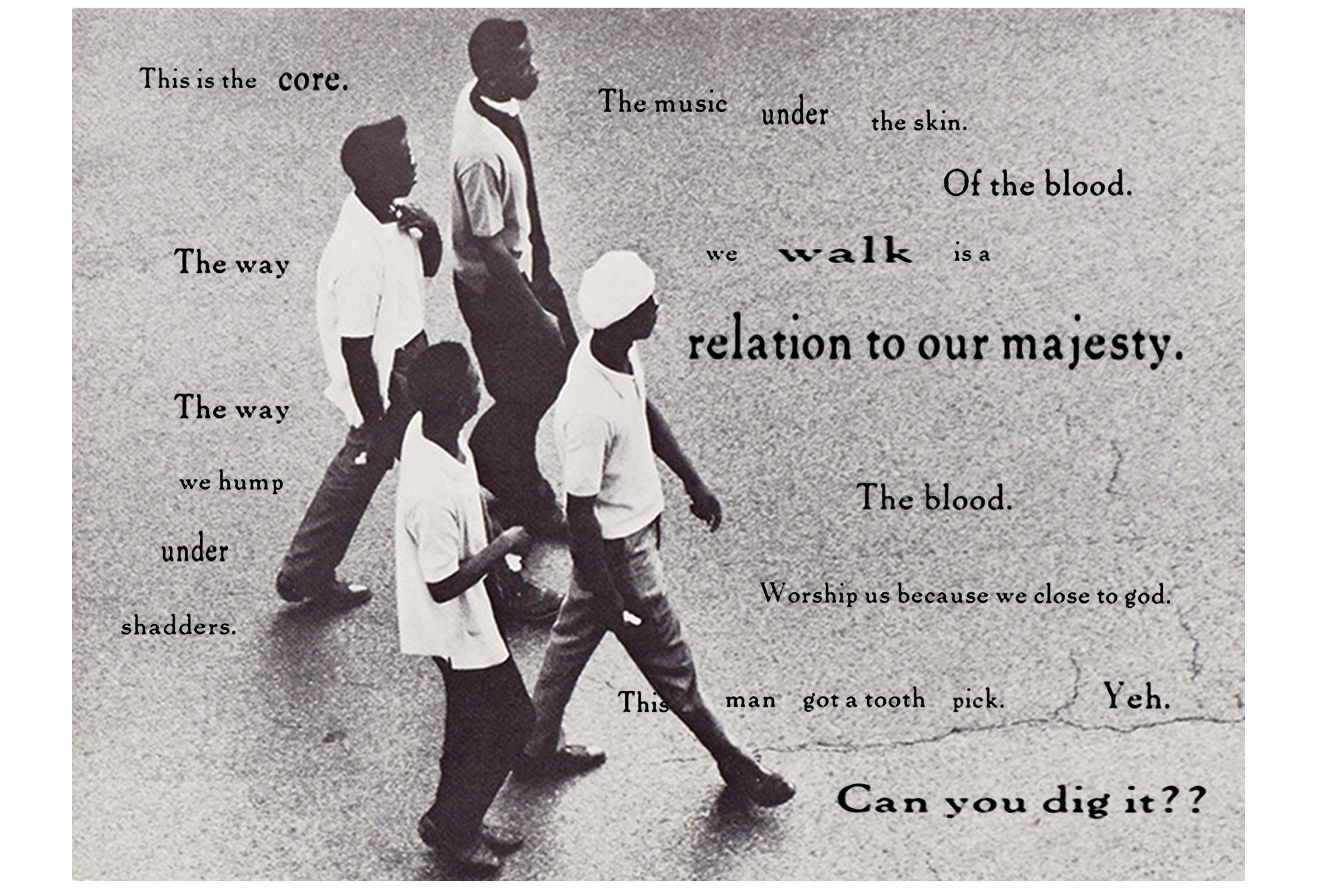
1/25 – Nomadic Images
Caroline Wineburg
UNIVERSAL
adjective: of, affecting, or done by all people or things in the world or in a particular group; applicable to all cases. noun: a person or thing having universal effect, currency, or application.
To begin with, it must be said that the University does not and will never contain universal knowledge and intellectuality, whether free or not, legitimizing or not the cultural and spatial context in which it is inserted. Borrowing the term coined by Boaventura de Sousa Santos (2015), I see the academic environment as a Pluriversity, that is, as a place of construction of transdisciplinary and heterogeneous knowledge and, thus, constitutive of an open system, less perennial, rigid and hierarchical. When thinking about knowledge, I think of my grandmother, who knew how to identify the name of the plant and the functionality of the tea made with its leaves, just by the smell and texture. When thinking about knowledge, I also think of the prophets of rain, village elders who wake up at three in the morning to listen to the cicadas’ song and thus predict whether the coming season will be rainy or dry. In this way, I agree with Edward Said’s view that we need to become travelers rather than potentates, but I believe that such a change does not begin at
Clarisse Figueiredo
“The image of the traveler depends not on power, but on motion, on a willingness to go into different worlds, use different idioms, and understand a variety of disguises, masks and rhetorics.” — Edward Said
the University itself, but in the way we identify what knowledge is, for whom it is produced in the ways in which it is produced today within academic environments and how we will be able to cross nationalist, capitalist and migratory borders. Do we really see the world from here?
Traveler Frontier Universal
Knowledge Freedom
1/25 – Nomadic Images
Archipelago, Collage, 2023 Clarisse

1/25 – Nomadic Images
Figueiredo
GENERALIZE
verb: make (something) more widespread or widely applicable
“We travel on the surface, in the expanse, weaving our imaginary structures and not filling up the voids of a science, but rather, as we go along, removing boxes that are too full so that in the end we can imagine infinite volumes.”
— Édouard Glissant
Generalization Violence
Totality
Glissant explores both the stasis of being and the movement of relation, providing a sufficiently, successfully ambiguous framework for how we might describe our place in the world, and how we might understand ourselves and others, in increasingly complex and chaotic formations, through, along, and in spite of history. Being and relation to Glissant are many-sided and they activate each other to different effects, which interact with politics, economy, literature, culture , to create history. Because beings relate to each other (and thereby “dissipate”), they inhabit and make a world (“the being of the world”). Being for being is static, and relation (being with other beings) travels -- it seems to hurtle being towards totality. Imagine a network.
Glissant both invokes and annihilates scale in his description of the world-making work of relation. He considers the “being of the world” as inseparable from the “being of the universe”: “whatever imagines itself suspended in this whole [...] the suspension is not primarily spa-
tial”. This invites and challenges spatial practitioners (in their work of siting, situating, placing, and scaling) to grapple with an aesthetics of the whole and how it might be re-represented.
Dan Miller
The how of relation matters -- which is predicated on difference, subjectivity and requires opacity and consent for Glissant in order to not engender violence through the expansive, chaotic momentum of relation. To describe a theory, which in turn would seek to describe a subject, a set of relations, a network, or event, might risk perpetuating the ways of knowing and writing that Glissant takes issue with. His approach is therefore to weave together forms and approaches that extend theories of difference and unity, which makes his work feel immense, overwhelming even, to engage. This is effective and communicates what it is and how it is to attempt to understand and relate along the lines he’s proposing. Consider his illustration of how beings (and their opacities) ought to relate: “Opacities can coexist and converge, weaving fabrics. To understand these truly one must focus on the texture of the weave and not on the nature of its components.”
Consent
Opacity Difference
1/25 – Nomadic Images
Miller
1880 US Census Manuscript with markings from Julie Mehretu Invisible Sun (algorithm 5, second letter form) 2014

1/25 – Nomadic Images
Dan
UJAMAA
an ideal: trans. “fraternity” in Swahili. Coined by Julius Nyerere in his post-colonial leadership of Tanzania, promoting common association practices.
“We have to be careful about models as frames for our critical thought. We have to do the hard work of thinking through every historical moment.” — Anthony Bogues
In a lecture given by Anthony Bogues on the historic "We are Not For Sale" speech by the Democratic Socialist leader Micheal Manley to a post-colonial Jamaican public in 1976, Bogues differentiates between the constitutional decolonial project and the radical, embedded process of decolonization that followed it.1 While constitutional decolonization is marked by a change of governance but the keeping of extractive, socioeconomic relational frameworks, embedded decolonization seems to occur when there is a change in the relational frameworks between individual, community, and land. In an embedded decolonial landscape, extraction as the main relational framework is replaced by participation. Association between people, the land, and its non-human entities is restored.
In turn, the present is no longer conceived of as an accumulation of the past, but is rather a living index of it.
It is in this relational framework that Edouard Duval-Carrié operates, his art acting as a living history where "linear time is unsettled".2 In Duval-Carrié's Memory Windows series, pictures of ancestors, folk motifs, domestic objects, and the opaque landscapes that mediate them all carry equal weight, organizing a conception of his Haitian experience as one where history and memory "embrace eachother". 3
My alteration of his Memory Windows series seeks to continue an anticolonial tradition of de-centering, and within the conceptual framework of Nyerere's ujamaa, to bring together separate groups in common association with eachother.
1 The term "embedded decolonization" is self coined in reference to the Anthony Bogues curated show, The Art of Embedded Histories (Brown University, 2019)
David Zhang
2 The Art of Embedded Histories (Brown University, 2019). 15.
3 Idib. 15.
Marvelous [Realism] Inside Out Ujamaa Reoriention Repatriation
1/25 – Nomadic Images
Edouard Duval-Carrié, Memory Window 1-4, 2017.

1/25 – Nomadic Images
David Zhang
OPACITIES
Accepting the differences in each individual. Accepting impenetrability. The impossible nature of reducing them to organized categories from an outsider’s perspective.
“Beings risk the being of the world”(P187). To add onto that, I would say Beings risk, steal and threaten the being of others. When the planet recognizes the presence of Beings, why can the same action not be reciprocated by Beings? This text inclined me to discuss the dichotomies and unfair practices that are birthed by power and the hunger for power.
The bounds of the world are limited. What knows no bounds is the imagination and knowledge, that we, as beings possess. This knowledge involved in the movement of beings is addressed as a “Relation” by Glissant. He mentions that these relations strive towards the existence of the universe through consent or violence. When it comes to violence and occupying territories and their inhabitants, the planet is not a stranger to it. The world becomes a stage for these violent performances to happen and becomes an entity for these violent practices to experiment on. The establishment of colonies over land has failed to respond to the
Devanshi Gajjar
“Relation strives toward the being of the universe, through consent or violence. This effort is not primarily spatial.”
— Édouard Glissant
Relation
Being of beings
Colonial Opacities Deduction
magnanimity of nature and failed to respect the multiple cultures they have ruled over. Glissant refers to these cultures individually as opaque. “Opacities can coexist and converge, weaving fabrics” (P190). In the past, there were no efforts to comprehend these weaves, and now, there has been a constant discussion to reduce these to singular identities. Mapping the state of colonialism in the past; the United Kingdom was at the center of the world, as seen in the map by Leslie MacDonald Gill (1946). The same practices have continued to date under the guise of power structures that are governed by money instead of Monarchs. These practices, instead of learning from the past and deciphering these opacities, seem to have deduced the multiple cultures to transparent beliefs under the title of modernism. Nature still continues to be exploited, only for different reasons, as stated in his text, the Burning Beach. Nothing has changed; except that the focus has now shifted from the United Kingdom to the United States.
1/25 – Nomadic Images

1/25 – Nomadic Images
Leslie MacDonald Gill, Cable & Wireless Great Circle Map, 1946, lithograph, 40 1/8 × 49 5/8”.
Devanshi Gajjar
REPATRIATION
noun: the act or process of restoring or returning someone or something to the country of origin, allegiance, or citizenship Resources worth trillions come in abundance from the colonized states in form labor,people, raw materials, metals. In return they are given infrastructure—roads, railways, ports, that eases the colonizers extraction process. After independence it takes years for these states to decolonize as no ‘real infrastructure’ 1 was built.
Concept of Western capitalism is completely different from practices of a common association of thinking about relationships that creates another1. Thats is where ideology like ‘Pan-Africanism’ 2 comes into picture that brings ideas of ‘continental unity in Africa– relationship between Africa and the diaspora.’ 2
India was one such colonized country. The British constructed roads and imparted the gift of railways to plunder gold, grains, spices, coal, raw materials as well as valuable jewels and artifacts. But the same infrastructure aided in unifying the people across state borders by
“The first is intellectual decolonization and the second is the relationship between the individual and the community.” Decolonizing the museum or exposing imperial foundations has been theorized as a way to recover oppressed narratives and critique the exclusivity of the museum space.” — Anthony Bogues
connecting them and helping them share their experiences and form political ideas through intellectual and philosophical resources that would grapple with decolonizing the Indian subcontinent. It became the means for arranging organized independence movements. Though after independence, it took time for India to be decolonized. Famines, droughts, illiteracy, diseases and biggest of all partition left India crippled especially with the economic drain it suffered. Till this date India is owed repatriation and reparations of its stolen arts, artifacts and jewels. British museums are filled with loot from its colonized states and it should take steps towards ‘reframing its inventory’ 3 through repatriation and thus it can work towards reframing its history.
Decolonization
Pan Africanism Repatriation Extraction
Colonial Balance Sheet Reframing
1/25 – Nomadic Images
Devanshi Pandya
1 Anthony Bogues, Interview with Anthony Bogue (Providence, 2018), 54
2 Anthony Bogues, Interview with Anthony Bogue (Providence, 2018), 50
3 Anthony Bogues, Interview with Anthony Bogue (Providence, 2018), 60
Map of India Railways, 1909, Environment and Society Portal

1/25 – Nomadic Images
Benin cast brass plaques at British Museum. Photo by Andreas Praefcke
Devanshi Pandya
a small room, as in a convent or prison or a small room, as in a convent or prison
“Discipline produces subjected and practiced bodies, ‘docile‘ bodies.” According to Foucault, bodies work as a respondent from discipline as a single cell. The body is the object of such imperious and pressing investments. To make this argument works, bodies have to be solitary as the monastic cell. Enclosure space is needed because each individual has their own place, and discipline organizes an analytical space.
Foucault is talking about the unit as rank, the place one occupies in a classification. In the example of the reading, the factories at the end of the eighteenth century, it was challenging to distribute individuals in a space. But what matters is not a fixed position but a network of relations. In discipline, the elements are interchangable, since each is defined by the place occuping in a series, and by the gap that separates it from the others.
In this perspective, the question of the bodies’ free will remains. If political autonomy and disci-
Gyeom Chung
pline exercise power over individual cells, then in other words, it means that external factors can manipulate bodies. In further thoughts, if applying architecture to the body, we can think about how politics and disciplines from outside are related to architecture. The example from the reading reminds me of a city that is working as a cell, affecting buildings as a body.
CELL
Docile Bodies Cell Solitude Discipline
1/25 – NOMADIC IMAGES
“Discipline is an art of rank, a technique for the transformation of arrangement.” — Michel Foucault
Image
or the art of preventing and correcting deformities of the body in children’, N Andry

1/25 – NOMADIC IMAGES
from ‘Orthopaedics
Gyeom Chung
DISCIPLINE
verb: train (someone) to obey rules or a code of behavior, using punishment to correct disobedience. - Oxford Languages
“The classroom would form a single freat table, with many different entries, under the scrupulously ‘classificatory’ eye of the master”
—
Michel Foucault
As Foucault mentions in “Docile bodies”, discipline produces subjected and practised bodies, ‘docile’ bodies. It increases the forces of the body (in economic terms of utility) and diminishes these same forces (in political terms of obidience). It dissociates power from the body and turns it into an aptitude.
Throughout his writing Foucault delivers various examples of institutions retrieving the bodily autonomy of the individual as a technique of control and power. There are great interconnections between space and architecture and the control of the bodies, through systems of ranking, enclosing and monitoring several spaces are able to become machines of control and reframing the obedience into an aptitude of discipline.
In this example I used one the most common iconography used by the La Salle priests to commemorate the life and death of Jean Baptiste de la Salle, a priest celebrated for its life
Javier Flores
Bodies Docile
Discipline Control Power
as a catholic educator. Foucault uses La Salle as one of his examples of bodily control through space arrangements and ranking systems in the education field. I combined this iconography with the depiction of robotic vision used primarily in science fiction, as is usually a ranking and classification system used by the robots to locate and classificate its targets. Through this collaging I seek to interweave the dynamics of christian iconography and representations of bodily control to convey a new lens of the complex narratives that have been encountered throughout history of bodily manipulation.
1/25 – NOMADIC IMAGES

1/25 – NOMADIC IMAGES
John Baptist DE LA SALLE, Giovanni Gagliardi 1900
Javier Alberto Flores Leal
CONTROLLED DERIVATION
In order for taxonomy, or the absolute organization of living beings, a strengent scientific classification manifested limitations not just in the biological fields, but in all humanistic expression.
Foucault critiques the narrowing scientific classification systems developed in 17th and 18th, specifically in the areas of biology, medicine, and their classifications of living being. Visual distinctions were made more discernable with the advent of microscope, giving a hierarchy to our perceived senses. Visual discernability being our least subjective, our attempts at linguistic translation of form and structure where solely reliant on assumptions of sight.
He argues that these “natural history” giving parameters, defined by many including Linnaeus’s system of biological classification, are neither neutral nor objective ways of organizing life or history itself. Rather, they are unequivocally intrenched in the underlying assumptions and perspectives of the societies in which they were created.
“Natural history must provide, simultaneously, a certain designation and a controlled derivation.”
—
In their inability to identify nuance and allow discrepancies within the infinite universe, these sciences have been used as a mechanism to exert
John Max
power over the specifically classified subjects. He argues by classification itself; society imposes standards and norms of existence. He also critiques the idea of epistemology being objective and detached from power, suggesting that knowledge is in fact a product of power relations.
Speaking of a shared fabric of all living things, natural history does not exist an exact box separate from the messy qualities of language and human communication.
“In reality, it is interwoven with a theory of words. Natural history is situated both before and after language; it decomposes the language of everyday life, but in order to recompose it and discover what has made it possible through the blind resemblances of imagination; it criticizes language, but in order to reveal its foundation.” p. 166
Video Drawings Decipher Technology Obscured
1/25 – Nomadic Images
Michel Foucault, The Order of Things p. 138
Homer, ‘Mutations’, 2022

1/25 – Nomadic Images
John Max
NEGATIVIZATION
noun denoting the act, process, or result of doing/ making something: the capacity that blackness, as a Category, acquires precisely because it had to be assembled - along with other tools of raciality - in the post-Enlightenment moment, when the notions of universal liberty and equality enter the description of the proper modern (social) confiiguration and its (human) subjects.
In Chapter 1 of Denise Ferreira Da Silva’s Unpayable Debt she offers us the phrase wounded captive body in the scene of subjugation as her reading strategy, tool, and answer to the question, “Where to begin?”
The chapter reads the protagonist of Octavia Butler’s Kindred, Dana, and all that she troubles. Unpayable Debt works to expose in intimate detail what is assumed and presumed when we talk about race, Blackness, and states of captivity. Da Silva does not read the political architecture of “the global present” to assign causality or purpose, but rather to make vulnerable the false ethical, economic , and political veneers that make addressing/understanding how the Colonial and Racial work in the global present/ as global capital. She discusses and dissects how necessity (of violence, of movement) operates
“Here again it is importaant to recall that, unlike Hegel’s self-consciousneesses facing each other in the life-and-death struggle, after which one becomes the slave, with actual slavery the two enter into unequal positions. What you hav then is not a one-off event in which subjugation is achieved once and for all but thee repition of the scene of violence, precisely because the owner could never be sure that the person standing before him or her already enslaved has relinquished her will.”
” — Denise Ferreira Da Silva
Body-mind
Human
Thing
Humanity
Total Violence
Symbolic Violence
Legality (Law)
Circularity
Mythical Time
Obliteration
Refusal
Incomprensible
silently as both “the ethical principle of liberty” and as a place to locate conceptions of value. She “unsettles” this arrangement with the hope “to articulate an invitation to an image of existence that is not supported by force of necessity or the mechanisms of symbolic and total violence it sustains.”
The wounded captive body in the scene of subjugation is derived from a close reading of Hortense J. Spiller’s “Mama’s Baby, Papa’s Maybe: An American Grammar Book” (1987). Da Silva lays bare hypocrisies, violences, and necessities present between post-Enlightenment political architecture and the terms “the captive body” (juridical and economic), “skin color” (workings of the symbolic), and “flesh” (the ethical).
Khadija ann Tarver
Thinking with the flesh
1.25 – Nomadic Images
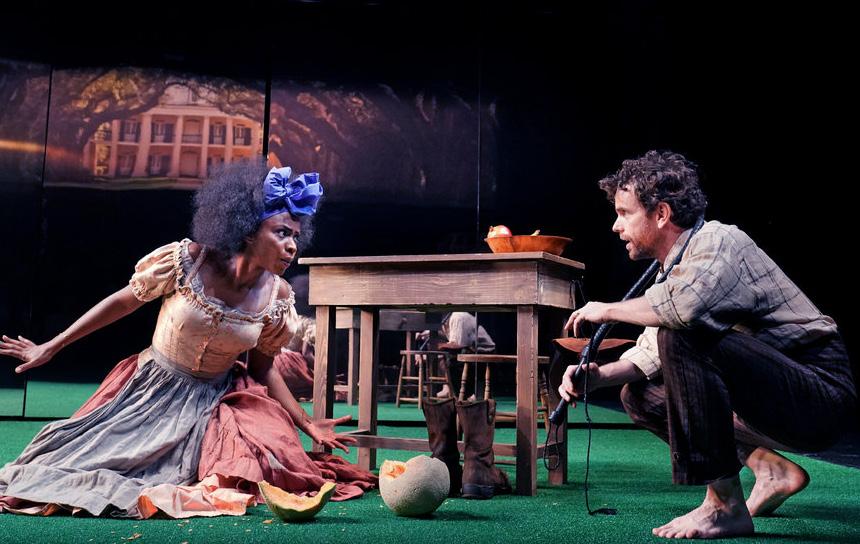
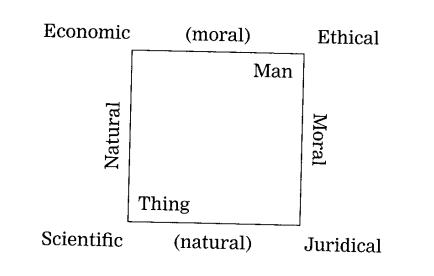 Jeremy O. Harris, Slave Play, 2018; Denise Da Silva, Diagram 1 - Unpayable Debt, 2022
Jeremy O. Harris, Slave Play, 2018; Denise Da Silva, Diagram 1 - Unpayable Debt, 2022
1.25 – Nomadic Images
Khadija ann Tarver
TERMINAL SPECIES
Species that derive characteristics from those that preceded them, but in a higher degree of complexity and precision.
“The fossil, with its mixed animal and mineral nature, is the privileged locus of a resemblance required by the historian of the continuum, whereas the space of the taxinomia decomposed it with rigour.” (Foucault, The Order of Things, 2007, p. 156)
Drawings
Decipher Technology Obscured
Foucault critiques the causes and manifestations that enabled the scientific quest towards the rationalization of natural life during the 18th and 19th centuries. In his critique he recongnizes the blind spots of natural history that were caused due to spacial methods of categorization. To him, ‘monsters’ have been missed, and ‘fossils’ have been taken apart into classified rubrics, in the large binary tapestry of taxonomic classifications. The main question we should ask, is how the privilege to organize life, that was given to sciences in the 17th and 18th century, has actually traversed into the architecture field and education, and how the form of scientific organization has managed to ‘purify’ the pedagogy, impoverish the lexicon, and define what is architecture and what is not. A specific form of critique to this methodology can be found in Hilla and Bernd
Becher’s work “Anonymouse Sculpture” where a systimatic use of classification manages to of-
fer a supplementary collection to the canon. By creating a visual archive of architectural typologies that were then excluded, they managed to resurface the Foclaudian ‘monsters’ of architectural forms. Looking at this retrospectively, and in relations to this text, one might say that this critique is intself of fault; uncovering the ‘monsters’ but missing the ‘fossils’ due to (im)perfect methodology of scientific classification.
Lealla Solomon
Video
1/25 – Nomadic Images
 Bernd and Hilla Becher, WaterTowers, 1970 - 2010
Bernd and Hilla Becher, WaterTowers, 1970 - 2010
1/25 – Nomadic Images
Student’s Name
noun : prejudice in favor of or against one thing, person, or group compared with another, usually in a way considered to be unfair. Teachers, professors, instructors, and all other forms of educators all have one basic commonality, they’re human. And although their roles can sometimes come with a lot of power, they are not gods. They are not rulers. They are not potentates. However, they are above the student as it relates to the social order. What is the student’s role in this social order? Said tells us the idea of the academy is to form the minds of the young but how? Foucault tells us soldiers can be made out of formless clay, again how?
This week’s readings made me think a lot about who’s in control, who’s being controlled, and who controls the controller. The slave owner not only controls the slave but it controls the overseer as well. This week’s readings also made me ask a series of questions: How many Black students have had a white educators? How many white students have had Black educators? How are these dynamics negotiated within our society? How do we assign roles
“In most cases, however, the actual changes in the canon that reflect the interests of women or African or Native Americans have been pretty mild. . .” — Edward W. Said
Robert Louis Brandon Edwards
within our society? Is it by race, gender, or class? Is it by education? Is it a combination of intersections? Can we truly understand these differences without assigning hierarchies and without biases?
Bias
Identity Training Social Order Academy Bias Institution Racism Canon Product
1/25 – Nomadic Images

Ed Meek, JamesMeredith’sfirstdayofclassesattheUniversityofMississipp , 1962 1/25 – Nomadic Images
This better be worth it.
Robert Louis Brandon Edwards
WOUND
noun: an injury
verb: to inflict an injury (on someone). Also past tense of Wind
“What I was trying to do when I wrote that essay many years ago was to find a vocabulary that would make it possible, and not all by myself, to make a contribution to a larger project”
— Hortenese Spillers
“If your symbols aren’t used in a way we use them, we won’t acknowledge them. Infact you won’t exist until we validate you,” says the white woman charachter played by Howerdena Pindell in her short movie: Free, White and 21. This line directly relates to the reading, ‘Not even by Law’ which establishes an understanding around the basis and biases in the creation / determination of ethnicity / race as categories for socialscientific construct.
The term ‘wound’ when defined as literal injury is how the text introduces its character at contestation, which eventually shifts its understanding to an ethical and moral infliction of a wounded captive body. This wounded captive body has a reality that is given and is validated by her skin color. The author breaks down the understanding of this reality and questions the given, as biases that are wound around it.
Pindell in the movie attempts to shift realities
Rutwik Karra
to question this given of color establishing the authority. A body is either an owner or a captive body, where labor is not just physical work but more to being reduced to nothing (negativation). The act of covering the skin where the symbolic is true to the scientific-juridical reality, but the ethico-juridical reality remains to be wounded.
This reading, hence, establishes various non-quantifying aspects of measuring that expropriate, exploit, negate, subjugate and wound a body when reduced to their identity.
Captive Body Labor Wound Owner Skin Color
1/25 – Nomadic Images

Pindell, Video:Free,White and 21, 1980 1/25 – Nomadic Images
Howardena
Rutwik Karra

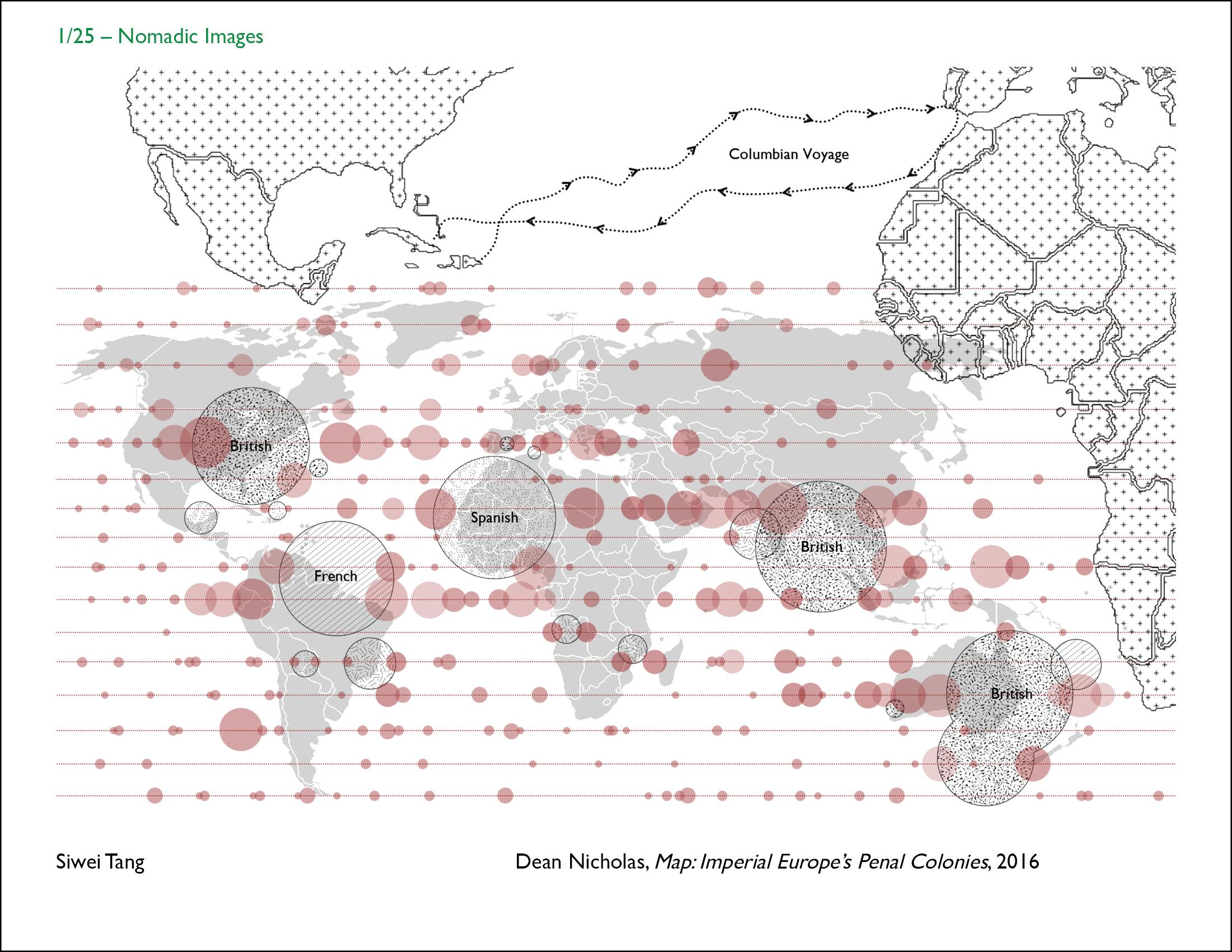
ELEVATE
transitive verb: to lift to a higher position (or) to raise to a higher place or position
“Do we say: now that we have won, that we have achieved equality and independence, let us elevate ourselves, our history, our cultural or ethnic identity above that of others, uncritically giving this identity of ours centrality and coercive dominance?” — Edward Said
Photography
Elevate Authority Identity
The Tukad Kad Sequence #2 is a Southeast Asian floor mat, tikar, with black natural dye depicting furniture items like ceiling fans and tables by Malaysian artist Yee I-Lann. She sees the tikar as “architectural, calling people to commune together, to share a platform,” while the table, which didn’t exist in the archipelago in pre-colonial times, represents a form of “hard patriarchy,” of colonial governance and rationality.
“So rather than an army of guns, imagine an army of tables. The violence of administration. […] With a gun I may just shoot you, with a table, with administration I will tell you who you are, I will tell you what your history is.” - Yee
I-Lann
Edward Said warns that to center and give supremacy to a singular national, cultural, or ethnic identity is “a confinement, a deprivation” (227), and I absolutely agree with that, “no race has a monopoly on beauty or intelligence” (226). Why
I want to put Said’s words in conversation with Yee’s art is to grapple with the extent to which colonial administration and legacies are embedded in not just the academy but also everyday lives (tikar vs. table), and to think about that tension between unlearning the table/relearning the tikar and “uncritically giving this identity of ours centrality and coercive dominance.” I want to focus on the word elevate; in Said’s quote above elevate is used in the context of “above that of others,” in contrast, for Yee, her attempts to elevate her traditions and history in her art are not to elevate them above others, but because historically those traditions and those histories were deemed as lower than that of others. To elevate, then, for Yee becomes a process of giving importance to that which had been erased, rendered invisible and less than.
Theresa Yang
Unlearning
1/25 – Nomadic Images
Mesa (Spanish)
Meja (Malay)
Mesa (Tagalog)

Theresa Yang
Yee I-Lann, The Tukad-Kad Sequence #02, 2021
1/25 – Nomadic Images
MANOEUVRE
noun: an obligatory syntax; a planned action that is tintended to get an advantage; manoeuvre has the effect of rewarding those who sell at the expense of those who remain.
“We have passed from a form of injuction that measured or punctuated gestures to a web that constrains them or sustains them throughout their entire succession...Time penetrates the body and with it all the meticulous controls of power.”
- Foucault, Michel, “Docile Bodies,” in Discipline and Punish: The Birth of the Prison, 1995, pp 152
Michel Foucault applies this notion of docility to the development during the 17th and 18th centuries of disciplines designed to create a “mechanics of power, a policy of coercions that act upon the body, a calculated manipulation of its elements, its gestures and behaviors.” This reading recogonises the discipline power as a subjugation, stratified, imposed from the top down on one group by another, as a network of discoursesinstitutions; the army, the school and the hospital, a set of techniques, a whole collection of methods - that produce positions of dominance and subordination in specific contexts. Foucault saw discipline as a ‘formula’ of dominance different than slavery or vassalage or service. Why? Isn’t this an act of molting a layer and through such trifles, giving a new face to dominance?
Sterbak’s art can be seen as a feminist appropriation of Foucault’s conception of discplinary power in contemporary times. She explores
how individual subjectivity is constructed in and through the body, in and through those social and psychological processes that shape us. Like how Michel Foucault’s “docile” body, is “subjected, used, transformed, and improved”, women can be colonized by fashion, by standards of beauty that render her. Through her work, ‘I Want You to Feel the Way I Do. . . (The Dress), 1984–85’, she allows for the possibility of female agency, although she locates its potential in a realm outside society. Juxtaposing Sterbaks work with the instrumental coding of the body, an obligatory syntax of gestures, a manoeuvre, one can attempt to understand the perpetual existence of, what a tax collector of an enterprise at Angers said, a ‘Labouring mankind’. (Foucault, 1995, pp 165).
Vir Shah
Discipline Power Manoeuvre Subjectivity Agency
1/25 – Nomadic Images
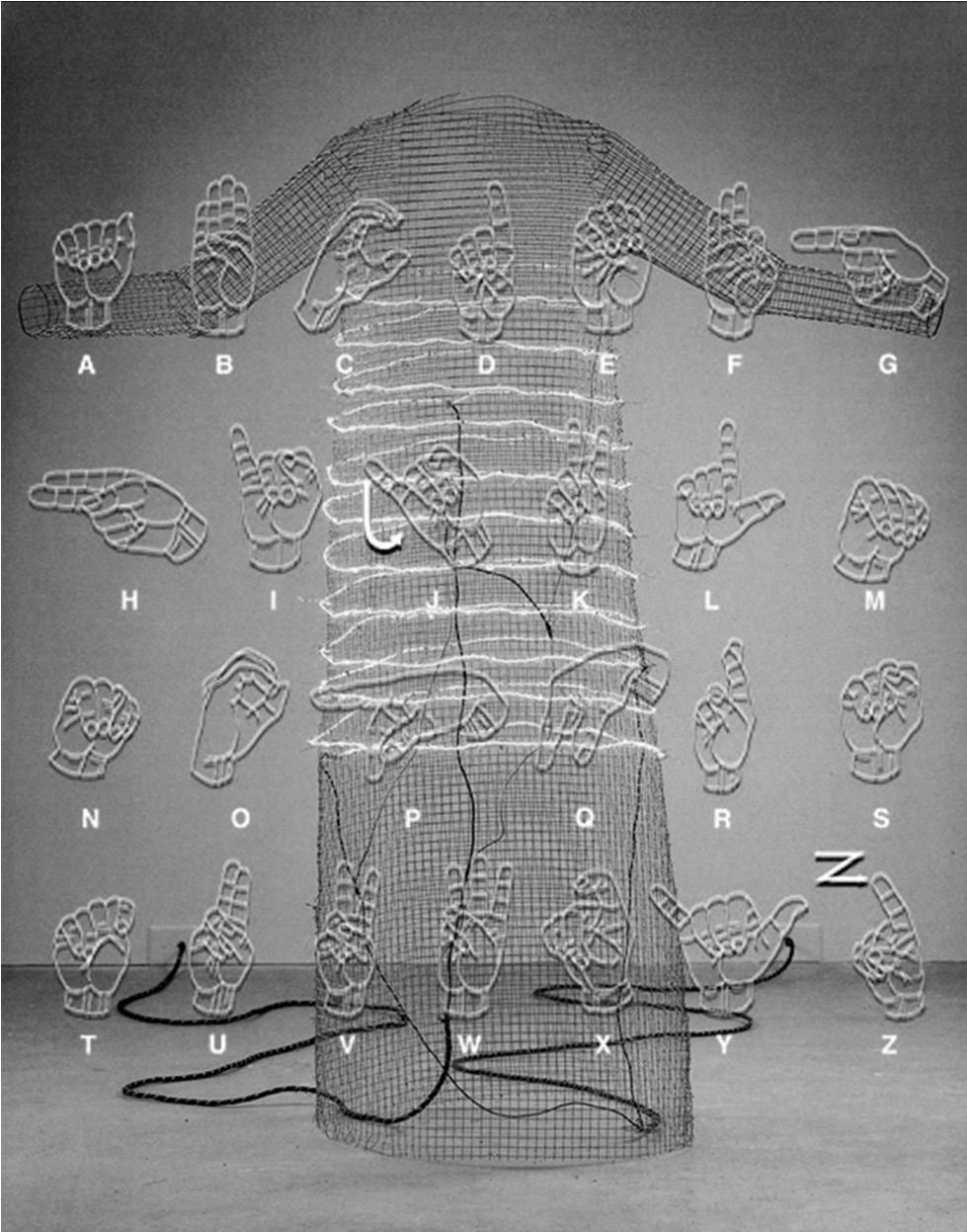
Jana Sterback, Sculpture:IWantYouToFeelTheWayIDo, 1984-85 1/25 – Nomadic Images
Shah
Vir
Life does not exist, all existence is biological, and these creatures are viewed through the network of knowledge constituted by natural history. Foucault refers to two intertwined institutions in the world, the first for the definition of what is known and the second for what is unknown. biology before the 18th century was unknown and no one could define it. Life did not exist in natural science, all existence was biological, and these creatures were seen through the network of knowledge constituted by natural history.
It was thought that natural history must have emerged at the time of the decline of the Cartesian mechanism. But the plant and animal worlds were more complex, and then came the history of the study of various animals, such as the study of birds by Perón.
In the field of history, this is the beginning of what has since been considered the separation of the two kinds of knowledge. Before that, history was all visible things and the structures within them. But the natural sciences in the classical period were a separate system, and then the word history changed its value.
“There
Yan Huo
Then we learned that the duty of the historian is to record. Rather than what he sees, he retells it. Many things are formed by secondary definitions. What changes is that people see spaces, and the spaces that can describe them.
People started using quantities and images to describe things, and in the process it’s not what we can see, it’s what’s hidden.
History Structure Natural System Grid Difference Observation
Natural
are no leaps in nature:everything in it is graduated,shaded.”
— Michel Foucault, The Order of Things
1/25 – Nomadic Images G
RID
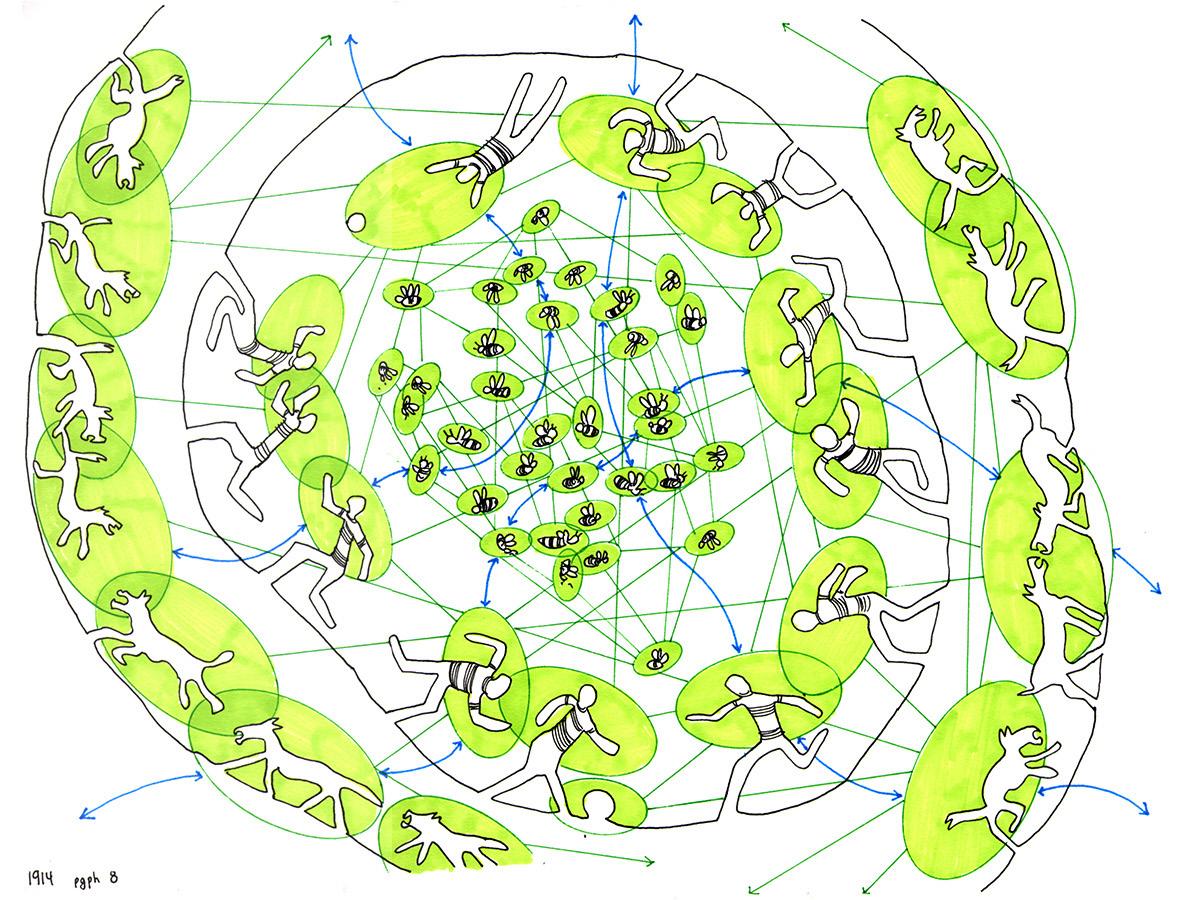
MARC NGUI,
1987 1/25 – Nomadic Images
Drawings:Thousand Plateaus,
Yan Huo
CLAIM
noun: an assertion of the truth of something, typically one that is disputed or in doubt. A demand or request for something considered one’s due.
Ngurrara II narrates a historical setup, accessing landscaping through the eyes of those who have lived it. Not occupied, not settled nor conquered. Absent of maps and surveys it builds terrains that tap into the values of the people that have tred the path, but never claimed it as anymore but their ‘land.’ A claim, that has neither written proof nor. documentation but generations of oral narratives that is placed on a fabric, cumulatively embodying the kin and home of their ancestors.
Noted as a multivalent object, it was a strategic intervention, a generative identity adapting traditional laws and stories about their communal land that also served as a legal and political proof. With this strategy we travel to the dhows docked in Salalah, Oman, where another green fabric chadar flags their posts for the protection of the seafarers. These dhows are refered to as a vahan, economically filling the gap of arbitary goods, heterochronically an object that represents a past and a future and finally, that
Aashwita Yadav
“How to establish, in front of an Australian legal tribunal, their culture, and law, where they came from, and who they were? In other words, what in the eyes of the Native Title Tribunal, would constitute proof of land tenure going back over multiple generations.” — Adrian Lahoud
Terra nullius
Mediation Claim
Jila (Waterholes)
what it is, a mode of transportation that voyages (ghos) across the Indian Ocean. Ghos for the sailor is shown as an aqueous topography, a whirlwind of notifs that represents their journey across routes - rocky cliffs, shallow sandbanks and dangerous whirlpools. As the trade progresses it is this ghos that becomes a unit of value and profit in itself. With the intercession of religion these dhows also embody blessings of the Sufi saints capable of karamat (miracle).
The image takes over this idea of a vast emergent landscape, set within the Rann of Kachch established in Dhows Voyage, talking about the presence of the Agariya Community. 1500 families toil over these temporal lands from centuries, a land and sea relationship that is their livelihood but a negotiation they have no stake in.
Jila People (Rainmakers of the Desert)
MAHAJAN: Dhows
Ghous / Ghos
Chadar (sheet)
Vahan
Heterotopic
Heterochronic
Primordial
LAHOUD:
2/1 – Ideas Travel
Aashwita Yadav
Rupin Dang, TheWilderness Films India Collection: Video Images, 2012
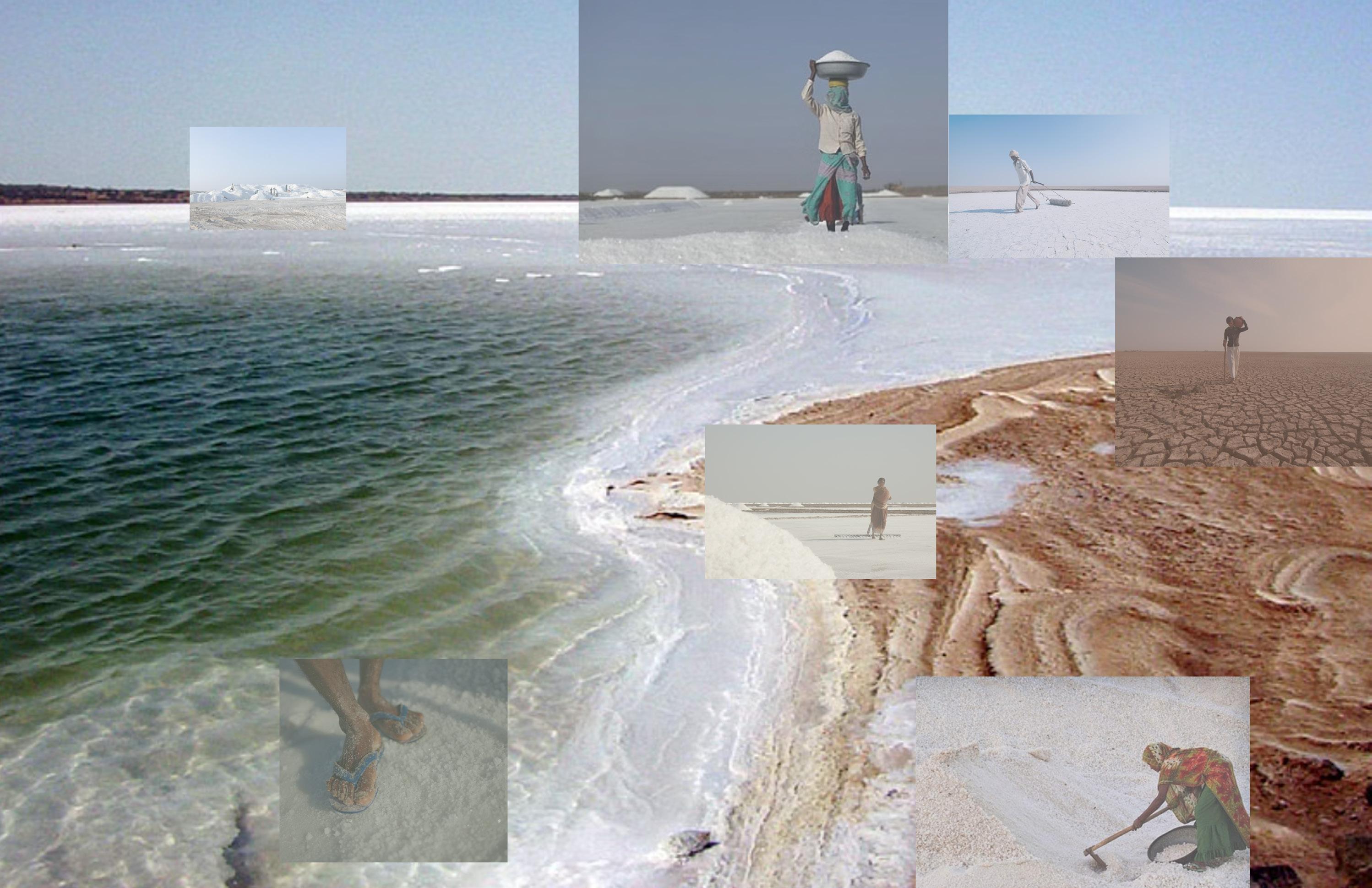
2/1 – Ideas Travel
ESTRANGEMENT:
Noun: the fact of no longer being on friendly or part of a social group
Where is home? on the one hand “home” is a mythic place of desire in the diasporic imagination. In this sense, it is a place of no return, even if it is possible to visit the geographical territory that is seen as the place of “origin”. On the other hand , home is also the lived experience of locality, its sounds and smells - Avtar, Brah
Sara Ahmad’s Narratives on Migration and Estrangement is very unique in that it allows us to take a look at migration and immigrants from a different perspective. The perspective of the people whose lives have been made to adapt to new identities and redefine their bodies to new communities. By stepping back from the politics of these terms it allows us to understand home not as only the extension of the body but as the skin from which an individual can access its own identity in places where one is confronted with cultural oppression and cultural identity. It places the human body in new communities in which their identity is questioned and displays the harsh realities immigrants are faced with as they adapt to new homes. It opens the door to question movement from those who call themselves migrants and are privileged
Alejandro Marin
enough to move freely against those who don’t have the same freedom and are called immigrants. The use of nomads as a metaphor for the movements between those who are free and belong to a global community and see the world as their home puts into question the fetishism of identity in a globalized world. A world in which immigration is often held hostage by those who proclaim would lose their identity if one group enters the space of another. It allows us to question our own journeys and confront the estrangements we have in common, confront the effects of colonialism and take a deep dive into what it means to be free of movement in a globalized world.
Home Nomad Nomadism Immigration Immigrant Migrant Estrangement Locality Boundary Identity Away
01/31 – Home and away

01/31 – Home and Away
Minari (2020)
Alejandro Marin
BELONG
[intransitive verb] to be in the right or suitable place; [intransitive verb] to feel comfortable and happy in a particular situation or with a particular group of people.
“In the representation of migration many assume an authentic migrant perspective, which constructs the opposite: an inauthentic migrant, whose experiences become exoticized and idealized.” — Sarah Ahmed.
In “Home and Away: Narratives of Migration and Estrangement”, Sarah Ahmed engages in a critical analysis of the emotional spaces of home and identity.
Ahmed interrogates the politics of representation, criticizing the depiction of the migrant “whose experiences become exoticized and idealized.” (Ahmed, 334) She warns us of the dangers of discourse that allows for inaccurate portrayals, which reduce migrants and their experiences to stereotyped figures.
In 2017, Margarita Certeza García, in collaboration with Miguel Buenrostro and Marcos Ramírez “Erre” installed a 5-meter mirror and a table on the U.S.-México border wall extending into the ocean from the beach in Tijuana, and organized communal meals on the site.
The mirror acts as an illusion to make the border disappear/connecting with those on the other side.
Ariana Bon
In an attempt to undermine the dominance from both the border and the state that erects it, this installation addresses how the production of borders is bound up with military presence, authority and racial ideologies, Mapping the struggle over social space in the U.S.-México border: the wall at determines what is worthy of protection (U.S.), and what needs control (México).
In other imaginings, the border may exist but not its power. As a material and metaphoric place, this piece highlights how “communities create multiple identifications through collective acts of remembering.” (Ahmed, 329)
Image Imaginary BELONG Collective Memory
2/1 – Ideas Travel

2/1 – Ideas Travel
TOGETHERING
noun: writing with; a collaborative and intersectional practice of co-constructing history and meaning, which aims to redistribute power and co-produce solidarity
The notion of ‘togethering’ or ‘writing with’ may seem like a clear concept for architects and designers accustomed to community engagement strategies and participatory design; however, Siddiqi posits a more pointed inquiry into the varying ‘forms of authorship within collaboration’ to ‘see whether and how solidarities may be sustained.’ Through her experience interviewing residents and spending time in Dadaab, Kenya at the Ifo refugee camp, she shares a re-narration that destabilizes the role of the “architect” and demonstrates the groundwork for a ‘feminist architectural history of migration and mobility.’
For over 30 years, migratory and emergency settlements have been established near the village of Dadaab by the government of Kenya and the United Nations High Commissioner for Refugees (UNHCR) for half a million people displaced by civil war, drought, and famine in Somalia. The refugees and migrants that settle in Dadaab are confined to the camps, denied a path for citizenship, and denied the ability to work.
“How to collaborate across various structural divides gets at core feminist and anticolonial questions: why do we produce knowledge, for whom, and at whose expense?... Who is reflected in this knowledge?”
— Anooradha Iyer Siddiqi, Writing With
In response to the growing demand for shelter within the camp, the UNHCR contracted the Norwegian Refugee Council (NRC) to prototype a durable shelter that used prefabricated parts and the construction labor of refugees through skills-building programs. Shamso Abdullahi Farah, a registered refugee from Bula Hawo, Somalia, was one such “participant” who was trained in design and construction in exchange for the building materials to construct her family’s shelter and storefront. Farah’s labor, comparable to the gendered construction of a tuqul, transportable dwelling of bent acacia wood covered in grasses and/or textiles common to East Africa, was transformed in this context as a ‘form of economic and sociopolitical actualization’ (Siddiqi). Siddiqi recognizes Farah’s design practice, in spite of the acute power asymmetries between her, the state, and the humanitarian regime, as a model for emergent historiographies of mobility predicated on togethering and finding strength within difference.
Difference
Embodied Labor Mobility Togethering
Siddiqi, Anooradha Iyer. “Writing With: Togethering, Difference, and Feminist Architectural Histories of Migration.” e-flux Architecture. July 2018. Retrieved from https:// www.e-flux.com/ architecture/structural-instability/208707/ writing-with/
02/01 – Images Travel
Caroline Wineburg
Caroline Wineburg
Cave Bureau, “MertiAquifer:Camp Context”, 2022

02/01 – Images Travel
EXODUS
noun: a going out; a departure or emigration, usually of a large number of people.
“The diasporic figure is always struck by how uncurious the host nation is. We have these signals and symbols we put right out there. Nobody asks you about them. But when they ask, you can’t explain them anyway. So there’s a hermeticism, which is generated out of the very process of untranslatability. The aesthetic question is how you shape that. How you shape that withdraw, which you are making public.” — Kodwo Eshun
By invoking the diasporic figure in the face of transmutability, the interlocutors of the conversation, the artists Shezad Dawood and Kodwo Eshun, manage to navigate the subject using the metaphor of the black sun within alchemy, occultism, hermeticism. The black sun works as a device to question the construction of the diasporic self, as a mystery that can be decoded, as an opportunity to recreate the term diaspora. There is something hermetic in the movement of diasporic bodies, traveling in the occult, in the unspoken, in the silence of inbetween spaces. Throughout the text, the synonymous word exodus resonated in me, a term that I spent my whole life listening to. Coming from a family of farmers in the semi-arid, semi-desert region of northeastern Brazil, my family’s history and, consequently, my own history, was marked by migratory movements both to escape the drought and to search for better survival conditions. My uncle migrated to the main capitals of the country, taking rides in trucks
in a journey of weeks. My mother migrated to the coast in order to have access to education and that’s why I was born near the sea. Today, as I cross a continent in search of better study opportunities, I continue, in some way, to perpetuate my migratory heritage. At some point the text says that “to know something’s name is to have power over it”: by also recognizing myself in the diasporic figure, by nominating myself as a traveler, I empower myself.
Diaspora Exodus Body Translatability
Journey
2/01 – Ideas Travel
Clarisse Figueiredo

2/01 – Ideas Travel
Paula Siebra, Caminho da serra, 2021 Clarisse Figueiredo
VERISIMILITUDE
truthlikeness; the notion that some propositions are closer to being true than other propositions
“The verisimilitude we are introduced to is a mediated gesture between faithfulness and faith, between reflection and projection; it is a configuration of representation as both reflection and invocation beyond the limitations of transparency.” — Olu Oguibe
A photograph, like a map, can be seen as a negotiation between space, time, and technique. Olu Oguibe introduces another element into his consideration of the alchemical mix of the photographic image: faith. If the photographic process can and has become one of “trespass and violation” (249), as he illustrates through numerous examples of photographers’ colonial incursions and capture in Africa, how has it also, in examples given by Oguibe of its incorporation into funeral rights, come to communicate some spiritual substance? The idea that illusion and the opportunity to sculpt time, space, light, silver, perception, that photography presents might bring a viewer closer to the truth is vital to this understanding of faith and its relationship to representation and vision.
An important question then becomes: who has power to represent and thereby embrace, manipulate, or obfuscate the illusory qualities of representation? For what ends? Oguibe provides multiple examples of African photographers
taking up the medium and producing images for African audiences. Running contrary to colonial photographic practices that emphasize a kind of documentation whereby the African landscape “prints itself” onto film as subject, and can thereby be consumed, the photographic image in Africa, made (not “taken”) by Africans, represents a contest bewteen “African and outside for photographic image” (249).
Dan Miller
Capture Automatism Memesis Fix Verisimilitude Faith
2/1 – IDEAS TRAVEL
Digital Collage of Images of Rare Earth and Steenkampskraal Mine, South Africa

2/1 – IDEAS TRAVEL
Dan Miller
MALKARNINY
an indirect language: Used between Ngurrara groups to speak of another's country and land. Whether as a spoken, danced or painted, malkarniny mediates to protect the rights to opacity of each group/country.
Viewed through the lens of writing with coined by Anooradha Iyer Siddiqi, as a practice that allows for forms of difference to generate solidarity between groups, the Ngurrara Canvas made by roughly forty-one Ngurrara artists can be seen as refusing the absenses of colonial land violence. These absenses of violence are best understood by the term Terra Nullius, or "nobody's land", which "formed the pretext for British settlement of the Austrailian continent".1 These absences of violence seem to be both an inversion and direct translation of the violence attached to nullifying, essentializing, and settling. In the Austrialian aboriginal context, as the novelty of the colonial gaze over land became the knowledge that which was generalized, the multiplicities of indigenous knowledge, themselves protected by a patchwork of ambiguity, were nevertheless settled over. Among this voided landscape, the essential question for the
“Writing with is a way of taking differences wnad making them strengths... making plain structural assymetries... bringing into view variegated ethical landscapes... to privilege the co-construction of meaning over the many props, some which represent catalysts for work and some its finished forms.” — Anooradha Iyer Siddiqi
Terra Nullius
Writing With Malkarniny
Togethering Absences
Ngurrara countries seeking to reinstate their original claims over the land was how they could preserve their original bases of multiplicitious, ambigious land knowledges while presenting a unified front against the essentializing, nullifying power of the colonial Austrialian government.
Here, the nullified absences created by land violence were able to leveraged against the government. Among each groups' opaque, gaurded understandings of their ancestral lands, that which appeared to be void was able to present itself through malkarniny, an indirect "language" shared by the Ngurrara countries, as a unified, but not universal, patchwork of land knowledge and land rights.
2/01 – Ideas Travel
David Zhang
1 Adrian Lahoud, Forms of Afterlife, Ngurrara II: The World as a Green Archipelago. Sharjah Architecture Triennial. 2019. 17.
David Zhang, Transaction, 2023.
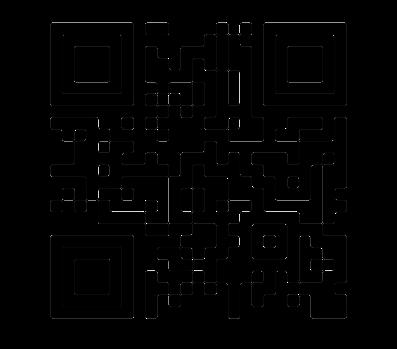


1/25 – Nomadic Images
COUNTERFORMS
Built that reciprocates with the cultural values of its inhabitants. It acts as a platform for those idiosyncrasies to enact themselves in clarity and equilibrium.
Joan Ockmann elaborates on the idea of the architect as a tourist, and at the same time differentiating them from one another. A perspective on societies and their dynamics that is unknown from the everyday mundane lifestyle. Architectural gaze too is similar to this perspective. It takes a step further in “rationalizing” those visions, measuring and representing them. Architects are active spectators, as they theorize their observations, and remaster them as “new” architectural and planning interventions. The author cites the examples of several architects and their interpretations from their Voyages, as Corbusier termed it. These are cases in which each of these architects either travelled with set expectations, or with the intent of discovery. Corbusier’s travels were documented by him through the means of sketches which was somehow an interpretation of what he saw. This vision and interpretation, was imposed on the world, thinking that only artists and architects can occupy a space in its true sense and recognize
Devanshi Gajjar
“One would not have gone so far to give lectures on architecture and urbanism….if one did not feel himself in a position to impart certain necessary realities.”
- Joan Ockman quotes Le Corbusier
Theorizing
Remastering
Urban Mutations
Counterforms
the hidden layers of the same. An example of this imposition is explained in the creation of Obus, a curved skyscraper that was set to change the face of the city of Algiers. The question here, is thus, that does this experience of traveling and measuring/documenting, give architect the right to put himself on a pedestal and impose his beliefs? What makes architects think of themselves as superior to the people living those set lifestyles and carving spaces for themselves?
How do we position the profession in a manner that creates counterforms rather than built mutations?
Gaze
2/1 – Ideas Travel

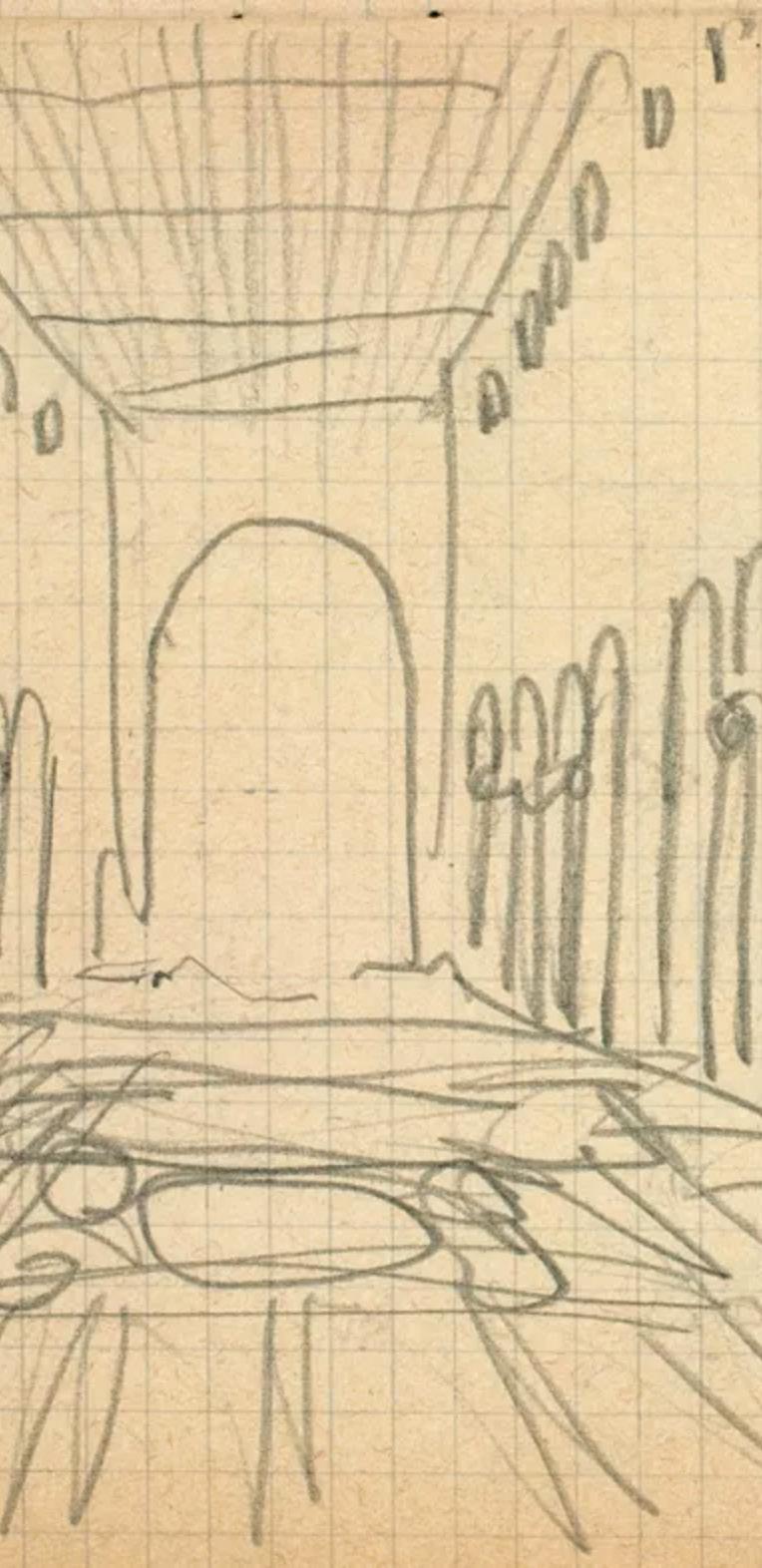

Gajjar 2/1 – Ideas Travel The Object An active spectator’s gaze Remastering the observations Architecture of Subtraction, in Architecture without architects (Bernard Rudofsky) | Corbusier’s sketch of a cathedral in Italy | Ronchamp, Corbusier
Devanshi
SOLIDARITY
noun: unity or agreement of feeling or action, especially among individuals with a common interest; mutual support within a group
“It is, however, to see whether and how solidarities may be sustained through the scholarly venture of feminist architectural histories of migration,” — Anooradha Iyer Siddiqi
Solidarity Migration
Togathering Mobility Collaboration
The migration architectural ‘prop’ and ‘object’ becomes instrumental to articulate differences between groups and process ‘togathering’.
The painting is by Deqa Asbsir who is a Kenyan as well as a Somali who experiments with ideas of citizenship, culture, diversity and resilience. In the painting she uses the “waab” — a traditional Somali hut, as an object to explore these ideas. “Waab” is symbolic of the traditional life and foundation of Somali nomadic culture and the art of making, a space of gathering and sharing cultural values.
Similarly in the reading “tuqul” becomes the object through which the women come together to build the object and the process of making becomes central to the sense of belonging and empowerment in the refugee community. The process of making becomes an important activity, almost like a ceremony, to share oral history, poetry and expertise amongst women.
They come together in solidarity and pass on feminist architectural history of migration.
A group of fifty women came together from different social classes and cultural contexts including migrant communities from different regions in Brazil as well as countries. They came from various professions to construct the new capital of Brazil. They took their differences and made them strengths. They collaborated across social and cultural divides and developed new sets of relations and a new way of being together. “By evoking the memories of the pioneering women who arrived for the construction of Brasília, the documentary — Dust and Lipstick intends to contribute to reversing the historiographic silence practiced on the feminine role in the initial phase of the city.”1
Devanshi Pandya
Many Stories to Tell: Women in the Construction of Brasília
https://www.cca.qc.ca/en/articles/issues/30/of-migration/82724/many-stories-totell-women-in-the-construction-of-brasilia
2/01 – Ideas Travel
Deqa Abshir Exhibition, ‘FragmentsI’,2015
Tânia Fontenele DustandLipstick,2010

2/01 – Ideas Travel
Devanshi Pandya
COLLECTIVE
Adjective. Done or shared by every member of a group.
“When they are called to testify, they walke over to the canvas, they stand on the part of the canvas that is their country (...)” — Adrian Lahoud
Identity
Country Borders
Terra Nullius
Lenguage
The Australian case described captured my interest due to the unprecedented approach taken by the indigenous group toward their relationship with the land and its people. Despite a lack of empirical evidence for their territorial boundaries, the idea of an indigenous region defined by the individual perceptions of its inhabitants is captivating. Each person has a unique connection to the land and water, yet they all share a common identity and coexist in equal conditions. The concept of an archipelago comes into play here: individuals – as islands – have unique characteristics, conditions, and singularities but also possess common elements, a shared identity, and the implicit idea of (diffused) borders. The collaborative art piece mentioned in the text embodies this idea of an archipelago, a collective piece of art created by indigenous members. The importance of this piece does not rely only on the canvas as an artistic element but also on the context and purpose behind its creation: its political and social relevance in
legally reclaiming ancient indigenous lands. The canvas was created to be performed, to advocate stories, and is directly related to the artists who did it. As the quote says, in a performative act in front of the legal committee, each artist stood on top of the canvas sector they painted and explained their own country (or own island) through stories.
The case also raises questions about the boundaries of self-perception in building a collective identity and to what extent we can approach local communities humbly and ethically as architects and external parties.
Francisca Alliende
Collective-Individual
2/1 – Ideas Travel
Kulyukulyu Trixie Shaw
Pijaji Peter Skipper
Jukuja Dolly Snell
Ngirlpirr Spider Snell
Mayapu Elsie Thomas
George Tuckerbox
Francisca Alliende
Parlun Harry Bullen
Yukarla Hitler Pamba
Nanjarn Charlie Nunjun
Japarti Joseph Nuggett
Ngurrara Canvas. JILA - Painted waters of the Great Sandy Desert. Rebel Films
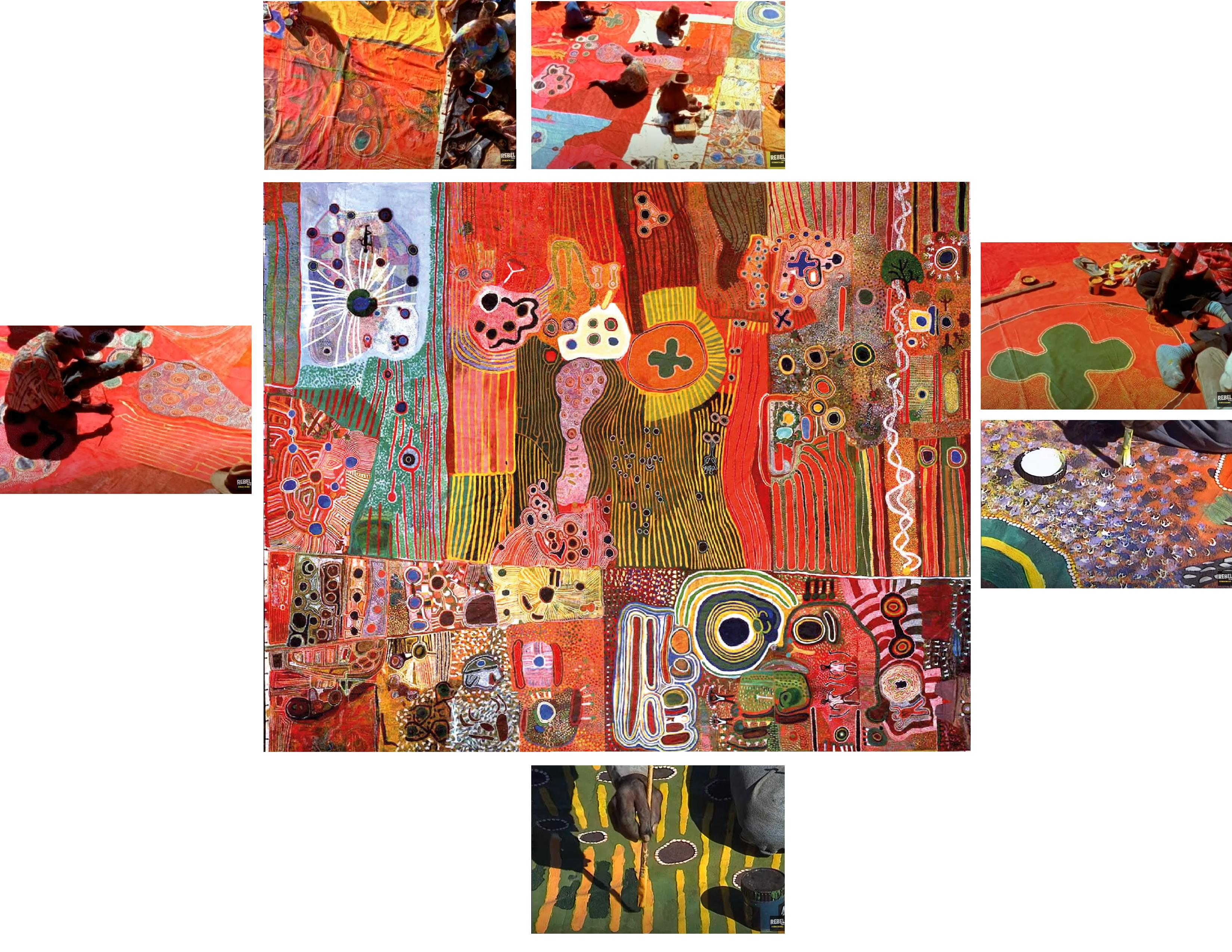
2/1 –
Travel
Ideas
Manmarriya Daisy Andrews
Munangu Huey Bent
Ngarta Jinny Bent
Waninya Biddy Bonney
Nyuju Stumpy Brown
Pajiman Warford Budgieman
Jukuna Mona Chuguna
Raraj David Chuguna
Tapiri Peter Clancy
Jijijar Molly Dededar
Purita Maryanne Downs
Kutiji Peter Goodijie
Kujie Rosie Goodjie
Yirrpura Jinny James
Nyangarni Penny K-Lyon
Luurn Willy Kew
Kapi Lucy Kubby
Monday Kunga Kunga
Milyinti Dorothy May
Ngarralja Tommy May
Murungkurr Terry Murray
Mawukura Jimmy Nerrimah
Ngurnta Amy Nuggett
Kurnti Jimmy Pike
Killer Pindan
Miltja Thursday Pindan
Pulikarti Honey Bulagardie
Nada Rawlins
Ngumumpa Walter Rose
3 3 2 6 6 5 4 4 2 1 5 1
Wajinya Paji Honeychild Yankarr
FUTURITY
a small room, as in a convent or prison or a small room, as in a convent or prison
“One of the reasons why we’re here is because of this question of futurity. So diaspora doesn’t always become a question of memory and archives. ” — Kodwo Eshun
The basics
Black Sun is often a symbol of esoteric or occult significance related to the eclipse. Three speakers in the conversation assert that the notion of the Black Sun allows people to feel lighter from the burden of the term ‘Diaspora’ since there are always political and historical meanings included. Moreover, they mention transmutability of languages and question how we can re-term this as a proliferation of languages.
From this perspective, they started to look into the future to envision what diaspora might be and could be. Science fictions, novels, and films about futurity that they introduced enable us to think about the divine or profane edge of the term diaspora. It comes to the word ‘futurity.’ It can create a dialectical transformation of the meaning of the term. Furthermore, it extends to occultism since mythic spectacle includes the past, present, and future. Science fiction stories could be a mirror of the myth.
Aliens and people from the diaspora have common characteristics while encountering strangers as a mutant of society. Eshun mentioned that domestication for the alien is part of the success of E.T., and this line could be an expression of the diaspora as a colonial diaspora.
Black Sun usually means eclipse of the day or occult significance, but in terms of diaspora, it reveals another discourse and expands other perspectives so that we can redefine ‘diaspora.’
Gyeom Chung
Diaspora Occultism Futurity Black Sun Language
2/1 – IDEAS TRAVEL
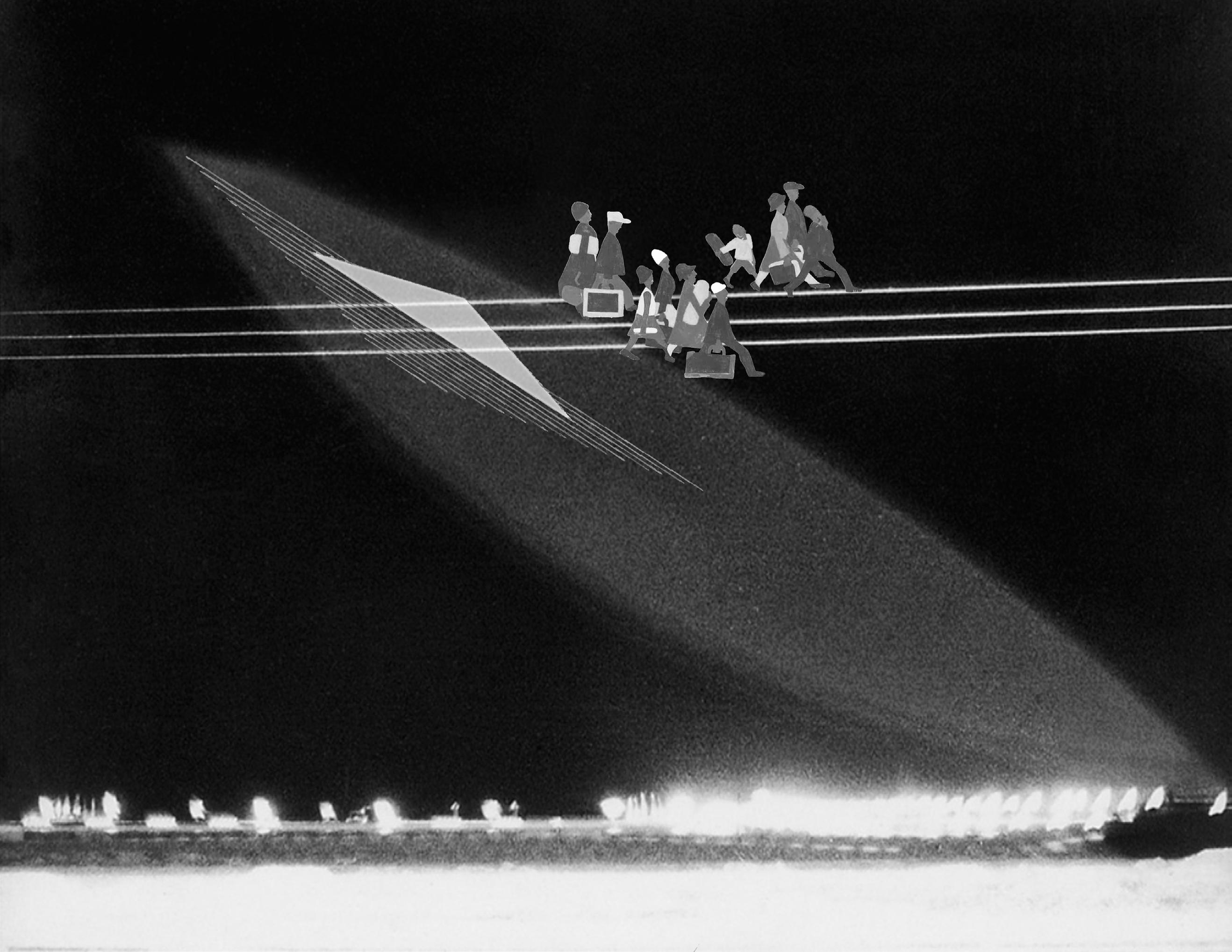
2/1 – IDEAS TRAVEL
Image from Narseen Mohamedi, ‘A RETROSPECTIVE’ and ‘UNTITLED’
Gyeom Chung
DIASPORIA
the dispersion or spread of a people from their original homeland.
- Oxford Languages
As Dawood mentions in his conversation with Eshun and Van Noord, he was brought to creating his project “Black Sun” through the idea of looking into different approaches to write about diaspora, migration and identity.
He mentions his intentions of trying to get past the idea of diaspora always bound to have a racial connotation or a religious cultural baggage. He uses occult symbolism as a tool to create a translability on of the contemporary diasporic connotation as an ability to both explicate and simultaneously occlude language. However it might work as a tool for transformability, it sometimes can be a tool for ignorance or hatred. As a searched more into the connections between diaspora and occultism I was intrigued by the connection between the diasporic nature of slave colonies in latin america and the connotations that the colonists gave to the practices as a problem of supernatural malevolence, for theses colonies the “unknown” became the
“I would make a more direct link between disporic movement and occultism. That could be bone out factually as well as intuitively, in terms of the movement of secret societies”
-Shezad Dawood
“occult” and they saw that as a form of rebellion.
In this picture I included one of the imagery embedded in Dawood Black sun, one that evoque the mysticism qualities he mentions and I overexposed onto two images of the case file of Domingos Alvares, an slave healer in Brazilian colonies which ended up banished to Portugal due to suspicion of potential sorcery, and the processions where penitents who reconciled with the Church, like Domingos, were required to approach the pulpit on their knees, heads bowed, candle in hand, to hear their sentence and publicly renounce their sins, the ones who didn’t were remitted to secular authorities to be burned at the stake. Through this contrast I want to evoque not only the transformation of the perspective of occult practices contrasting the use of Dawood concept of occultism through time but also the shady relationship between mysticism and diaspora.
Occultism
Transformation Diasporia
Mutation Symbolism
Javier Flores
2/1 – IDEAS TRAVEL
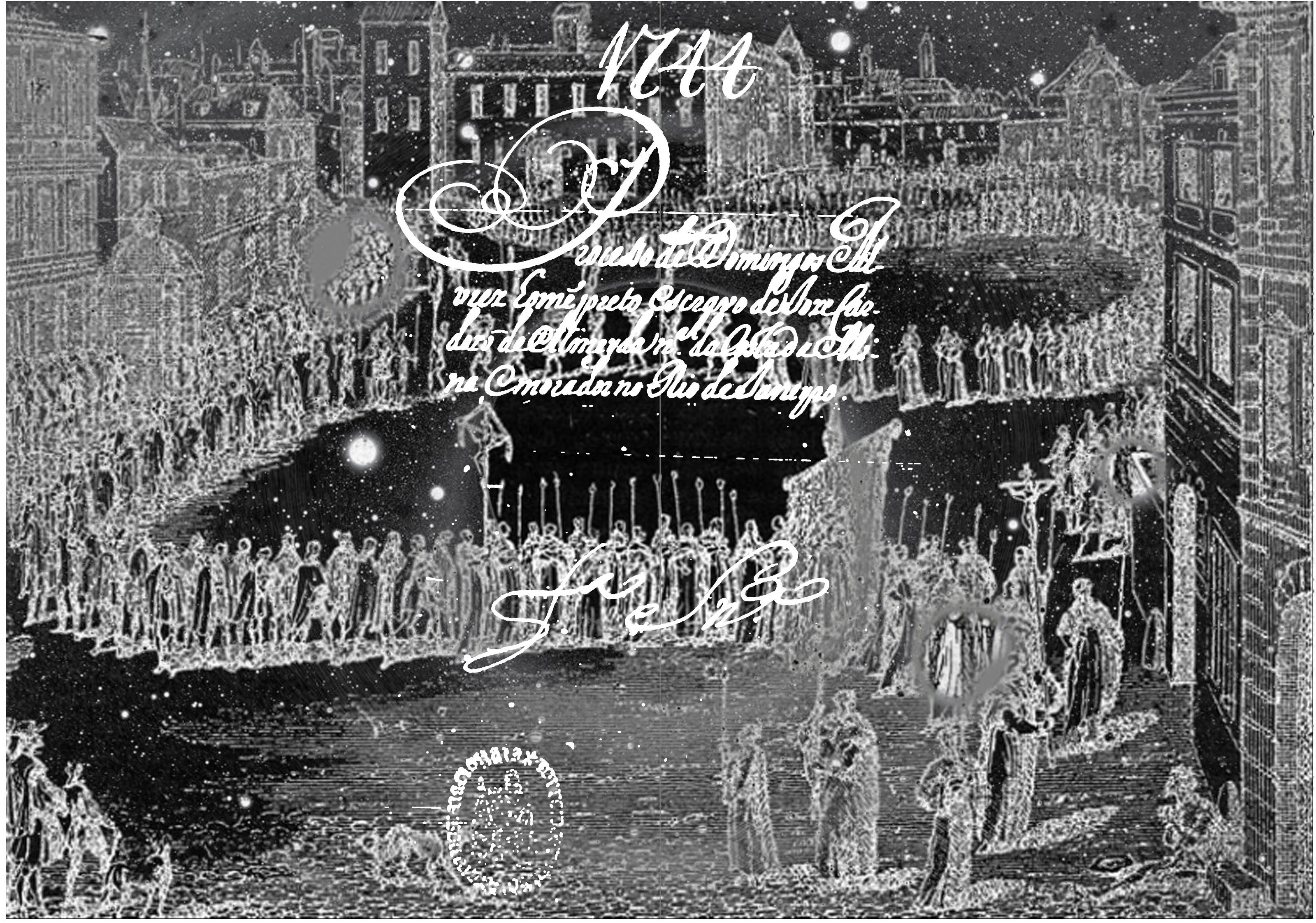 - Domingos’ Inquisition case file. It reads: “Trial of Domingos Alvares, black slave of José Cardoso de Almeida born on the Mina Coast and resident in Rio de Janeiro.” Tribunal do Santo Ofício, Inquisição de Évora, Processo 7759, fl. 3. Courtesy Arquivo Nacional da Torre do Tombo, Lisbon, Portugal
- Procession of the Auto da Fé through Lisbon. Lithograph from Esteves Pereira and Guilherme Rodrigues, Portugal: diccionario historico, chorographico, biographico . . . (Lisbon: João Romano Torres, 1907),
- Domingos’ Inquisition case file. It reads: “Trial of Domingos Alvares, black slave of José Cardoso de Almeida born on the Mina Coast and resident in Rio de Janeiro.” Tribunal do Santo Ofício, Inquisição de Évora, Processo 7759, fl. 3. Courtesy Arquivo Nacional da Torre do Tombo, Lisbon, Portugal
- Procession of the Auto da Fé through Lisbon. Lithograph from Esteves Pereira and Guilherme Rodrigues, Portugal: diccionario historico, chorographico, biographico . . . (Lisbon: João Romano Torres, 1907),
2/1 – IDEAS TRAVEL
- Shezad Dawood Black Sun
Javier Alberto Flores Leal
LAHOUD: terra nullius (Latin: “nobody’s land”) “a fig leaf cast back in time, eventually taken for a historical truth.”
MAHAJAN: Place-names are written as a mnemonic device, in order to spark the memory of particular journeys.
The writing delves into the cultural and historical context of the work known as Ngurrara II and the indigenous perspective of the relationship between humans and nature as depicted in the painting. Ancestral knowledge, both orally as well as transcribed, has passed down “empirically verifiable” accounts of sea level changes dating 300-700 generations prior or 7,000 to 18,000 years ago. The original intent of the work was for legal submission or proof of occupation for an “Indigenous Land Use Agreement”, which was a 1993 revision to previous Australian governmental jurisdiction.
The Mabo decision was a landmark legal ruling in 1992 that recognized the rights of the Indigenous peoples to their traditional lands. The case was brought to the High Court of Australia by Eddie Mabo, a Torres Strait Islander, and it overturned the previous legal doctrine of terra nullius, which had held that Australia was uninhabited and thus open to colonization by the British. The Mabo decision recognized that the Indigenous
John Max
L: “our culture, [] law, [] traditional law; where we come from, and who we are; where we walked on the land.” — ‘Land Council Chairman’ Kurinjinpyi Ivan McPhee
M: Vahan is a heterotopic space; it is an object continually in motion, connecting different places and ports, while being a world unto itself.
peoples had a form of land ownership prior to British colonization, and it paved the way for the Native Title Act 1993, which further clarified the rights of Indigenous peoples to their traditional lands.
The painting represents the Ngurrara people’s traditional lands and features various elements of their cultural heritage, including stories, legends, and songs. The vibrant use of color, intricate patterns, and the layering of images all contribute to a rich visual impact and cultural significance. It is considered an important example of contemporary indigenous art and is now part of the permanent collection of the National Museum of Australia.
-Settle
-Indigenous
-Jila: water hole
M: Dhows -Memory
L: Preserve
2/1 – Ideas Travel
Seven Sisters, APY Collective, 2018 | Womens Business, lee Rehardt, 2022 | My country, Artlandish Aboriginal Gallery
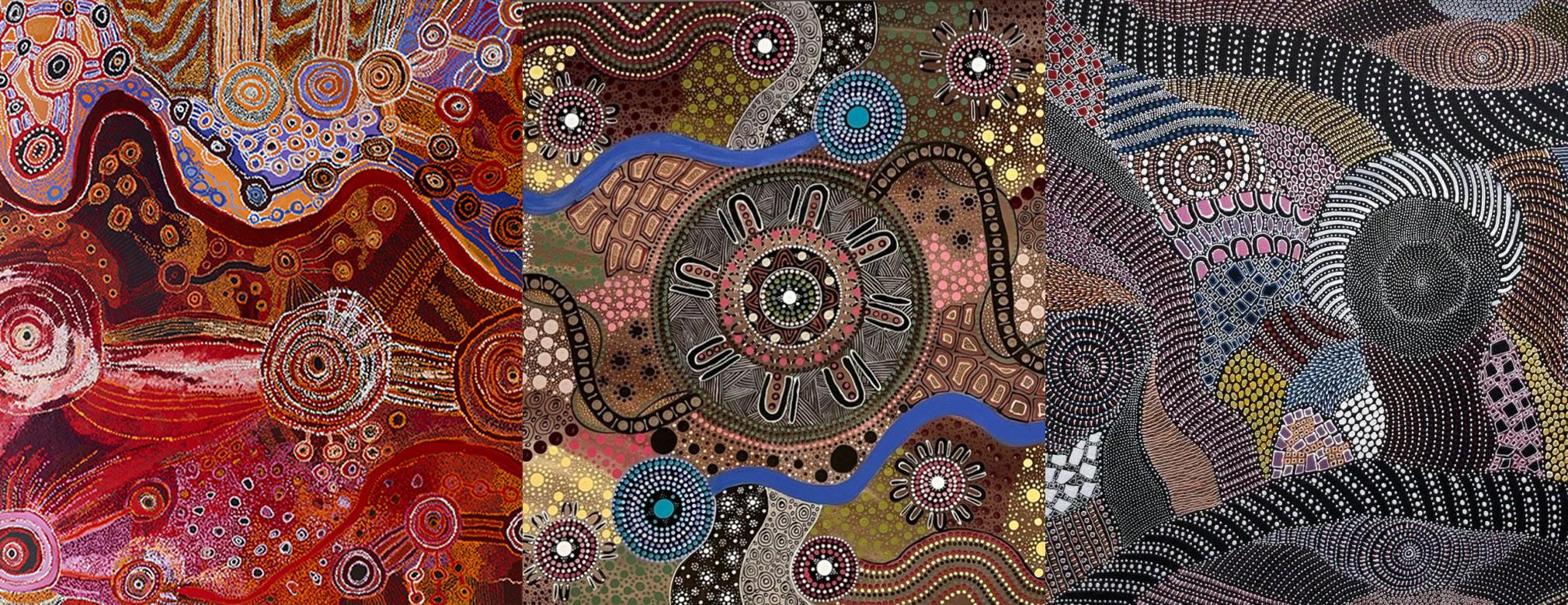
2/1 – Ideas Travel
John Max
MIGRANT BODY
noun: neither on one identity or community, but rather the uncommon estrangement of migration itself that allows migrant subjects to remake what it is they might yet have in common.
In “Home and away”, Sara Ahmed provides contextual narratives in order to ask questions and problematize notions of home, identity, and migration. What is home? Where is located and for whom? To problematize and ask questions about migration, Ahmed insists that we ask “the question of what it means to be at home in the first place.”
Ahmed sets up a discussion of literal and metaphorical interpretation of the terms migration and nomad. For Ahmed, metaphorization erases “real and substantive” differences between how and why certain movements occur. A problem of metaphorization of the term migration is the repetition of “the very process of migration, which involes a dislocation of space.” Speaking literally of migration introduces questions of political, economic, spatial, and temporal contexts. In relation to the metaphorical migrant, Ahmed qualms with theories of authentic and inauthentic migrants, describing how this binary both
“The question of home and being at home can only be addressed by considering the question of affect: being at home is here a matter of how one feels or how one might fail to feel.”
— Sara Ahmed
creates a hierarchical perspective on migrancy and propetuates violences of exoticization and idealization. This perspective also leads to a view that the authentic (privledged) metaphorical migrant can be liberated from this identity while the inauthentic cannot. Ahmed discussions metaphorical nomadicism and theory as nomadic. Like the in/authentic migrant, nomadic theory draws out the violence of translation, where the process of translation allows theory to name itself as subversive while all else which threaten are erased. Nomadic theory, and elective nomads like Global Nomads International, then is presented as “free” and “privledged”, yet also contained within liberalism and globalization.
Ahmed urges against fixed notions - of the migrant as subject, migration as literal or metaphorical, nomad and nomadism, home, the space home occupies, the movement between what is named as home and what sometimes, by some, is not named as home.
Khadija ann Tarver
Home Fetish Outer Skin Diasporic Dislocation Exception Culture(?) Privledge
2.01 – Ideas Travel
Nenet chooms in Siberian Yamal Peninsula with grazing reindeer
Institute of Nomadic Architecture, 2018

2.01 – Ideas Travel
Khadija ann Tarver
TERMINAL SPECIES
Species that derive characteristics from those that preceded them, but in a higher degree of complexity and precision.
“The fossil, with its mixed animal and mineral nature, is the privileged locus of a resemblance required by the historian of the continuum, whereas the space of the taxinomia decomposed it with rigour.” (Foucault, The Order of Things, 2007, p. 156)
Taxonomy Science Order
Blindness Collection Control
Foucault critiques the causes and manifestations that enabled the scientific quest towards the rationalization of natural life during the 18th and 19th centuries. In his critique he recongnizes the blind spots of natural history that were caused due to spacial methods of categorization. To him, ‘monsters’ have been missed, and ‘fossils’ have been taken apart into classified rubrics, in the large binary tapestry of taxonomic classifications. The main question we should ask, is how the privilege to organize life, that was given to sciences in the 17th and 18th century, has actually traversed into the architecture field and education, and how the form of scientific organization has managed to ‘purify’ the pedagogy, impoverish the lexicon, and define what is architecture and what is not. A specific form of critique to this methodology can be found in Hilla and Bernd
Becher’s work “Anonymouse Sculpture” where a systimatic use of classification manages to of-
fer a supplementary collection to the canon. By creating a visual archive of architectural typologies that were then excluded, they managed to resurface the Foclaudian ‘monsters’ of architectural forms. Looking at this retrospectively, and in relations to this text, one might say that this critique is intself of fault; uncovering the ‘monsters’ but missing the ‘fossils’ due to (im)perfect methodology of scientific classification.
Lealla Solomon
1/25 – Nomadic Images
 Bernd and Hilla Becher, WaterTowers, 1970 - 2010
Bernd and Hilla Becher, WaterTowers, 1970 - 2010
1/25 – Nomadic Images
Lealla Solomon
PRIVILEGED SEEING
A product of discursive formations, practices, conventions, and codes specific to architecture as a discipline and a profession. These affect the way architects see the world, think about it, and translate their experiences into built form.
“Only those artists and architects who instinctively knew how to “take possession of space,” to “occupy” it and thereby fathom its hidden dimensions, were vouchsafed, in Le Corbusier’s view, the consummatory and ineffable experience of “plastic emotion.”” (Foucault, Bestride the World Like a Colossus: The Architect as a Tourist, p. 163)
In Bestride the World Like a Colossus: The Architect as a Tourist Joan Ockman presents her critical opinion on the architect’s practice of travel by describing five different voyages of successful Western architects in the twentieth century. When doing so she ties a sense of romantic privilege to the practice of architecture; the architect’s gaze is linked to the longitude of travel, multi-media intuitive expressions, and untamed creativity, which is then presented to the world as the expert’s conclusion. Hence, she problematizes acts of observing, possessing, and ultimately designing space as an elitist practice of privilege, and raises questions of authenticity, authority, and resources.
It is interesting to think about these questions in current times, where advancements in technologies have allowed the architect to be anywhere in the world at any time. While travel studios are
still very much popular, low-budgeted schools and practices are manifesting the architect’s gaze within a more accessible medium. Mendelssohn’s camera, Venturi’s mappings, and Le Corbusier’s drawings have been today replaced by low-resolution street view photos, satellite imagery, GIS information, and Facebook communities data, taking the romance out of the equation and replacing it with free unlimited data. While this sparks notions of equity one must hold on to Ockmans critique; the ‘gaze’ still remains, and while travel in its physicality diminishes, it exists in the virtual realm, the means have changed but the method prevails, we still possess space.
Lealla Solomon
observer subject-object expert pure measurement
elitism architect-tourist-traveller
2/1 – Ideas Travel
Lot 40: ERICH MENDELSOHN (1887–1953) ‘Amerika: Bilderbuch eines Architekten’
(America: An Architect’s Picturebook), Berlin: Rudolf Mosse Buchverlag, 1926*
 Lealla Solomon
Lealla Solomon
Movement
a. noun : the act or process of moving
b. noun : a series of organized activities working toward an objective
“Migration has been employed as a metaphor within contemporary critical theory for movement and dislocation, and the crossing of borders and boundaries. Such a generalization of the meaning of migration allows it to become celebrated as a transgressive and liberating departure from living-as-usual in which identity (the subject as and at home) is rendered impossible.”
If migration becomes a metaphor for dislocation, what is associated with this movement? Is there an unfamiliarity? Is there an uncertainty? Is there a discomfort? One’s relationship between identity, belonging, and home changes when one migrates, but how? Do we take on different identities? Do we become members of several groups? Do we consider multiple places home? Or are we lost steadily trying to find someone or something to grab on to?
“The question is not simply about who travels, but when, how, and under what circumstances?”
– Avtar Brah
As it relates to The Great Migration, we must consider the transgressions that were faced that instigated such a movement. However we must consider the transgressions that met migrants in
Robert Louis Brandon Edwards
northern cities as well and how they have affected later generations today. Acts of violence, discrimination, and exploitation pre- and postmovement have left devastating traumatic marks on generations of people looking for avenues of belonging or to belong within sexual, gender, and class identities. Some relied on material items and became consumers. With movement came access— access to different fashions, worlds, and vices. When a migrant leaves home and becomes exposed to other things, does that home become obsolete? Or does that home become a point of reference and maybe even a point of return?
02/01 – Ideas Travel
Agency To Belong Freedom Home
Identity Journey Migration Mobility Movement
Man, I promise, I'm so self-conscious
That's why you always see me with at least one of my watches
Rollies and Pashas done drove me crazy I can't even pronounce nothin', pass that Ver-say-see
Then I spent four hundred bucks on this Just to be like, “N****, you ain't up on this"
And I can't even go to the grocery store
Without some Ones that's clean and a shirt with a team
It seem we livin' the American Dream
But the people highest up got the lowest self-esteem
The prettiest people do the ugliest things
For the road to riches and diamond rings
We shine because they hate us, floss 'cause they degrade us
We tryna buy back our 40 acres

And for that paper, look how low we'll stoop
Even if you in a Benz, you still a n**** in a coupe
– Kanye West, All Falls Down
02/01 – Ideas Travel
Robert Louis Brandon Edwards
AUTOMATISM
The ability to perceive an act as human-less or human independent to achieve a human desire.
“Whether used in the imaging of gods, in the rituals and logistics of mourning, or indeed in the recovery of the literal moment, photography is perceived as lacking in inherent integrity and thus open and available to the whims of power.”
- Olu Oguibe
A tool comes into existance and the most humble idea of image-making, opens a discussion: what is photography? and what is the substance of the image?
situation is a completely different way. We as a generation do see this in our daily lifes, the importance of photography in making normative opinions to recollecting memories.
The reading absolutely challenges all the personal opinions, biases and understandings about photography or the process of imagemaking itself. Human is introduced here as an agent trying to work around this absolutely new tool, that went on to add newer ways to document reality or the absence of it. In the western ontology, there is a sheer will to take control of this act, dismissing the process and technique from the photograph itself. Making it a verisimilar becomes the objective, and the whole subjectivity of the photograph limits to a mere mechanical approach.
Olu discussing photograph as a business, more together like a lifestyle of social construction with the ability in hand to make mythical additions as in ingredient in the process- is definitely challenging to our systemic ontological inbuilt, and is perhaps a provocation. My personal attempt here was to create, perhaps a similar and reverse provocation, but in today’s advanced automatic tools. The images have no association to the background or with eachother, but, here, automatism leaves one with ample space for narrative reconstruction. As the tool itself takes care of the subjectivity.
Automating this absolute reality or the verisimilar is bounded in the frame of that photograph, where in a narrative travels. A narrative that might proliferate objective of the
Rutwik Karra
Objectivity Automatism Human Mechanical
Subjectivity
2/1 – Ideas Travel
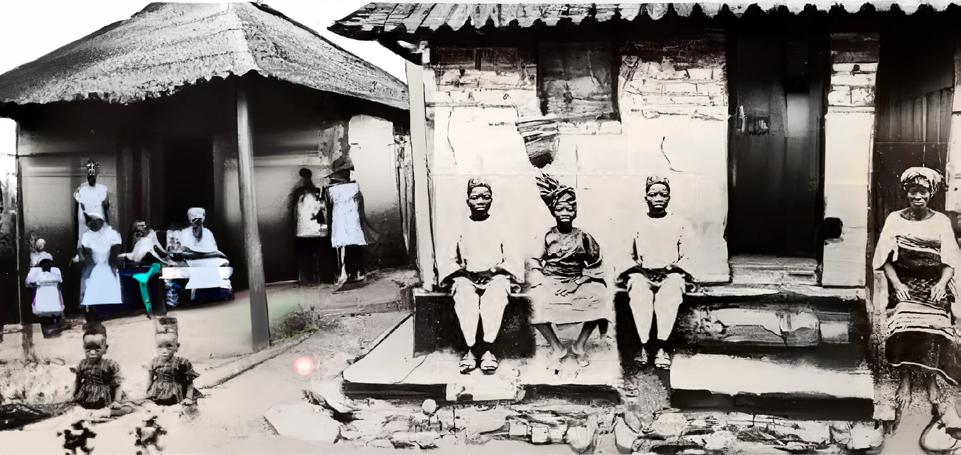


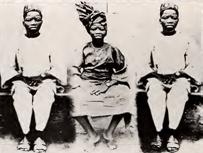
2/1 – Ideas Travel
Photographs from the reading worked on AI
Rutwik Karra
ARCHIPELAGO noun
(1) an expanse of water with many scattered islands
(2) a group of islands
(3) something resembling an archipelago especially : a group or scattering of similar things
Reflecting on the composition of this piece I am provoked to derive from my narrative and the narratives of my predecessors and their kin (if I may say so). Here the role of memory and narrative does not synchronize, rather it constructs fragmented connection(s) and right(s) to the land. In the absence of ‘official documentation’, we rely on memory or rumors and we use the (former) constructed environment (or what remains of it) to cement these narratives. A deteriorated bulleted building speaks to the former presence of Maronites in the southern suburbs of Beirut. Simultaneously, it speaks to the displacement of Shias from the, at the time, occupied south. These narratives so far have bred fragmentation, violence, and diasporic networks. Rather than preserve, the violence erased the history and culture and converted it into a culture devastation. If these narratives created ugliness, what does recreating and depicting serve?
truth of tenure
2/1 – Ideas Travel
Sarah Abdallah
“Each island embodies a struggle to sustain alternative ways of being in the world, a rebellion against extinction that has been going on for centuries.”
cullture legal terra-nullius

2/1 – Ideas Travel
Sarah Abdallah
Walid Raad, Let’s be honest, the weather helped_ Saudi Arabia. 1998/2006, 2015


ESTRANGEMENT
noun: the process of moving from one to the other (Ahmed, 344)
“How is cultural baggage relocated?”
— Parminder Bucha
“How do bodies reinhabit space?”
— Sara Ahmed
Home and Away moved me in an introspective direction to think and reflect upon the ‘relationships of social antagonisms’ that are embedded within and that mediate my family’s history, and my relationship with Lashio, a town in Shan State, northern Myanmar. Lashio is what I’ve been told to be my hometown, where my parents grew up and left, where my grandparents had settled upon fleeing the civil war in China. Filtered through one generation, and passed onto me as my hometown, Lashio, where I’ve never lived, lives in my imagination as an amalgamation of memories I have of my annual visits and of stories told by my parents and other members of my family. In the strictest sense, Lashio doesn’t feel like home, when I go to visit I don’t feel at home, but it permeated my upbringing in Yangon in the ways that my parents inhabited Lashio as a second skin – my parents’ social circles consisted mostly of others from Lashio who also migrated to Yangon for economic opportunity,
our dinner table always had some sort of pickled veggies or fermented tofu that my aunt sent from Lashio, my parents spoke Chinese with a lilt specific to the Yunannese refugee population in Lashio. Upon my own migratory journey to New York as an undergraduate student, in the process of relocating my past and of reliving home most of what I sentimentalized were these very aspects of home that my parents constructed from their own reliving of Lashio. So, in a way, Yangon itself, where I grew up, appeared strange to me because of my parents’ estrangement from Lashio, and because of the way I inherited the way they relived Lashio itself in their process of moving away from it. As my visual response, I’ve placed a series of my photographs from Lashio that represent fragments of my sentimentalization of the place.
Theresa Yang
2/1 - Ideas Travel


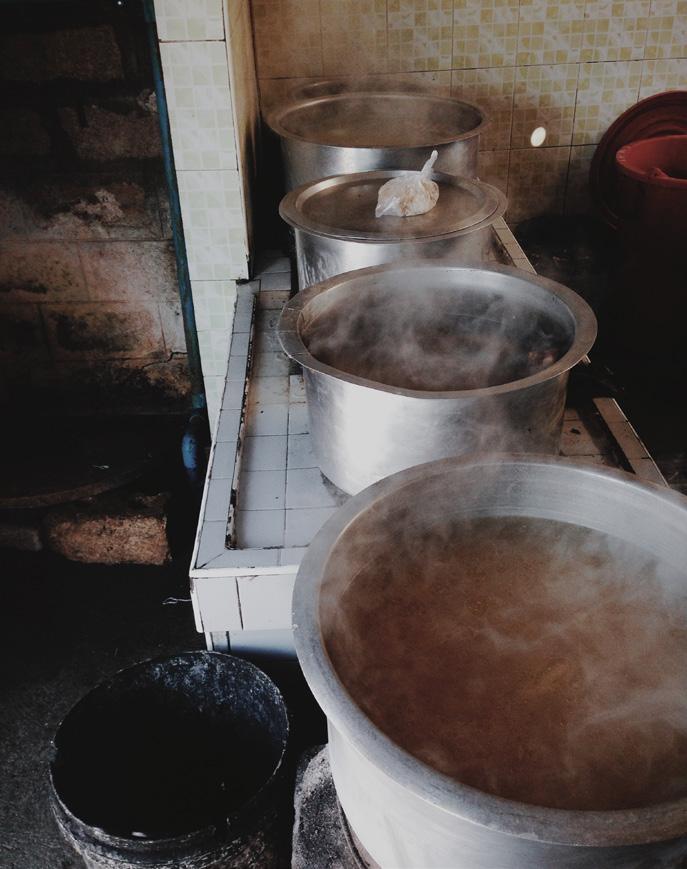

2/1 - Ideas Travel
Theresa Yang
Lashio
EFFICACY
noun: the fulfillment of an intent beyond the materiality of the image.
“The essential factor in the transition from the baroque to photography is not the perfecting of a physical process, rather does it lie in a psychological fact, to wit, in completely satisfying our appetite for illusion by a mechanical reproduction in the making of which man plays no part. The solution is not to be found in the result achieved, but in the way of achieving it.”
- Andre Bazin, What is Cinema
Photography has been labeled as many things historically; blasphemy, a war tool, a superstitious misgiving, a lucrative business,... Olu Oguibes piece is a contest for meaning in the act of photography; one between distortion and invocation, transparency and efficacy, “photographic” realism and verisimilitude, subjectivity and objectivity, eventually leading to two practices of ako and portraiture. The reading emphasizes on the idea of finding the inner truth of the ‘subject’ in not only the final product or mechanical intricacies of the dark room, but rather in the way of achieving it, using the camera as an instrument to combine possibilities of fidelity with those of manipulability for the fulfillment of the essence of the image. It calls out the Western articulation of photography as mainstream and largely associated with power created by the colonial personnel in exoticising the body, a voyeuristic practice that manifested into the ‘junglefication’ of Africa.
He obscures the acts of the highly defined west-
ern photography practice as fundamentally flawed and foundations of which lay within the myth of ‘automatism’; the static frame capturing machine as a substitute for the human hand, manifesting the absence of subjectivity and fallibility of human agency. In explanation to which, he elucidates African photography as an exploration of subjectivism that dissects layers of personal and anti-colonial struggle as well as using it as an instrument of subversion. This made me think/ question the conventional definitions for photography in present times when the substance itself is controlled by dominant powers of the society. The camera as an instrument of expression for a cause has been replaced by a plethora of variants, the technological advancement has obliterated the mechanical process that involved human agency, even before reaching the stage of manipulating the image, hence once again finding parallels to the West in employing the tool, the camera, and the practice, photography, as a process of ‘taking’ rather than ‘making’.
Vir Shah
efficacy manipulability transparency semblance subjectivity objectivity
verisimilitude
2/1 – Ideas Travel
Micheal Tsegaye, Chasms of the soul: a shattered witness, 2010

2/1 – Ideas Travel
Vir Shah
NOWHERE
a. adverb: not in or to any place; not anywhere. b. pronoun: no place/a place that is remote, uninteresting, or nondescript.
“A borderland is a vague and undetermined place created by the emotional residue of an unnatural boundary. It is in a constant state of transition. The prohibited and forbidden are its inhabitants.” —Gloria
Anzaldúa.
What does it mean to be at home? How does it affect home and being-at-home when one leaves home? It isnot simply that the subject does not belong anywhere.
Interestingly, it is the ‘real’ home, the very space from which one imagines oneself to have originated, and in which one projects the self as both homely and original, that is the most unfamiliar: it is here that one is a guest, relying on the hospitality of others.In such a space, the subject has a target country, an itinerary, indeed a future, but in such a destination, there is yet to arrive: there is always something comfortable, familiar, about airports and aviation terminals. They give me a sense of purpose and security. This is a definite destination, usually a place. ‘Here, home is indeed somewhere else, but it is also where I am going: the impossibility and necessity of home becoming the subject’s future (one that will never be there, but will always be there), rather than the past bound to a given place.
In the current state of political, social and moral oversaturation, this is a moment of calm, a pairing back, a reducing of information, politics and social mores to their ontological basics. Why can’t these simple acts , rather than seeming like a utopian drag, and certainly not always aesthetically appealing, be the gestures of the possible?
Yan Huo
Home Identity Migration Memory Estrangement Transgression
2/01 – Ideas Travel

–
2/01 – Ideas Travel
To Breathe
Zone of Nowhere, 2018
Yan Huo
REDACTION
noun : the censoring or obscuring of part of a text for legal or security purposes.
“This is in remembrance of those to come. This is in anticipation of those that are. This is in conversation with those that were. We are.”
— Belinda Kazeem-Kaminski
Redaction
Annotation
Blackness
Subject/Object
Unearthing. In Conversation as a performance delves into unchartered accounts of colonial presence and their invisibility in the EuropeanAustrian context. Where most occupation often was individualized and taken as a note of ‘civilising’ or ‘Christianizing’ manner, the same input often stated for the initiation of the Colonial Empire’s invasion into ‘colonies’, it speaks directly to its oppressed, of a violence denoted in the eyes of those photographed within the images of Paul Schebesta in a ethnographic study of the now Democratic Republic of Congo.
The piece uncovers the colonial presence, fights to find a way to recognise its violence and then covers its oppressed, looking back at it as a form of erasure. It recalls of the viewer/ reader to find their own reflection into these texts and this violence, but denotes a personal relationship between those that were violated and those that witness it even through these images, back then and today.
The image below takes this script of the performance written and performed by Kazeem-Kaminski and performs a similar redaction of the witness of colonial presence, the violence of the people in the images and the existence of an other, like the Austrian perspective presented with Kazeem-Kaminski form of protection in Democratic Republic of Congos flag colours. It is then annotated by the eyes of the people in these images, sometimes of Paul Schebesta, when addressing ‘colonial’ to contextualise and perhaps add to the attempt of the performer, to not erase but identify.
Aashwita Yadav
Remembrance Conversation
2/08 – Archives of Animism
Belinda Kazeem-Kaminski, Performance Script 2017
Images from Museum of World Culture / Austrian National Library
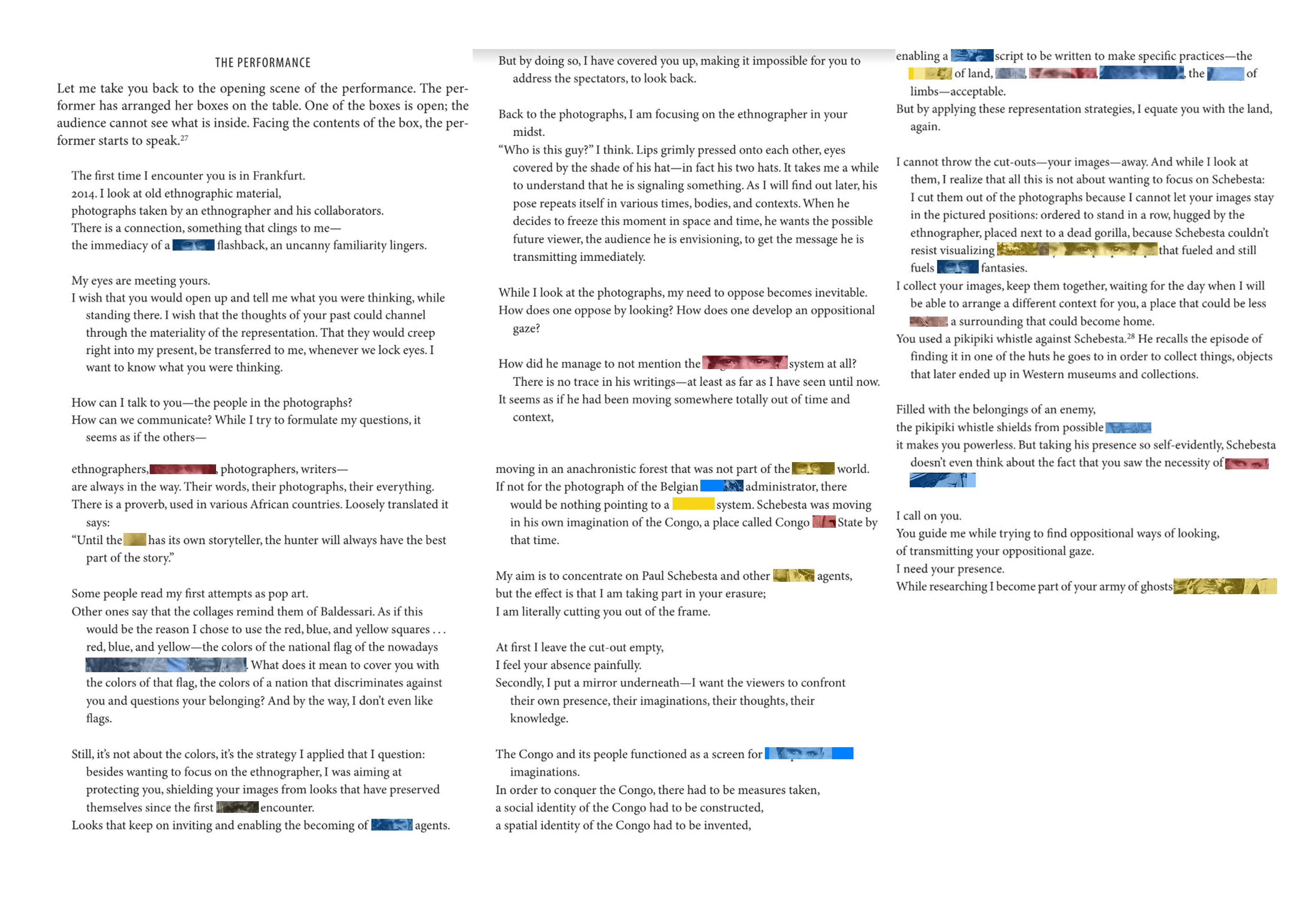
2/08 – Archives of Animism
Aashwita Yadav
REVOLUTION: Noun: a dramatic and widereaching change in the way something works or is organized or in peoples ideas about it
Somebody once said we never know what is enough until we know whats more than enough- Billie
Holiday
Revolutions are always seen from the perspective of those that oppress the bodies of others and are often viewed as an act violence but it is not necessarily the case. Revolutions can be expressed in any form and when we depend on them for our survival, the movement of our bodies becomes a tool that can challenge the status quo. This is where true freedom in a society begins: the independence of our bodies to move and change how we want without having to conform to society’s rules and etiquette based on color, gender or race. Esther Brown’s life was a constant fight for survival to be independent in a world that wanted to see only one type of person. She found freedom in places where the body could be truly free such as social clubs, tenements, taverns, dance halls, disorderly houses and the streets. In society today, our streets and
Alejandro Marin
public spaces are the most obvious places for expressing our freedom with our bodies and they have become more important than ever. As the scars from our past and present are leaving a footprint in the streets, we find ourselves outside moving as one challenging the rules that have been written to suppress our bodies.
Revolution
Freedom Body
Survival Clubs Taverns Street
02/07 – The Anarchy of Colored Girls

02/07 – The Anarchy of Colored Girls
Billie Holiday at Hall of Justice on narcotics charge, 1949
Alejandro Marin
RESTITUTE
transitive verb: to bring (a person or entity) back to a former condition; restore; to repay (property or money).
“The piece reflects on the political right of breathing collectively as a communal effort grounded in the need to denounce, resist and
Restitute Breath(ing)
Belinda Kazeem-Kaminski engages in decolonial countermapping to challenge the dominant narratives and power structures that have invisibilized the experiences and consequences of the forced displacement and systemic exploitation through the enslavement of Black bodies.
Camera Austria: Seven Scenes examines collective memory as a practice of remembrance to learn from the past as we navigate the present and towards the future.
Kazeem-Kaminiski resituates us against the colonial gaze, shifting/transforming the Black object onto a Black subject.
I believe that her approach can be examined as a powerful example of abolition geography, as she engages in non-linear perceptions of time and space to dismantle the ways in which the production of knowledge through the fields of geography, history, and art have been used to justify and maintain racial capitalism and imperialism.
It is interesting to consider Kazeem-Kaminski’s work in conversation with that of Ruth Wilson Gilmore in Abolition Geography: Essays Towards Liberation (2022), where she argues how the geography of capitalism has been shaped by and to reinforce systems of racial oppression.
Ariana Bon
As RWG encourages the creation of alternative spaces of freedom that undermine the relationship between capitalism and racism, Kazeem-Kaminski explores new possibilities to rethink, unlearn and remake visions for liberatory futures through the material and social organizations of space.
Wilson Gilmore advocates for abolitionist perspectives and practices, while Seven Scenes uses the exercise of breathing to demand reparation. Her work seeks to escape state power, surveillance, control, and violence, undermining how the idea of (white) innocence has served to mask larger structures of inequality that contribute to the criminalization and discrimination of racialized bodies.
Through her work, Kazeem-Kaminski visualizes and reimagines alternative geographies that are centered on racial justice and Black liberation, challenging the systematic fetishization and exploitation of Black bodies and experiences.
Image Imagine
practice ‘ungovernability’”
2/08 – Archives of Aninism
— Belinda Kazeem-Kaminski
abolition geography starts from the homely premise that freedom is a place. place-making is normal human activity; race is a modality through which political-economic globalization is lived; to describe is also to produce;
Ariana Bon
Kazeem-Kaminski, Camera Austria: Seven Scenes (video stills), 2022; Wilson Gilmore, Abolition Geographies: Essays Towards Liberation, 2022.


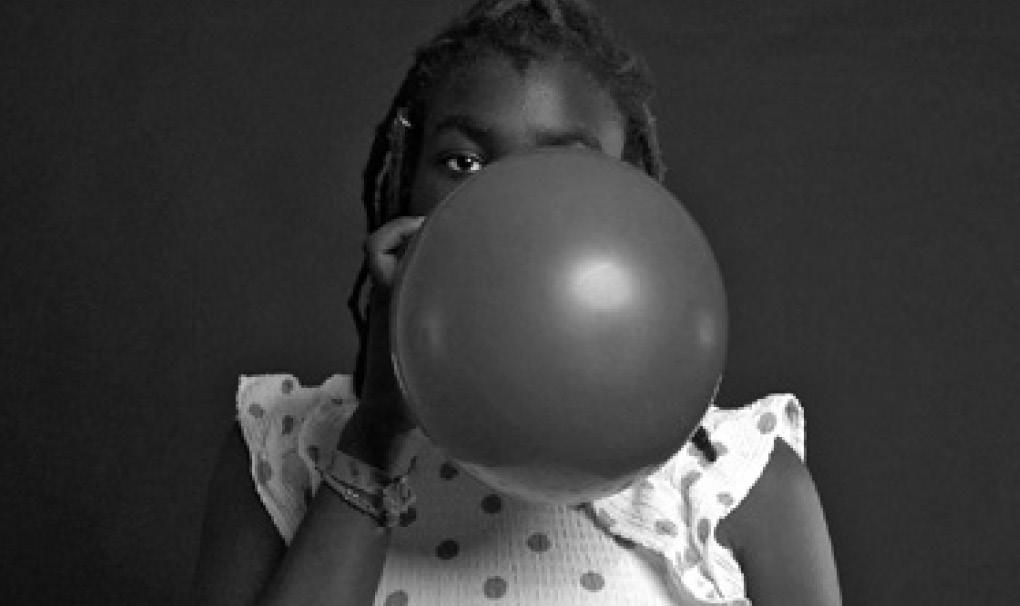

2/08 – Archives of Aninism
WAYWARD
adjective: following one’s ‘unregulated movement of drifting and wandering’; ungovernable
“
A revolution in a minor key unfolded in the city and young black women were its vehicle. It was driven not by uplift or the struggle for recognition or citizenship, but a vision of a world that would guarantee to every human being free access to earth and full enjoyment of the necessities of life, according to individual desires, tastes, and inclinations.”
Through her method of ‘critical fabulation’, Saidaya Hartman’s narrative utilizes extensive research and archival traces from interviews, letters, and case files among many other resources, to challenge the historical record by reconstructing the experiences of young black women whose names briefly appear within them. In her telling, “This speculative history of the wayward is an effort to narrate the open rebellion and beautiful experiments produced by young women in the emergent ghetto, a form of racial enclosure that succeeded the plantation” (Hartman, 470).
Tracing an episode in the life of Esther Brown, at the beginning of the 20th century in Harlem, New York, Hartman’s protagonist’s willingness to live outside of the social order and her general refusal to conform to forms of labor imposed by antiblack racism and gender norms, by an employer, a husband, and/or the state, assumed her
‘likelihood of future criminality’ and led to her subsequent targeting, arrest, and sentencing.
The ‘afterlife of slavery,’ the transformation of the plantation to the prison, took hold of the lives of many young, defiant women who were sent to the Bedford Hills Correctional Facility in upstate New York. The abuse and violence they were subjected to - under the guise of “treatment”- led to their resistance in the form of destruction and a ‘sonic revolt.’ The women created a chorus of noise, laughter, and screams as they protested the abhorrent conditions of the prison and their inhumane treatment. Likened to jazz by reporters, the anarchy of the women’s riot demanded freedom, abolition, and a life of their own volition.
Caroline Wineburg
Anarchy Critical Fabulation Refusal Wayward Weaving
2/08 – Archives of Animism
Ambrose Rhapsody Murray, “Dismembered,Unburied,Remember?”
Digitally woven tapestry, crochet, found fabrics, digital print on velvet, 2022
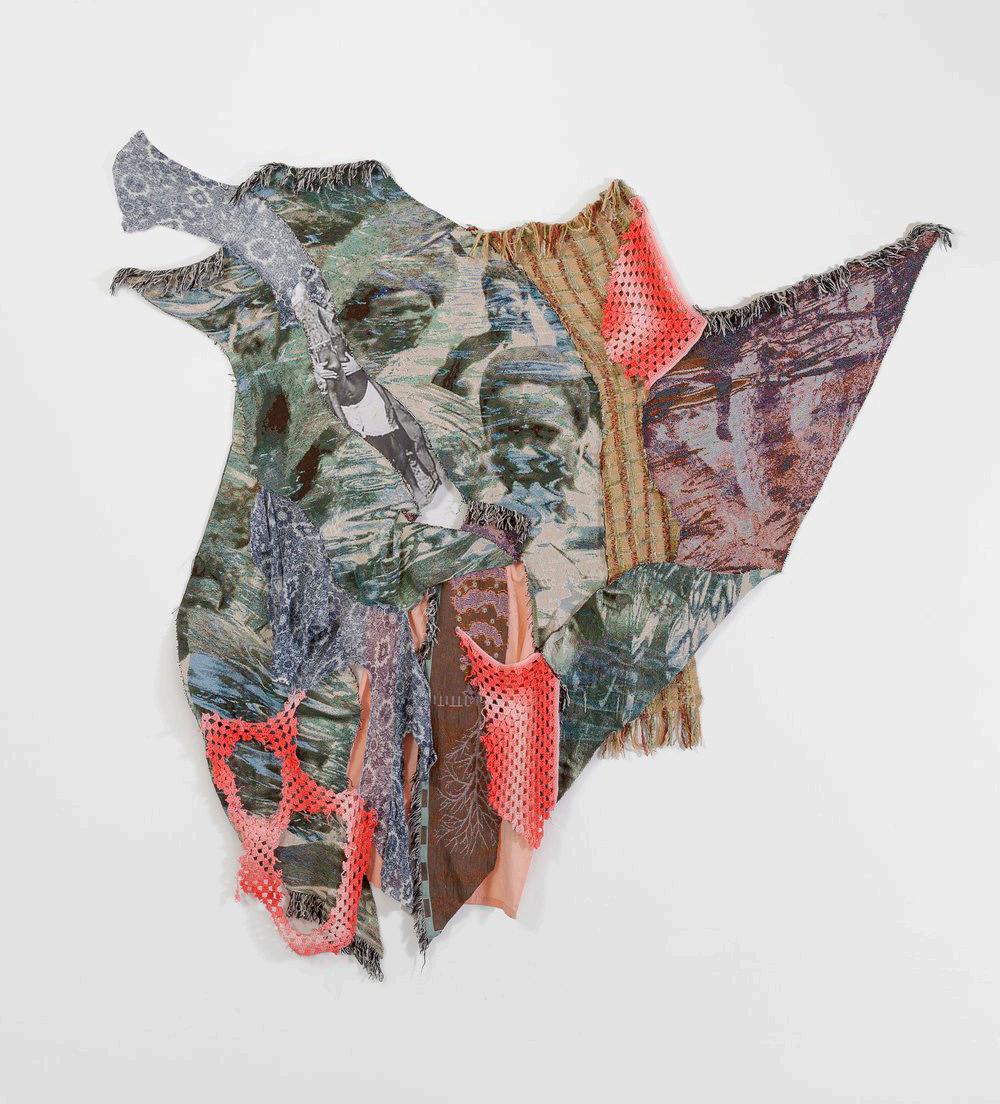
2/08 – Archives of Animism
Caroline Wineburg
MOVEMENT
noun: 1. an act of changing physical location or position or of having this changed. “a slight movement of the upper body” 2. a change or development. “movements in the underlying financial markets”
Reading Jason Adams’ text, the idea of occupying time, of breaking with the static view of space and of seeing things through an infinite and open framework, resonated with me. By occupying a space in time, we recreate that space. The symbolism of the building of the Palace of the Brazilian National Congress immediately came to mind, a project inaugurated in 1960 and designed by the architect Oscar Niemeyer.
The same building that served as the stage for the “Diretas Já” movement - popular demonstrations that called for the end of the Military Dictatorship in Brazil and the return of direct voting for President -, in 1983, was, 30 years later, the stage for one of the reflex movements of Occupy in Brazil, the “Movimento Passe Livre”, which began as a demand for the improvement of public transport and culminated in a demand for political reform, which was later co-opted by Bolsonaro’s false narrative, culminating in four years of a fascist government.
“Movement is not the prefigurative realization of a future ideal.”
Ironically, four decades after the demonstrations that called for the right to vote, we saw the same place, the building built by an openly communist architect and representative of the Brazilian democratic process, serving as a stage for demonstrations that called for the opposite extreme: the annulment of democratic elections and the return of the military dictatorship.
Thus, we see that the same spatiality moves or is moved, maneuvered, occupied, in different ways in time. When we occupy a physical space and not a temporality, we find ourselves doomed to the repetition of cycles. How to build barricades in time to last and overlap with spaces?
Time Mobilize Movement Occupy Collective
2/08 – Archives of Animism
— Jason Adams
Clarisse Figueiredo




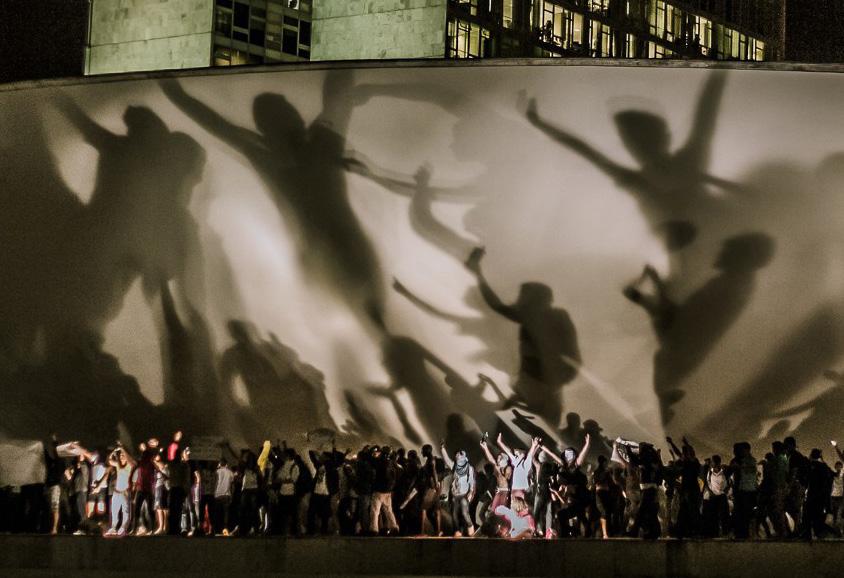 Brasil, 1984 - 2013 - 2023
Brasil, 1984 - 2013 - 2023
2/08 – Archives of Animism
Clarisse Figueiredo
VOCABULARY
a range of artistic or stylistic forms, techniques, or movements.
“I don’t know if one can a priori arrive at a regime representation that is African, but rather adopt a sensibility that is open towards different kinds of practices that are not normally considered practice for what the city should become.”
— Mpho Matshipa
Unfolding throughout the interview with Mpho are ideas around counter-cartographic approaches to designing with, understanding, and at times representing life in African cities. Mpho’s work and her thinking around the concept of critical mappings weave together space, time, relation towards more anti-colonial, disruptive, dynamic possibilities. Her work itself seems distributed and networked -- multi-scalar, multi-perspectival, coordinating ensembles of observations, thinkers, spaces, and their myriad qualities into conversation with one another. There are aspects of its process, maintenance, creation that seem spatial, and counter cartographic in themselves -- attuned to networks of power, institutions and how they articulate and represent African subjects, Mpho is focused on the complex work of reframing and reimagining.
This interview has many points of connection to Glissant’s work in Poetics of Relation -- the thinking around opacity is especially interesting and relevant when grounded by Emanuel and
Mpho’s examples of the tensions between legibility, opacity, representation as they relate to property, measurement, gentrification, academic work and how urban design challenges are conceived in African cities.
Counter-cartographies are not maps; they are methods, processes, networks, often non-representational, and always political (attuned to power and histories of spatial violence) and subversive. They are reckon with the spatial, but not always visually. I was struck by Mpho’s example of counter-cartographic work that takes up sound and the “smallest possible unit to measure space and experience” -- a shift to sound and its complexities (the way is resists measurements and forces consideration of standpoint, context) seems like an exciting entrypoint into the “aesthetic justice that takes account of different practices, different spatial practices, different bodily practices, different cultural practices” that Mpho calls for.
Dan Miller
remnants
disruption migration displacement openings
realignment
cartography
vocabularies
2/8 – Archives of Animism
 Collage of Three Civic Data Design Lab Projects on Nairobi, with cutouts
Collage of Three Civic Data Design Lab Projects on Nairobi, with cutouts
2/8 – Archives of Animism
Dan Miller
PARTICIPATION
a verb & noun: Referring to the process of co-authorship as both an act and a phenomenon onto itself.
"Under his arm stands a Black man whose eyes fixate on the camera --me-- grimly. Stuck between times, thrown backwards and forward, in the midst of colonial encounters, the slave ship, and the racist argument I had two days before,” —
Belinda Kazeem-Kaminski
I am occupied by the layered conversations: between Belinda Kazeem-Kaminski, to herself as perfomer, to herself as writer,
with herself standing in for those subject to the ethnographic image,
to us as readers, to an empty crowd in her filming of the performance, there seems to be a deep understanding of her own multiplicities.
"Staying in the wake", said Christina Sharpe, "turning the individual and often interior struggle outwards", said Belinda Kazeem Kaminski. She tells me about artists who reminds her of her work, like Ken Gonzales-Day's Erased Lynchings (2002). This decision to contextualize herself amongst others, feels in parallel to her decision to shield those individuals subjected to the ethnographic image.
I am occupied by the deep vulnerability of Belinda Kazeem-Kaminski. I feel her way of speaking is somewhere inside me as well. She gives these internal conversations form and space to grow and present themselves, allowing other voices to be included in that interiority. And I think in that act she invites me to do so as well. With myself, and by proxy with her and all those implicated.
Her form of writing, while highly specific, begins to trend towards modes of co-authorship. Her inspirations and references not only live in the footnotes but also within the main body text as well. In that sense, her work can be read as highly participatory, engaging in specific ways to those that came before her and different parts of herself that come about through her different choices of medium.
David Zhang
Performance Position Participation Living Histories Archive
2/08 – Archives of Animism
Belinda Kazeem Kaminski, Unearthing, In Conversation, 2017 and Ken Gonzalez-Day, Erased Lynchings, 2002-2006
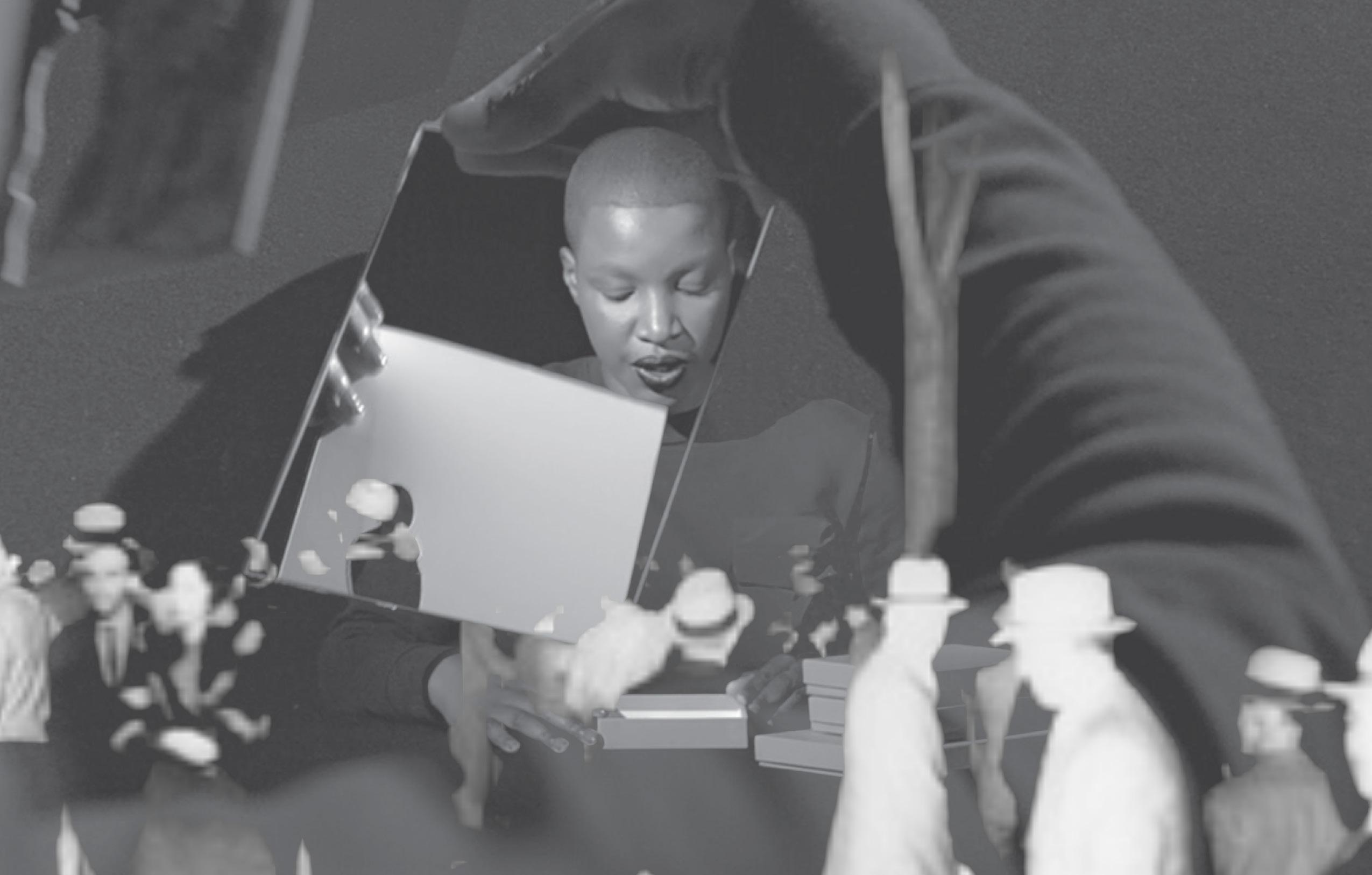
2/08 – Archives of Animism
transitive verb: a uman settlement of notable size with defined boundaries amongst different communities with calculated transparency that stems from desire to control. This interview explores how to expand the agency of architecture. Matsipa brings up her frustration about how her education and professional experience hasn’t helped her understand the complexities of the urban environment and developing architectural and urban tools to measure how the environment has been produced, transformed and shaped. We need to redefine the meaning of ‘city’ and expand our vocabulary of space by inquiring about policy, economy, ownership and experiment with and innovate ‘financial models to produce different kinds of architectural typologies.’ We need to explore different ideas regarding the future of the cities and the complexities of realizing it and breaking away from the white way of interpreting a city. Architects,urban designers and planners need to develop techniques and languages to rethink, mold and shape how the future cities should become.
“I don’t know if one can a priori arrive at a regime representation that is African, but rather adopt a sensibility that is open towards different kinds of practices that are not normally considered practice for what the city should become.” — Mpho Matsipa
Dynamism Mobility
Devanshi Pandya
tive imagination of society.’ He invents a new architectural typology that reimagines an interconnected urban ecosystem of shanty megastructure. Lagos acts as a ‘fertile ground’ for architects, urbanists and artists to experiment with concepts of alternate vision of futuristic cities. He fuses slum typologies with elements of high end neighborhood to highlight the marginalized and thus sparing conversation on reimagining urban landscapes. He puts low income neighborhoods that are located at the periphery of a city, in the center of urban development. Experimenting with different forms, tools and techniques culminated together to conceptualize the typology that could not only inform future physical space but also digitally in the form of interactive gaming and VR experience.
CITY
Similarly, Olalekan’s ‘Shanty Megastructure’ aspires to understand the changing role a city plays in ‘art,politics, popular culture and collec-
Typology City Futuristic
2/08 – Archives of Animism
Olalekan Jeyifous, Shanty Infrastructure


2/08 – Archives of Animism
Devanshi Pandya
Lagos, 2050?
STRATEGY v/s TACTICS
The notion of control and regulation of protests v/s the creative counters of the uncontrollable to fight for their opinions.
When an occupation was evicted by police, several more would simply spring up elsewhere, or in different domains, such as abandoned buildings or foreclosed homes.
- Jason Adams
Jason Adams writes about Occupying time as a concept that allows people to ask for their right to space and opinion in a city. The piece discusses the examples of Occupy Wallstreet and Seattle WTO protests. He elaborates on the relationships between space-time and strategy-tactics. It is restrictions that lead to creative repercussions of the situation. “Rather than seeing time as existing in the same neutral manner for everyone, multiple temporalities coexist, in a stratified manner” (p.17). These after-effects proved to be successful with a combination of tactics and the correct time frame. These innovations, however, can or cannot be supported by the use of technology. Adams rightly mentions that technology has defined “continents into new spatially defined tele-continents” (p.16). While the use of the internet and smartphones does allow global transfer of information; strategies can also impose restrictions on its use locally – thus, disconnecting this imaginary space in a moment. Considering the case of Egypt, the leaders of the
Devanshi Gajjar
Homogenous Counter-temporality Strategy v/s Tactics Interruption
country are keen on the development of a new capital 45 km away from Cairo. Criticisms of this project involve comments about the bias in accessing this new capital, along with the amount of military presence around it. This project also seems to be an escape from Cairo to avoid damage to the government’s impositions through protests by the citizens. The proposal has new definitions for urban public spaces – extremely monitored, guarded, and surveilled, with minimal opportunities for people to gather. People, who live 45 km away from the area in question. Would this new mode of absolutely cutting down the people’s voice lead to the creation of new modes of protest which involve imagining these spaces, not as transit but as living spaces? This image is not promoting a dystopia for the country, but then again, conflicts are bound to occur, and silencing the citizens of the country is not a resolution to those protests.
2/8 – Archives of Animism
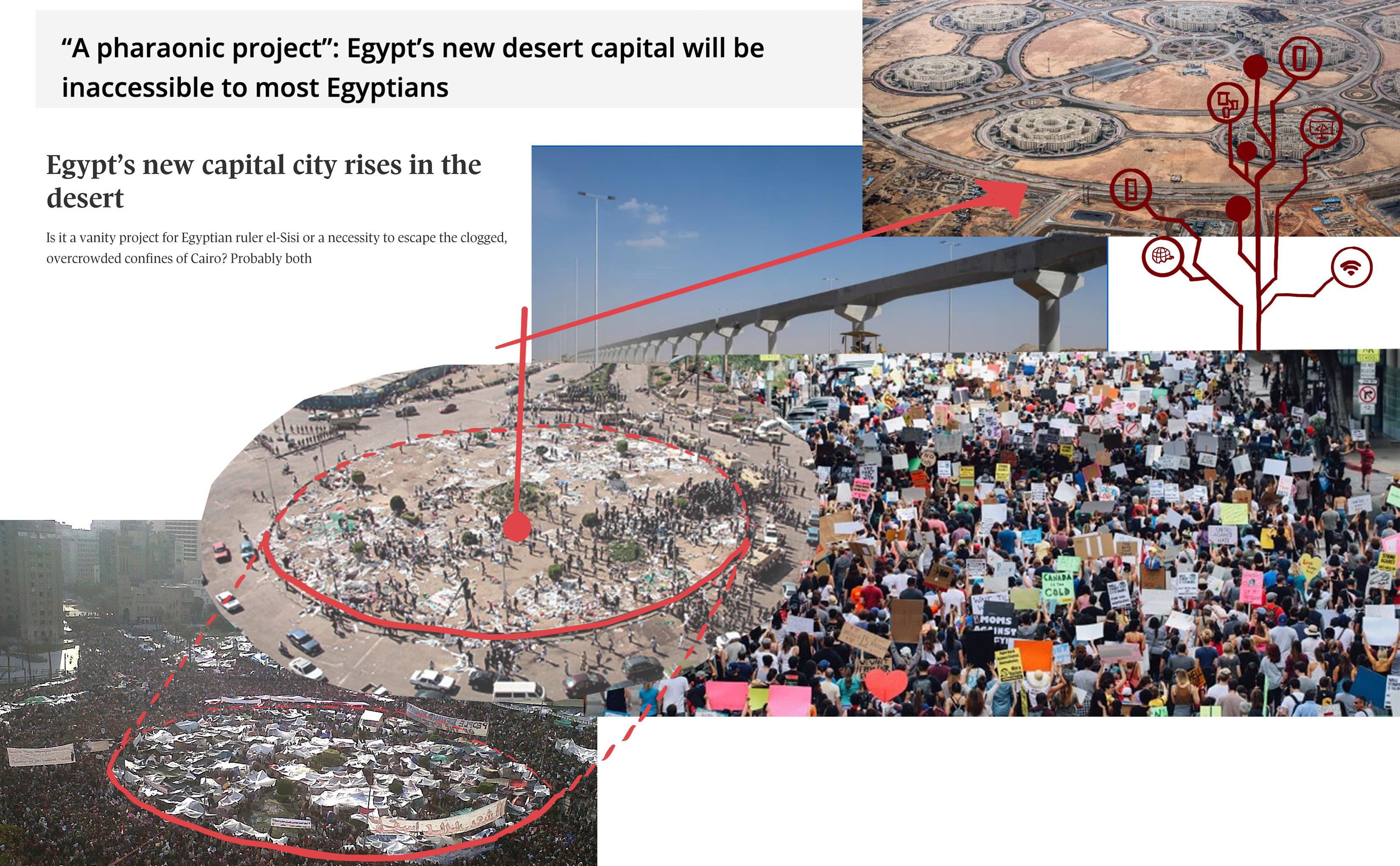
2/8 – Archives of Animism
Devanshi Gajjar
PARADIGM
Noun. A pattern or model, an exemplar; (also) a typical instance of something, an example -
Oxford English Dictionary
The author’s use of the term “paradigm” in the text caught my attention. The word has a powerful connotation in the discussion driven by Mpho Matsipa, implying a collectively accepted example, technique, or methodology that we take as inspiration from architects or are taught to look at. The paradigm also talks about time, things that have been the “right way of doing things” for a long time and have driven an appropriation of the aesthetic discourse.
Mpho Matsipa approaches the paradigms and references as opaque, not relying upon the local specificities of the place, culture, and identity. As the author stated, the challenge for the next generation of African architects is to “imagine beyond Europe and America” and to find creative ways to create references based on the specificities of the location. There is a need for openness and creativity in architectural design. In places where there has been little prior discussion or established references in architecture, such as Africa, it is necessary to find new insights
“When you inhabit a world or you inhabit a profession that never imagined you occupying any miningful space within it, then you are reinforced to be inventive, you are forced to assert yourself and to create space for yourself [...].” — Mpho Matsipa
Reference Paradigm Ethics Frame Creativity Lenguage
specific to the location’s context and culture, even through another type of expression, arts, or techniques. I felt identified with the text, and it made me think of my positionality within my context, Chile, a very isolated country but with a very powerful international influence. How can I push creativity as a practitioner in a country with a mixed or “contaminated” identity?
Francisca Alliende
2/7 – Archives of Animism
Who is the modulor? Collage. Opacities in Johannesburg.
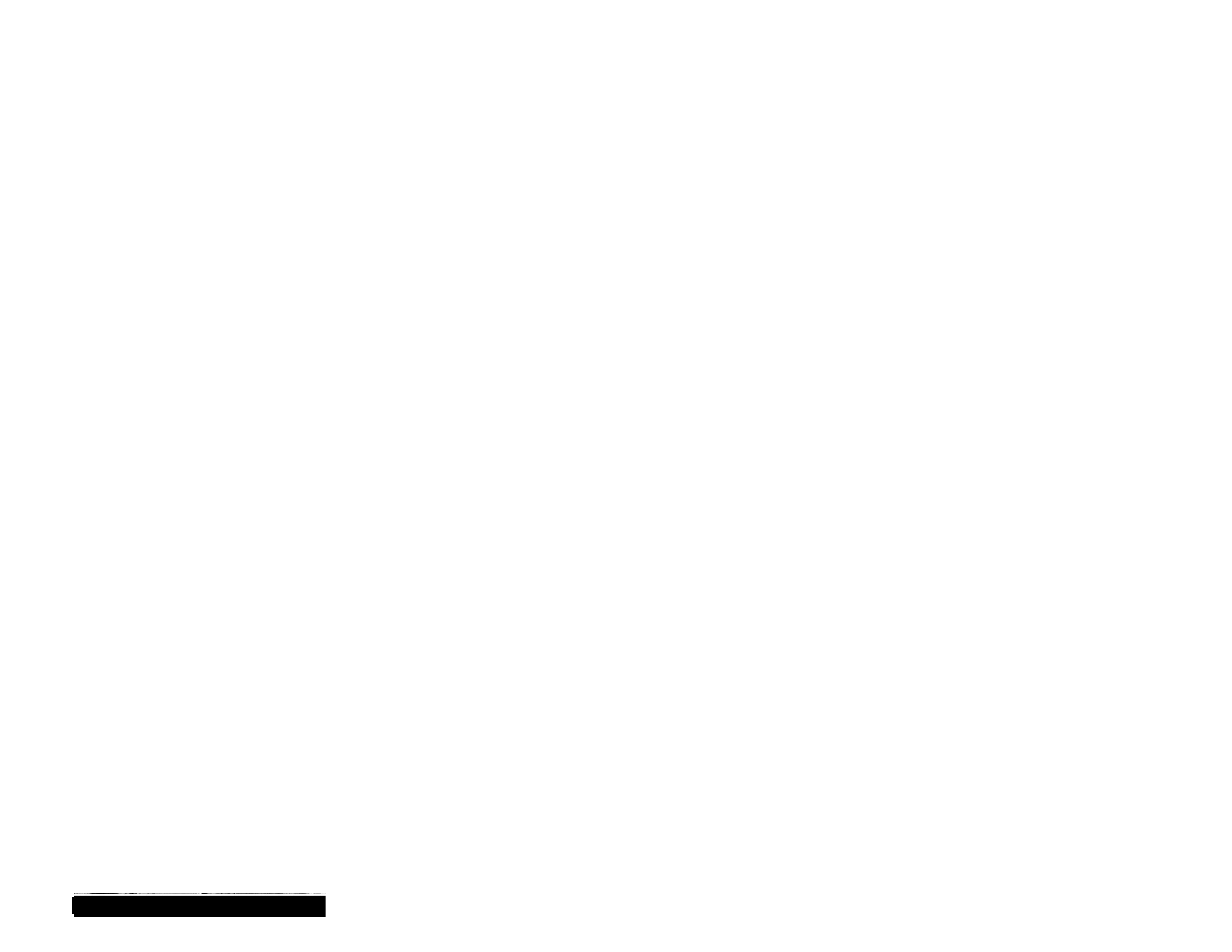
2/7 – Archives of Animism
3 3 2 6 6 5 4 4 2 1 5 1
Francisca Alliende
UNEARTH
to dig or get out of the earth or to uncover or bring to light by search, inquiry, etc.
“I am not the only Black artist and writer to point out the connection between being an object of the white gaze and the knowledge that is gained by observing how scopic regimes operate” — Belinda Kaeem-Kaminski
What I was interested in the conversation with Belinda Kazeem-Kaminski was the way how she treats and face art. Kazeem-Kaminski is making her own art as an observer of the world. She is cautious about making her artworks as being solely intersted, so she keeps writing and making conversation about works. It is not only unearthing social issues but also generating new questions and discussion by unearthing and archiving them. I truly agree with her stance in terms of art’ role, because the art’s role should not be a solution but should be an expression and discussion. That is the reason why she refuses fixation and monumentality of her artworks.
‘Void’, the term she mentioned, is the symbol of the extra space for people to engage by reworking, rereading, and reshaping her works. Moreover, she expressed archiving as “Heim-Suchung”, which means haunting in German, to seek what she wants to present to public.
One of her works, “In rememberance to the
Gyeom Chung
man who became known as angelo soliman’ epitomizes her stance, eliminating human in the piece. She tried to delete exaggerating emotion of Angelo Soliman, but displaying as an archive of the tools of him within respect of the man. The dipyich that she used seems similar with her work as fraiming and representing the case.
Black
Colonialism Unearthing Void Observer
2/8 – ARCHIVES OF ANIMISM
Image from “The Letter”, and “In Remeberance to the Man Who Became Known As Angelo Soliman, (Ante Morterm)1&(Post Mortem)2”, Belinda Kazeem-Kaminski

2/8 – ARCHIVES OF ANIMISM
Gyeom Chung
FREEDOM
the power or right to act, speak, or think as one wants without hindrance or restraint.
- Oxford Languages
Saidiya Hartman is able to shade a light into the perspective of the life of an american colored woman in New York in the 1920’s, Hartman does this through the story of Esther Brown, a colores girl incarcerated for trying to live freely.
Archives reveal that Brown’s problems weren’t her actions, but her attitude. She was young, poor, gifted, but above all, ungovernable. She did not wanted to live-in-service, as she saw it as a way of slavery, caring for others who didn’t care for you.
“Ester Brown was confronted with a choice that was no choice at all: volunteer for servitude or be commanded by the law”
— Saidiya Hartman
form that resembled impure intimacy, categorizing it as vagrancy or prostitution.
Through her writing Hartman exposes how during that era plantation was not abolished, it was transformed. Black women were constantly encouraged to behave like “good girls”, being punished for believing in their freedom of choice. Hartman is able to emphasize through Brown’s story how society wasn’t completely redeemed, they just changed their implementations and punishments.
Ungovernable Anarchy Freedom
Punishment Criminal
In the beginning of the 20th century no one could imagine young black women as social visionaries, radical thinkers or innovators. During that time Harlem was swarmed by investigators and undercover detectives keeping an eye on black women in the streets, where their offense was their skin color, their racial status was what made them criminals. Their status made them probe to be strictly regulated, punishing any
Javier Flores
2/8 – ARCHIVES OF ANIMISM
“Workhouse—Cell for Women.” In “The Modern Way,” 1913
Addison Scurlock, Howard University Students, circa 1920-30 (printed 1970)

2/8 – ARCHIVES
OF ANIMISM
Javier Alberto Flores Leal
Fleshbacks:
The word ‘flesh’, pertaining to human qualities, merged with ‘flashback’ as to connect memory and its distortion to physical, living form.
“to reconcile with the fact that I never fully know; whatever I think I know is just a snapshot. In addition, I remind myself that the will to know is very much connected to the will to control, and more often than not, to conquer.”
The term references African American scholar Hortense Spillers’ distinction between “body” and “flesh,” where the “flesh” represents Black bodies that have been subjected to by perpetual violence. The film explores the idea of the “flesh” as both a terrain for violence and for a new kind of relationality.
The film, from the project “VOIDS” including “The Letter”, follows new characters through increasingly indiscernible urban landscapes that become distorted toward the perception of an individual’s memory. Familiar elements of the previous work are used as a thematic link from the characters in the previous film, but with different characters in similar garments and contexts.
As the urban landscape becomes increasingly impending, characters “all following an affect, what some might call a calling, leading them into a zone where the lines between Vienna and Accra, between the then and the now, as well as the
John Max
here and there, become blurry and ultimately obsolete.”
“I understand care to be an antidote to the violence of degradation and objectification. While we have to accept that we cannot change what happened, we can decide to address the ones we are in conversation with, with care. In my practice, these decisions can be perceived on the level of the photographed people, but also the imagined audience with whom I or the people involved relate due to a shared—and I love how Noah Sow puts this—“sum of encounters with irritations of life”. Time and space are what I want to offer.”
Flesh Observer
Medium History Memory
Scopic Regimes
2/8 – Archives of Animism
“The protagonists are filmed in various places in an urban setting. They are not the same performers as in The Letter, but they show a certain connection to them through the props they hold (a magnifying glass, museum-restorer tools) and the black coveralls they wear. As the work progresses, something starts shifting. They begin moving around the city- climbing stairs, running uphill and downhill, scaling ladders; they are all following an affect, what some might call a calling, leading them into a zone where the lines between Vienna and Accra, between the then and the now, as well as the here and there, become blurry and ultimately obsolete.”
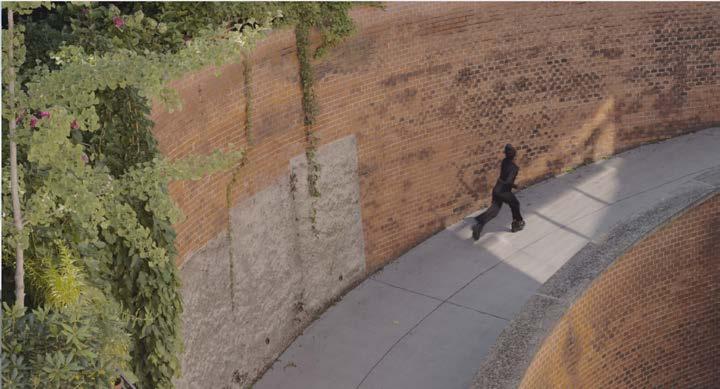 John Max
John Max
Belinda Kazeem-Kamiński, Fleshbacks (video still), 2021 (from the project VOIDS)
2/8 – Archives of Animism
L’OVERTURE
noun: another way to think about tumult, upheaval, and the radical practice of everyday life. It is also a reference to the revolutionary practice of enslaved.
“But I want to say more than this. I want to do more than recount the violence that deposited these traces in the archive. I want to tell a story about two girls capable of retrieving what remains dormant - the purchase or claim of their lives on the present - without committing further violence in my own act of narration.”
— Saidiya Hartman, “Venus in Two Acts”
Ungovernable Misreading Unthought Unimaginable
In this chapter, Hartman imagines “a minor figure might be capable of some significant shit.” The text, a chapter from Wayward Lives, Beautiful Experiments, is an exercise in critical fabulation. “The Narrative of Colored Girls Assembled in a Riotous Manner” is a narrative expansion of the framework developed in Hartman’s seminal text, “Venus in Two Acts”. Through extensive research Hartman reconstructs possible narratives black queer women intersecting in and around Harlem. The primary focus is Ester Brown. She hated to work. She loved the theater. She had the support of family, friends, and lovers who enabled her ability to skirt undesirable work as often as possible. Hartman describes her appearance, personality, and thought process (piercing eyes, prideful, and inchoate). She describes the scenes of Harlem and the feeling of experiencing them as “an everyday choreography of the possible.”
Her writing is poetic, emotive and emotional. It’s heavily subjective. To me, that’s its brilliance.
Khadija ann Tarver
“You will not live happy until your wild world ends.”
— Ester Brown’s ex-husband
To know, love, and care for the subject and for that position to be taken seriously is the type of viewpoint so often missing from retellings or reconstructions of history. Hartman doesn’t shy away or ignore the extralegal, nor does she apologize for wayward behavior, or try to paint the lives of wayward girls as polemic saints. Rather “The Anarchy of Colored Girls” continuously and rigorously contextualizes to create narratives and histories of complex humans. Hartman describes the Bedford Hills Correctional facility case file as a “sociological investigation with literary fiction”. The literary fiction of the file is mutated by Hartman in her practice of reading the whole archive as a work of world building literary fiction.
A question or challenge I always have with critical fabulation is the question or potential non-question of romanticization.What is the objective of the author? Why do they wish to construct a narrative untold and how will they do it? Connecting this text to Sara Ahmed’s “Home and away”, Hartman is creating something more literal than metaphor. Esther Brown is not a metaphor(?)
2.08 – Archives of Animism


 NYT Article on Seneca Village and Central Park Proposal, 1856
NYT Article on Seneca Village and Central Park Proposal, 1856
2.08 – Archives of Animism
Diana diZerga Wall and Nan Rothschild (offscreen) at Nan Rothschild Research Center, 2020
Khadija ann Tarver
CULTURAL ARCHIVE
An archive that is in its very essence incomplete and controlled by the culture in power.
“How does one think about blackness in a country where colonialism is rarely discussed, kept out of schoolbooks, and out of what Gloria Wekker
calls the “cultural archive” where Black people are, as Araba-Evelyn Johnston-Arthur accurately puts it,“caught up in a state of extreme visibility and extreme invisibility”? Which measures are necessary for proactively conjuring up the ghosts of colonialism? And which forms of artistic expression are able to grasp the grammar of suffering and violence against Black people without reproducing it?” (Kazeem-Kaminski, 2018, p. 76)
In her text “Unearthing. In Conversation: On Listening and Caring.” Belinda Kazeem-Kaminski dissects her journey toward a current art piece. In it, she contemplates other colleagues’ art that influenced her and constantly deliberates on the question of how to address art that deals with matters of coloniality, slavery, and blackness. She looks at some of her peers’ works in the critique of methodology, and in others, she embeds some pieces n her own work. It seems that she is so aware of technique with her scrutinization, that she almost completely duplicates one she finds to stand out. The constant discussion of what will work or not, made me personally ponder my own work as a politically involved architect. I grew up in the colonizing state of Israel. But as different from my predecessors, I didn’t come there in sheer patriotism and Zionist ideology, I simply was born and grew up in a very cute small suburb on the edges of Tel-Aviv. In retrospect, it is interesting and emotional for me to explore this background, as I now understand the conditions of segregation and
Lealla Solomon
racial identity construct that we went through. I was brought up not as a pioneer but as a keeper of the status quo; I chanted Israeli songs of land, looked at Zionism as a positive historical ideology, never met people from the Arab sector, and was saturated with fear from the second intifada. I was surrounded by the propaganda of fear and patriotism that when it was time to go to the army, I contemplated my “free” choice and selected to be a basic training instructor. I thought being away from home could be really nice, and will enable me to meet new friends that would replace the old ones. Today, maybe like Kazeem-Kaminski, I ponder the role of my existence, and how to deal with it and incorporate it within my architecture; should I go back? How can I do anything with my architecture if it is still just a colonial act? Should I collaborate with ‘the other side’? Or is it just another effort in progressivism? How should I reframe my architecture, my critique, and thus my life, in this context?
education archive invisibility action methodology
2/8 – Archives of Animism
A collections of mundane objects of racism and occupation

2/8 – Archives of Animism
Lealla Solomon
Mobility
noun: the ability to move or be moved freely and easily.
“The stories of yesterday are the tools for today and the answers for tomorrow.”
– Nayyirah Waheed
In the wake of what happened in Memphis last month and what’s been happening throughout this country since slave patrols began controlling the movement and physical mobility of Black people in the early 18th century, and because of my research on the Black automobilism, I read this week’s readings through a different lens.
If we view the automobile as an object that for some represent freedom, mobility, independence, and adventure, we have to acknowledge that it also represents danger, vulnerability, and uncertainty for others. This vessel that moves us through time and space and provides access and convenience also takes on another life form and exposes us to harassment, violence, and death. As Waheed says, highlighting what isn’t told and visible within hegemonic narratives makes us ask critical questions and see important parallels between the past and the present which is why I chose the quote above because history repeats itself.
Kazeem-Kamiński’s exhibition deals with communication, violence, and oppression
Robert Louis Brandon Edwards
towards the “racialized body” which is interesting because she talks about acts of resistance. In some Black communities, owning a car is a form off resistance. Marxism or Black Marxism both deal with Black consumerism as being closely tied with Black labor, slavery, violence, and oppression. Redlining and strict covenants made it impossible for Black people to own homes and property so automobiles created material wealth but also took on new life cycles.
In Harlem, we double park, sometimes triple park cars just so people can see them. We show them off like ornaments on display. It is a status symbol and reminder of social negotiations. As Hartman notes, the transformation from slavery to freedom is unique because we didn’t gain freedom and equality overnight and some would argue that we still don’t possess it. The rules and modes of oppression are ever-changing and evolve over time so much so that we become the oppressors. Basquiat’s Irony of a Negro Policeman shows how powerful that system is. How do we use objects to resist?
02/07 – Archives of Animism
Object Mobility Transportation Police Occupy and Occupation Occupation vs. Occupation Agency Memory


02/07 – Archives of Animism
Robert Louis Brandon Edwards Tony Webster, Investigators document the car Philando Castile was killed in, 2016; Oldsmobile Eighty Eight Advertisement, 1994
A capitalistic measurement tool to quantify trade, economy, work and exchange.
“If Occupy is truly to become movement, as it increasingly has of late, it must dispense with the static image of the movement.”
- Jason Adams
Expression becomes an inevitable mode of representation of public distress, and it usually happens in the way of strikes, some such long standing strikes evolve into movements. Understanding the geographies of occupying space in time, creates ‘counter-temporality’. The author talk explains it as creation of situation than a response to an on going situation, which I disagree with, as this creation is itself a response to an ongoing situation.
These counter temporal spaces could be understood in layers of work-loss, production halt, consumption stoppage, while it parallels to a production of temporary mediums of voice. That is where the Occupying with a strategy, of a space, in time is impactful, and could be understood as an innovative tactic. The loss of production, consumption and labor is a direct hit at the capitalistic economy which reads time linearly as a measurement. (As Marx argued, capitalist economics is ultimately a matter of time)
Rutwik Karra
Personally being in one such agitation, turned strike, turned movement (which is otherwise a halt), occupying space and time paved way for liberation of the people and hence, the creation of new state to which I belong. A funny fact of how, in this capitalistic structure, time is not just the government’s times, but also personal time that is at contestation, and every class responds to it differently.
TIME
Static
Movement Occupy Tactic Time
2/8 – Archives of Animism



Article headings from Siasat Daily and NDTV,
Unknown 2/8 – Archives of Animism
News
Photographer
Rutwik Karra
VIOLENCE noun
(1) the use of physical force so as to injure, abuse, damage, or destroy
(2) injury by or as if by distortion, infringement, or profanation
(3) intense, turbulent, or furious and often destructive action or force
“I begin to understand that the pain I am feeling does not target my body; it targets my flesh— my memory. The instant connection with the photographs also builds upon an understanding that the pain/injury, or what Warren calls the laceration or hieroglyphics, is atemporal; it exceeds temporality, mobilized by antiblackness, and it moves across temporalities and bodily manifestations.”
projection
Scenes of subjection haunt representations of otherness Black care
In Unearthing. In conversation, Kazeem-Kamiński traverses the remnants of colonial pasts. The ghosts of these pasts today haunt social and physical structures, behavior, and as in this essay, they haunt images and our perception. The context of the denial of colonial pasts and its surviving violence in its many forms haunts the images Kazeem-Kamiński uses to formulate an introspective. This dialogue between herself and colonial subjects in these images provides a space to confront unknown narratives, maybe as a collective care practice or perhaps as a means of relieving the atemporal lacerations. Nonetheless, the artist alludes to her fixation towards images of former colonial subjects which propels her to question the purpose of doing so and the appropriateness of re-prepetuating aggression. Perhaps the artist is attempting to piece the puzzle of her history through these the altered reproductions of a diaspora’s collective history. The dialogue between her and the subjects represents the hopes she plants in the opacity of history.
“And it is in fact the feeling of being haunted that instigated my research. If we bring forward the argument that Austria’s entanglement with histories of enslavement and colonialism is not simply forgotten but actively suppressed, then we can argue that suppression is a fertile soil for haunting.”
--- Belinda Kazeem-Kamiński
In search of answers, she reveals her haunting. The image I present shows Belgium’s Africa Museum and the British Museum in London with a Congolese sculpture in the center. These institutions are participants in the subjection of those colonized and to this day, the stand to benefit from the surviving violence of colonialism.
Sarah Abdallah
2/08 – Archives of Animism
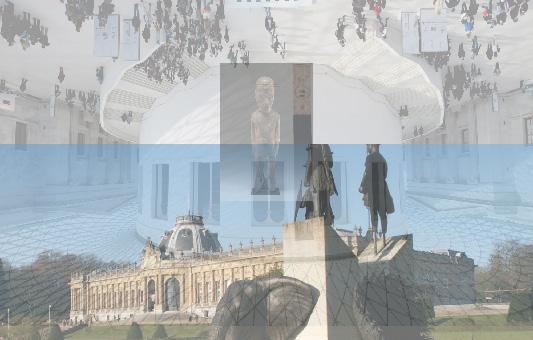
2/08 – Archives of Animism
Sarah Abdallah
monuments of violent legacies


OPACITY
noun: obscurity of sense, unintelligibility
Satellites have pounded a profound belief into architecture and urbanism: to understand more about territory one must see more of it. — Stefano Boeri, Eclectic Atlases (1998) ...opacity is actually the generalized condition of most cities in Africa and that legibility and transparency is a kind of modernist wet dream for what the city could become. — Mpho
Matshipa
At the beginning of the interview Matshipa brings up her confrontation with how her professional training and previous education had not given her a way of “understanding informality,” and for helping her “understand how African urban environments are actually produced.” In addition to this, later in the interview Matship also discusses cartography’s implication in helping make territories more masterable and governable by making them more visible. These thoughts resonated with me and led me to reflect on some of the projects I’ve come across within my discipline in the past and the type of framing that underpins their methodologies. For example, the Million Neighborhoods Initiative by the Manuseto Institute for Urban innovation sets out map neighborhoods that have limited access to streets marking them in red. The idea is a core problem with informal settlements is that due to lack of spatial access (i.e. buildings that are not immediately adja-
cent to a street), they can’t easily access infrastructure and essential services. The visual image I’ve provided is from the academic article that underpins the technical methodology behind this Initiative - I layered two parts of a Figure that shows a satellite imagery of an informal settlement in Khayetlisha, a township in Cape Town, underneath a derived parcel layout with internal lots with no access to streets outlined in red.
For me, this ties back to questions we discussed in class a couple weeks ago about the right to illegibility, who has the right to render a place more legible, and to what end, and to some of Matshipa’s points about “city-ness” and the limitation of our imaginations.
Theresa Yang
2/8 - Archives of Animism
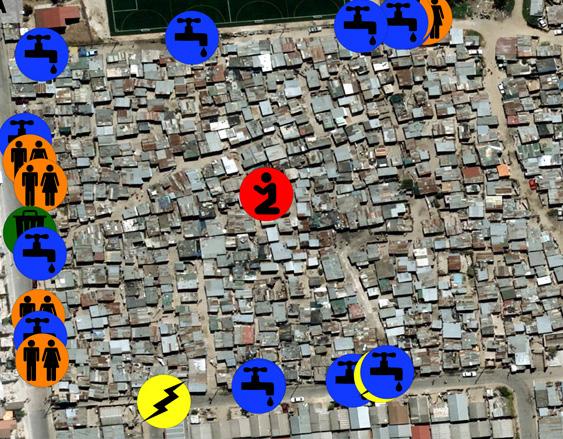

2/8 - Archives of Animism
Theresa Yang
Fig. 2 Neighborhood topology and the access networks of informal settlements
Christa Brelsford, Taylor Martin, Joe Hand, Luis M. Bettencourt
Breathing
The language of breathing connects with one another, across time and space, when living a life under subjection.
Through Seven Scenes, Belinda Kazeem-Kamiski attempts to reframe the visions of liberation for the Black Bodies that have been breathing under the dominant clouds of colonization through making the invisible visible. She emphasises the importance of a collective experience as being the key to de-stablize the systemic enviornment.
This reading was one about reconstituting the past, articulating a present and then reframing visions of the future. Kazeem-Kamiski’s narrative and intentions reads as a generous one. Through imagining sound as a transnational and diasporic connector from the traditional Black Atlantic formations, Blinda recalibrates us against the power structures and provides a new lens to experience the fored displacement and systemic exploitation.
I reimagined percpetions across time and space talks about a collective, a connection between bodies that have lived a life under subjection. The read along with reinscribing history of subjection.
also reflects on the politicla rights of practicing “ungovernability” and expanding the network in this resistance against the ongoing increase in state power.
Vir Shah
communion enunciating
“If you know, you (will) know.”
breathing reclaiming entanglement ungovernability
2/08 – Archives of Animism

2/08 – Archives of Animism
Vir Shah
Camera Austria, Belina Kazeem-Kaminski on Museum of Africa Archives - Washermen on Braamfontein Spruit (L), 1890 and “Photo of African maid”, 1890 (R)


MANIFESTO
noun: a public declaration of policy and aims, especially one issued before an election by a political party or candidate. The reading takes us through a flow of dialogue between Enrique Walker and Rem Koolhaas, deconstructing the influence of the latter - and his recurrent theme of examining cities in a retroactive manner as a manifesto. Enrique marinates the conversarion by deciphering a manifestos weakness that a city’s observational and speculative evidence - a retroactive flânerie allows - but further critiques this form of documentating as a flow of reporting observations and extraction of abstract concepts from generics to specifics across the era of 1990s to the early 2000s. With a generic city and a contemporary city breakdown where Rem Koolhaas issues a ‘City with no history’ documentation vs a ‘Chaos and self-organization’ later renamed as ‘the decay of modern infrastructure’ city Enrique Walker questions this new lexicon as a means of representation - its relevancy and purpose over a decades long period of publishings - a cliché. It is a documentation of a certain city at a certain moment, and that moment is described as over.
“Travelling implies examining a city as much as appropriating the material used to examine that city, both observation and détourment. Under the cobblestones, one might potentially find the beach .” — Enrique Walker
The cities no longer hold their original findings. With Mutations where city installments equate the city to the world - where the margins and the city center isn’t discerned, the image references the ‘reproduction of the site’ where the elevator fostered a form of architecture where buildings are extrusions of the site, every floor a virgin land and no program bears relation to the one above or below. The city further dviates from specifics and creates a generic - one that defines the ‘current cities’ of the world at this point in time.
Aashwita Yadav
Manifesto Speculation Evidence city in a City Contemporary city Banlieu Generic city Representation Interpretation Flânerie Treatise Surrealism method
2/15 – Who is Ordinary?
Illustrations on: The City of the Captive Globe, Delirious New York: A Retroactive Manifesto for Manhattan, 1978

2/15 – Who is Ordinary?
Aashwita Yadav
MYTHIC:
Adjective: Exaggerated or idealized
Urban mythologies remind us of those who have been rejected and criminalized in the city. They are a revolution that has marked our spaces, shaped our culture and conflicts. Although these images are bizarre and suggest unresolved issues in our public spaces, they are a constant reminder of the tensions and conflicts from a past from which we can’t seem to escape. It allows us to question our public spaces, our own relationships and our connections to these moments in time. By placing our own bodies in the city, we can understand the impact these images have in the layout of those spaces and allows us to use our own body to measure and travel the internal conflicts that have shaped our cities.
The image of El Che Guevara follows the National University of Colombia around everywhere, reminding them of a past and present where the political discourse has caused so much damage in the country and the people, creating divisions not by race but ideals. This image is an attempt to preserve a past and an
...we have a spectacular ritaul instantly turned into symbol ... the spectaular keeps the larger issues of society in our minds, obliterating the details: it provokes identification through recognition and feeling rather than through observation and analytical though: it calls for emotion rather than convition; it establishes a vast sense of precesne without offering intimate knowledge ... it confirms without necessarily offering a challenge. It is the literature of the powerless identifying the key factors responsible for their powerlessness nothing beyond this can be expected of it -
Ndebele, Njabulos
internal armed conflict which has lasted over 70 years and has shaped the towns, city, and country, and attempts to hold a mirror up to it. This image is a symbol of oppression for many and, ironically, also viewed as the picture of a hero and liberator. It is a constant reminder of struggle and oppression from which we can’t seem to escape. But maybe we can take bizarre images like this not as a conflict but rather as the key to opening up conversations and interventions about our present which we desperately need to address.
Alejandro Marin
Villan Structure
Stereoptypes Hero
Mythic Seggregation
02/14 – URBAN MYTHOLOGIES
Universidad Nacional de Colombia. Author unknow

02/14 – URBAN MYTHOLOGIES
Alejandro Marin
TRUTH
The body of real things, events, and facts: ACTUALLY.
“It is a practice that I characterize as neither utopic nor autonomous, and neither pessimistic nor futuristic.”
Tina Marie Campt addresses the practice of refusal as a constant struggle for the disinheritance of whiteness. Through an exploration of the works of Arthur Jafa and Luke Willis Thompson, Campt reminds us that refusal is a constant struggle within the structure of racial patriarchy.
Reading Camp’s text reminded me of a manifesto by the UCLA Abolitionist Planning Group (2017) which sought to address the discipline of planning by refusing to continue the systemic and institutionalized oppressions by urban planners.
The resource guide outlines steps to to understand Trumpism as a moment in US politics, refusing to encourage systems that divide and oppress. It is a pamphlet produced to critically and historically reflect on the political economy of planning to understand and ultimately refuse our “complicity in systems of racial capitalism and patriarchy.”
However, because professional planning as an institution is complicit in the making of penal systems and the reproduction of institutional violence, the manifesto has faced enormous backlash and resistance.
Campt invites us to refuse the whiteness of our truth-making disciplines. To refuse being a diversity trope while keeping the structures of white theory intact.
Abolition seeks freedom, and unfreedoms occur through planning (segregation, surveillance techniques, disenfranchisement–to name a few). By continuing to put power in the hands of planners, we are centering the legacy of planning as a tool for colonization.
Ariana Bon
Resist Unlearn Truth Negate Center
2/15 – Who is Ordinary
— T.M. Campt
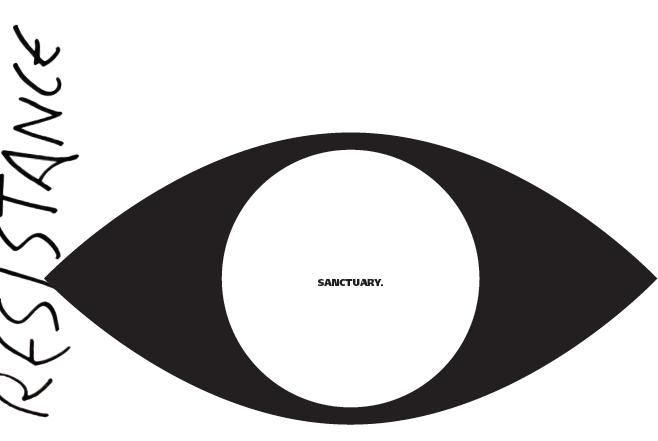
2017 2/15 – Who is Ordinary
UCLA Abolitionist Planning Group, Abolitionist Planning for Resistance, pamphlet.
Ariana Bon
REFUSAL
noun: the act of refusing or denying; withholding; “a rejection of the status quo as livable and the creation of possibility in the face of negation”
(Campt, 83)
Sitting through the eight minutes of Apex, I found myself unblinking and nearly holding by breath as the images flashed on screen. Transfixed by the arrhythmatic beats of Arthus Jafa’s ‘still-moving-images,’ Campt’s words further resonated as the work’s impact was “more embodied and corporeal than visual” (Campt, 82). The frequency with which the images vibrate leaves one unsettled yet expectant, entranced by what Jafa describes as his practice of “black visual intonation” (Campt, 83). The visual and sonic dissonance of the moving images, ranging from recognizable celebrities, planetary forms, microscopic photography, cartoons, to graphic imagery of violence enacted upon Black bodies, brings an awareness to the act of witnessing as the viewer is drawn deeper into the experience of Apex.
“The metronomic pulse of life Jafa conjures to animate the still-moving-images that comprise this piece calibrate a visual frequency which tethers black life to black death, black pleasure to black pain, and black beauty to its inextricability from the terrible beauty of a black grotesque.” — Tina Marie Campt, Black visuality and the practice of refusal
which includes “still-moving-images” and “phonic substance.” Both terms are wholly manifested in Jafa’s work through the visceral responses to the images, their sounds, and the range of feelings elicited by them. Refusal here is illustrated by a rejection to look away, a negation of the amnesiac framing of history, and as a creative assertion of opacity.
Arrythmatic Black Visuality
Refusal
Phonic Substance
Still-moving-images
Campt offers glossary terms for various ‘practices of refusal’ by contemporary Black artists as part of an “emergent black visuality” (Campt, 80),
Caroline Wineburg
02/15 – Who is Ordinary?
 Arthur Jafa, Apex, 2013
Arthur Jafa, Apex, 2013
02/15 – Who is Ordinary?
Caroline Wineburg
PALIMPSEST
noun: 1. a manuscript or piece of writing material on which the original writing has been effaced to make room for later writing but of which traces remain.
Reading the text “Introduction to Made in Tokyo” by Kajima, Momoyo, Junzo Kuroda, and Yoshiharu Tsukamoto made me reflect on the different layers that make up the urban space and on the need to train our eyes for what is hidden, for what is not told, but remains. In addition to overlapping functions, offers of services and infrastructure, the city can be decoded as a palimpsest: a kind of parchment or papyrus used to write and then scrape off the ink to reuse it, even if it were possible to glimpse traces of what was once recorded. This is how cities are, juxtaposition of multiple elements. They became a palimpsest, with increasingly contrasting literary quality. André Corboz, in 1983, wrote that “The land, so heavily charged with traces and with past readings, seems very similar to a palimpsest.”. The transforming processes of time and history, buildings, landscapes and objects, relationships built and collapsed, are topics that intrigue me. As in geology, with its processes of accumulation and stratification of the earth, we have in cities an incessant
“Over time and through use, architectural settings accrue legibility as they chronicle the patterns of life they accommodate. Time does not pass in architecture, it accumulates. If it passed, it would leave no traces - but the reverse is true. Everything around us exhibits signs of its history, its development or deterioration. All physical things, especially bodies and buildings, offer themselves to visual experience as sedimentations of actions and behaviors. If a face is recognizable, it is because time has written onto its skin, or surface, signs of the ways it has conducted itself in the world.”
— D. Leatherbarrow, 2009
restructuring of its elements. The palimpsest reflects a continuous process of rewriting over time, linking the past with the present and the future.
Shamelessness
Ugly Architecture
Palimpsest Metaphor Layers
2/15 – Who is Ordinary?
Clarisse Figueiredo
 Palimpsest collage with photo by ©equinox27, 2023.
Palimpsest collage with photo by ©equinox27, 2023.
2/15 – Who is Ordinary?
Clarisse Figueiredo
highly complex, involving many different elements that have different spatial requirements
“I could refer to a mountain range of evidence of forty years of your work to claim that there was always a project” — Enrique Walker
coherence schizophrenia program method form claims
How to suss out the methods and motives of a designer who has published, produced, built, expanded upon, defined, developed so much work across the world and within the discipline?
To start or enter a project, a city, a proposal with a manifesto in mind (“formulated from the outset”) and then bend the project and its concepts and the ground beneath it but then mobilize doubt, inhibition, subtlety where there may not be any, is a tricky and mercurial position for a practice with so much influence. How has this work found or made its way and where does it go?
Enrique Walker outlines some of the key components of Rem Koolhaas' method (interestingly, for what Rem goes on to describe as a non-method):
>>Focus on programmatic organization<<
>>intensify the the urban or civic component of a program<<
>>distill an organization as a diagram<<
>>And in turn conceal it as a building, clear enough for us to grasp its disciplinary contribution, but vague enough to defamiliarize its experience<<
>>Design implies rules of the game and anomalies to undermine them<<
>>question, rethink, or redefine given architectural types<<
Dan Miller
There is an ahistorical thread to much of Koolhaas' approach to his subjects (cities) as described in this interview. Walker's outline for his method also underscores this -- looking for meaning, tracing trajectories, dredging for ontologies that makes for some fascinating insights and impressions but exposes a way of positioning oneself in relation to work that for all of its stated self awareness lacks for a reading of how power shapes / destroys cities and how inequality and conflict propels / suspends urban history. The same prevailing forces also characterize the career of a major architect, "surfing the wave".
PROGRAM
practice
2/15 – Who is Ordinary?

Delirious New York
Considering
2/15 – Who is Ordinary?
Dan Miller
BEHAVIOROLOGY
a term adopted by Atlier Bow Wow, a relational framework between the designer and environment predicated on the performance of individuals, natural entities, and built forms.
Atelier Bow Wow's 2010 book, Behaviorology, offers a retroactive lens to view the ways in which they measure and understand their city in the seminal Made in Tokyo (2001). This line of inquiry encompasses the lens of sociology, biology, and other social sciences in between. From a generous perspective, their work provides the field of design and specifically architecture the chance to observe and create conditions that link built form to inherent or "natural" behaviors, which for ABW fall in between form and use. This way of seeing allows for multiplicitious understanding of human engagement to environments, moving away from notions of the universal and towards plurality.
Embedded in the lens of behaviorology, however, are strong typological distinctions between buildings and environment, which come through in the organization of Da-me architectures in Made in Toyko. While all of these structures are hybrids and therefore do not seamlessly fall
"The theoretical frame of 'resistance' by default reduces makers of local and indigenous landscapes to a reactice posture as subjects of domination” — Grey Gundaker
David Zhang
under certain programmatic categories, their ties back to certain types of architecture and uses create a condition of reliance upon normative readings of the city.
The work within Made in Toyko, therefore, can be understood as resistant. What then, are the limits of resistance? Are those limits present in the adoption of behavioral thinking?
For me, an apparent limitation to this lens of behaviorology is its continued reliance on claims of objectivity, albiet soft objectivity. By soft objectivity I mean understandings that direct design but do not dictate it. While not a manifesto, the nearly scientific writing of Atelier Bow Wow reckon back to the operativity of manifestos and the trappings of self-serving science.
Tokyo, therefore, becomes a city resistant to Western program but reliant on a relation to it. And their study of it becomes a rationalization of this city to that of a "standard", western one.
Size
Pet
Byproduct
Behaviorology Da-me Performance
2/15 – Who is Ordinary?
Atelier Bow Wow, Da-me Architecture, 2001 and Feifei Zhou, Capital: Feral Atlas, 2020

2/15 – Who is Ordinary?
IDEALIZED
The “correct” way to live in a system. Idealized is a measure of correctness in the actions of the other. Redefining the word means questioning the one perspective that defines the parameters of becoming Ideal. Men and women move around the city differently. This difference in the movement of genders also comes from the kind of work they are involved in; which relates to the idea of domesticity. The pressure on women in fulfilling domestic responsibilities in society outlives the need for them and their kids to survive. Matsipa talks about the women who got involved in prostitution and describes how these professions were compared to being criminals. These women were blamed for the men being unproductive at work.
The author takes her stand by saying that the role of women is more than these narrative discourses about certain professions. However, there would still be attempts to control them in “spatial and economic hierarchies of the city” (p.63). The notions of controlling certain groups and excluding them are then compared to the fragmented patterns of the city. Mpho talks about these fragments concerning the city, the public art, and perceptions of the Black woman
Devanshi Gajjar
“...rather than try to control her movements in space, the fractured image re-inscribes her marginally, not merely as a representation but also as a physical site in which private interests ensure that her presence is not welcome there.”
- Mpho Matsipa
in the same. Commenting on the distorted pieces of the art, she mentions that it does not depict what the art originally stands for. The focus of the installation fades out the moment the subject becomes ambiguous. An appreciation for this ambiguity is also the fact that these pieces can be understood as other marginalized groups – “the realm of representation into the realm of the real” (p.67).
The overlap of these pieces and the formation of shadows is then understood as the inseparable nature of these forms that exist in the city. To Mpho, these shadows are indicative of the “intimate relationship” (p.67) between urban renewal and displacement of the poor. To me, these shadows are indicative of the way these minority groups are treated– unnoticed, and their displacement as a natural phenomenon, as something that was bound to happen.
Idealized Inflects
Fragmented Present Absence
2/15 – Who is Ordinary?
Devanshi Gajjar
Fire Walker interpreted as gender segregation through spatial gestures, and in shadow as marginalized communities in urban regenerations
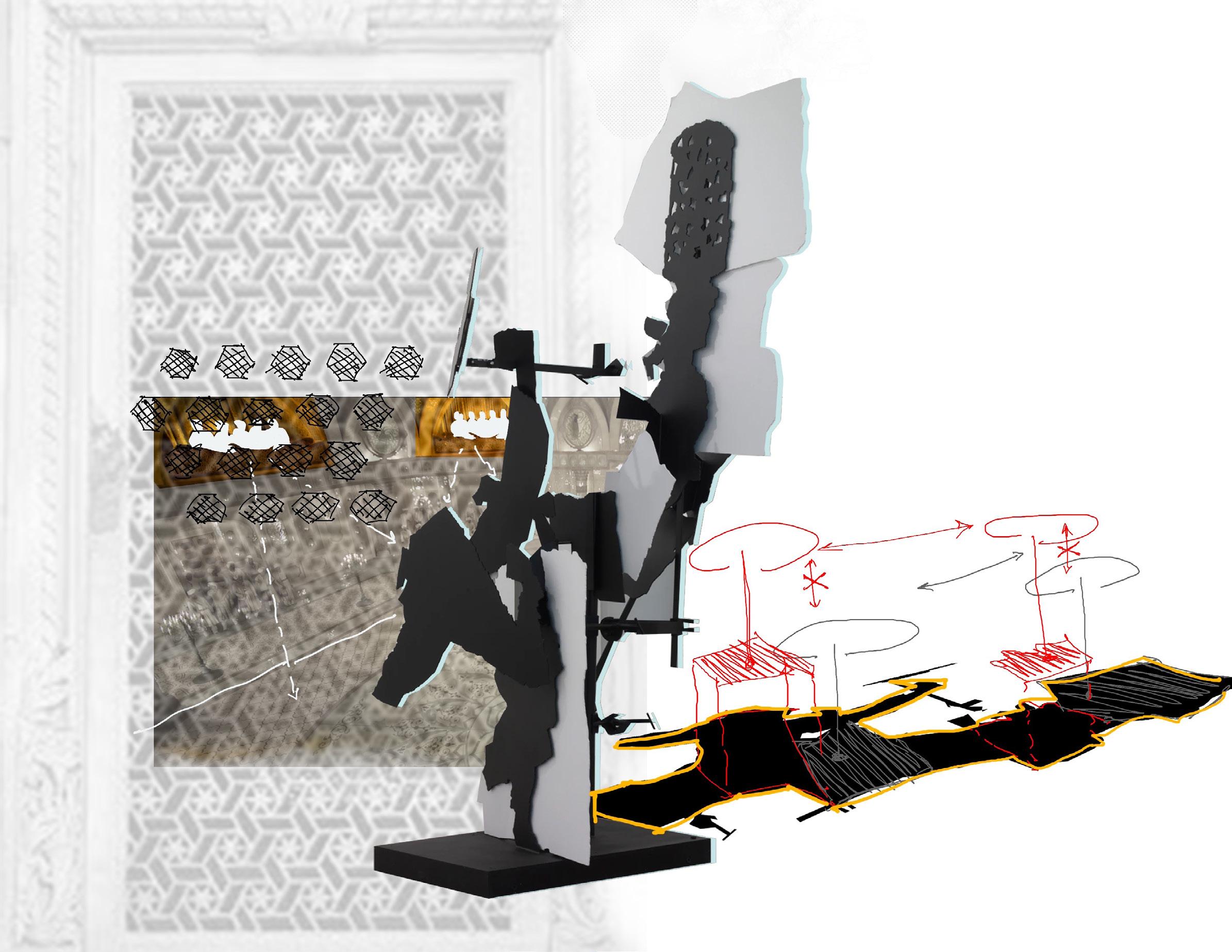
2/15 – Who is Ordinary?
Phonic Substance
noun: the sound inherent to an image; one that defines or creates it, that is neither contingent upon nor necessarily preceding it; not simply a sound played over, behind or in
What is it to refuse? To refuse authoritative forms of visuality that diminishes the subject, the black body. Photography becomes a strategic tool to employ refusal. Capturing aftermath of black death, torture, dismemberment, violence ignites the fire for refusal activism.
To develop the images as visuals and auditory makes up the Black experience. To see coupled with feeling it as you hear it. Images are not visual stand alone, they amalgamate many sensory experiences. The ambience, sound, feel, touch, space are fundamental to create the black experience.
Juxtaposing images from Campt and Thompson invites a comparison where the subjects though been through black traumas have been depicted through different auditory and visual mediums and with colorful and black-white nature. Where Campt encourages that though the photographs have no sound, you can listen to the larger stories, the message
“For us, “practicing refusal” names the urgency of rethinking the time, space, and fundamental vocabulary of what constitutes politics, activism, and theory, as well as what it means to refuse the terms given to us to name these struggles.” — Tina Campt
Refusal Activism
Phonic Substance
Autoportrait
Listening to Images
Devanshi Pandya
they are trying to convey and not through their facial expressions. Their posture, the way they fold their hands with dignity, the way they hold themselves with defiance, refusing to succumb into the indignity that the photographer intends and refusing to accept the place given to them in society.
On the other hand, Thompson’s subject who went through brutal violence back trauma Thompson’s medium though being a film has no sound but the emotions conveyed are palpable from her minimal, gentle movements. Her ‘soulful eyes, mournful look, silent words for prayer and sighs’ (Kampt, 80) are fairly discernable due to the black and white nature of the film that convey the gravity of violence imposed upon her. Refusal to be silenced but refusing to speak so as not to impose a narrative that is not authored by her gives her the power to refuse to accept black disposability. Her act of defiance, elegance and dignity was her refusal to silence, refusal to explain, refusal to accept black death.
2/15 – Who is Ordinary?
Tina Kampt, ListeningtoImages:CoverPage, 2017
Luke Willis Thompson, Autoportait,2018

2/15 – Who is Ordinary?
Devanshi Pandya
ADJACENCY
Noun. The fact of being very near, next to, or touching something.
- Cambridge Dictionary
“If we stop using the metaphors of mechanistic and semiology and start using the metaphor of ecology, then it should be possible to discover layer upon layer of meaningful environmental unities, even within the landscape of Tokyo”. — Kajima, Kuroda, Tsukamoto. “Made in Tokyo”
In the introduction of the book “Made in Tokyo”, the word adjacency was used throughout the text under the different topics discussed, expressing intentions and positionality towards architecture. The curated selection of 70 cases organized in a non-ending catalog and collection of buildings talks about adjacency as an act of measurement and representation and as a way of understanding an urban environment. The adjacency, complemented by the selection of rare cases, is an architectural manifesto in itself, challenging the concept of post-Modern or non-canonical architecture.
Another interesting concept presented in the book and directly related to adjacency, is ecology. They criticize the notion of viewing the city as a machinery of connections and suggest that we should see it and its buildings as an ecology. The fact of condensing what appeared to be isolated cases into a guidebook for the city of Tokyo is crucial in understanding urban ecology: a collection of buildings and structures interconnected
with each other through urban infrastructure of mobility as if they were parts of the body. There is also a specificity of the site and laws involved in Tokyo that allows these buildings to rise as an architectural solution to practical issues. As the words adjacency and ecology evoke, the laws, culture, infrastructure, and social conditions cannot be separated or isolated from the cases studied in the book. Overall, “Made in Tokyo” is a thought-provoking work that challenges the conventional view of architecture and urban design and offers a fresh perspective on conceptualizing the city as an ecosystem.
Francisca Alliende
Commonalities Ecology Adjacency Guidebook Liminalities
2/15 – Who is Ordinary
is Ordinary?
Cholet in La Paz, Bolivia.
Neo-Andean Architecture - Freddy Mamani

2/15 –
Who
Francisca Alliende
RETROACTIVE
extending in scope or effect to a prior time or to conditions that existed or originated in the past
“Koolhaas introduces Delirious New York (1978) with the term retroactive manifestoalso a paradox, for a manifesto is never meant to be preceded by evidence but rather precedes, and comples the production, evidence.”
— Enrique Walker
Rem Koolhaas interpreted architecture, especially in ‘Delirious New York’ as an observer. We can understand that the whole of the contemporary city is made up of a series of accidents, in accordance with inevitable changes to the overall urban plans. To eschew the finding, Koolhaas collected extensive evidence to compensate for the weakness of manifestos, full of speculation without evidence. But this consequentially gives proof that cities were designed according to such a manifesto. At the moment that manifestos come out, even if the original intention was not, it affects how the city evolves.
However, the result of affection differs depending on the cities. For example, in New York, especially manhattan, the ultimate application of the retroactive manifesto did not occur because some cities already abound and were well-organized do not allow the freedom of production. On the other hand, some cities that appear to be chaotic, such as Tokyo and Seoul, still have room for expansion and production. From this perspective, a manifesto can help the cities be reinterpreted so they can be developed synthetically.
An architectural manifesto is radical and somewhat surrealistic, so it might be seen as absurd and unrealistic. But it is still meaningful because it suggests a new possibility and breaks typologies of an existing architecture.
Moreover, one of the most crucial roles of manifestos is questioning the current context of cities and opening a new discussion to people. As a result, it has the power to expand the limit of architecture so that people can be critical and creative in terms of current perception.
Architectural projects that have been done and work in progress have similarities with emotion, and the architecture theories and manifesto are similar to rationality. Works are a chaotic adventure, but also an alarmingly consistent adventure. Hence, they affect cities retroactively throughout the whole timeline. It feels like cities are organic structures, as a breathing production, not as a solid and complete structures.
Manifesto Evidence
Retroactive Urban Questioning
2/15 – WHO IS ORDINARY
Gyeom Chung

2/15 – WHO IS ORDINARY
New-New York, 1969. Drawing from the exhibition “Drawing Ambience: Alvin Boyarsky and the Architectural Association, Superstudio
Gyeom Chung
TRAUMA
a deeply distressing or disturbing experience
- Oxford Languages
I was really intrigued by the project “Aghdra” of Arthur Jafa that Sexton mentions in his writing “Trouble consciousness”, the movie resembles a sea, but is more uncanny, it is more viscous like crude oil but it’s also filled by blackened clumps that resemble pieces of concrete, from afar the liquid resembles half-cooked lava. The wrongness of the liquid is depicted by its immaterial quality. In the horizon you cannot perceive if its dusk or dawn, creating an uneasy atmosphere. The landscape gives the idea that something is forming in the background but at the end nothing ever appears in the picture.
Through this piece Jafa depicts the psycho-social black trauma, the waves meaning a pass of violence just keep coming, obscuring the horizon, similar to the real world even though there’s no clear climax, the feeling it’s just endless. Sexton references this piece as circles, vicious and virtuous, circles that resemble forces that go beyond our lives, beyond existence, it resembles the stronger forces of the universe and the stronger
Javier Flores
forces of cosmic power.
I overpose Aghdra with a photograph of star tracking, capturing the apparent movement of stars across the sky as the Earth rotates, which resembles these elements of circular overpowering forces.
Circular Force
Trauma
“‘ I started to think, well, what would that look like if we tried to embody black experience in non-narrative terms, but in some other sort of way.”
2/15 – Who is Ordinary?
— Arthur Jafa

2/15 – Who
Arthur Jafa, AGHDRA, 2021 (video still). © Arthur Jafa. Courtesy the artist and Gladstone Gallery.
is Ordinary?
Javier Alberto Flores Leal

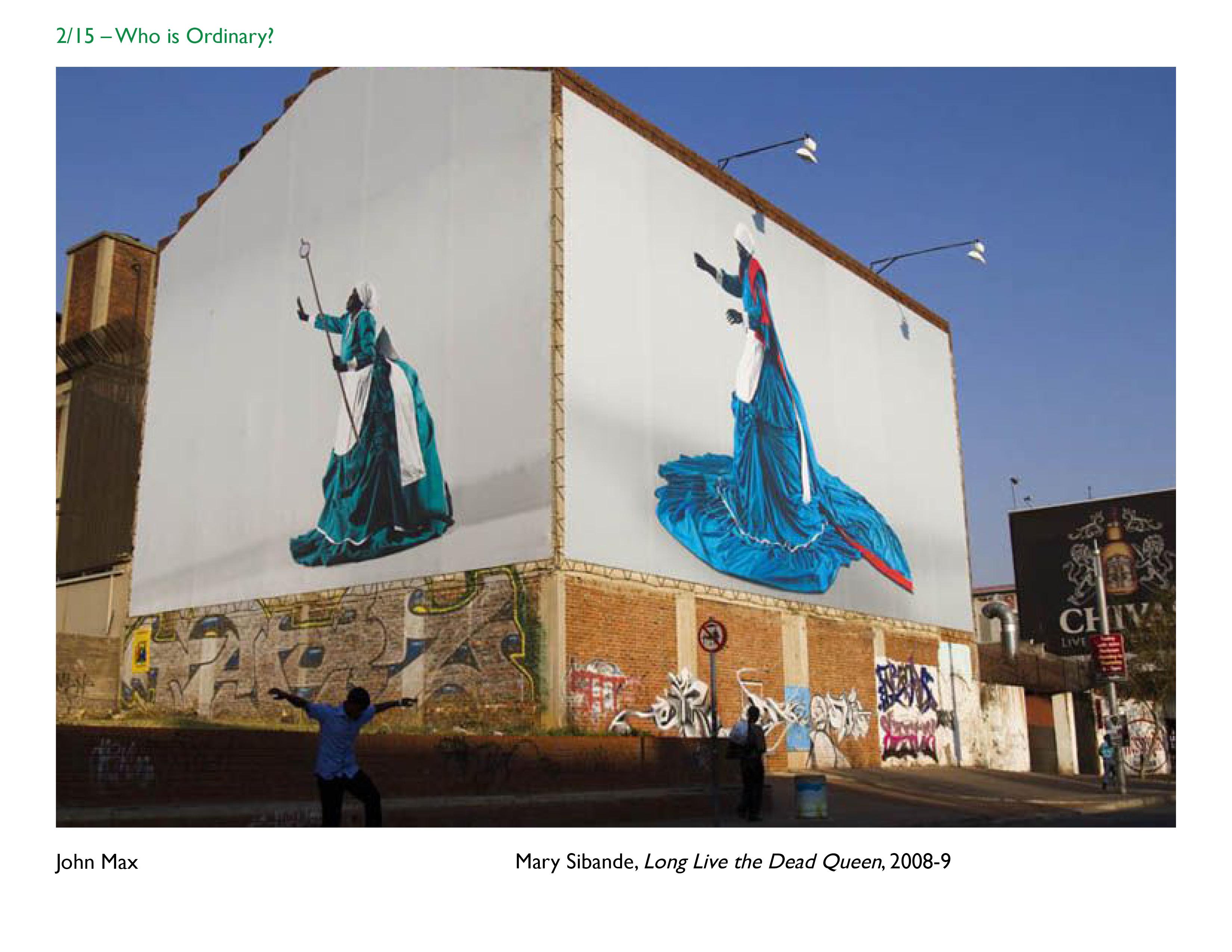
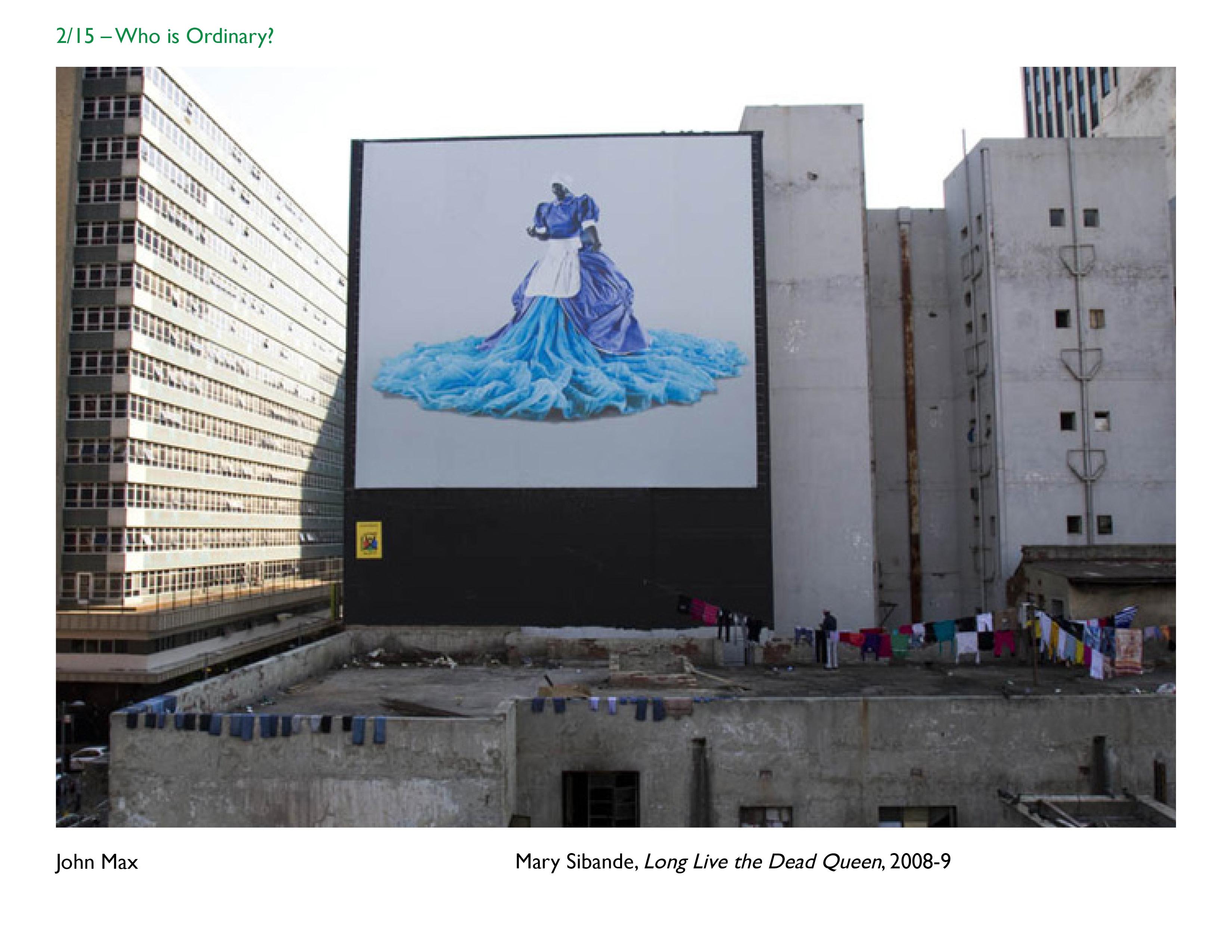

BLACK CINEMA
Black actors, black writers, black directors, black film, black structure, black theory
“What we build is less important than how we build it.” — Arthur
Worry Instability Illegibility Knowing Being
The article “Worry the image” introduces arthur jafa’s practice which spans film, writing and art and continuously aims to visualize and feel blackness as a way of knowing and being in the world.
Jafa’s practice asks what is a truly black cinema? beyond black actors writers and directors or black representation on film, jafa argues the structure and theory of the film must also be black. He investigates how can the work of black cinema can refuse the binaries and spatial continuities created by hollywood ; and concurrently asks how has black cinema always done this.
Jazz is a key source of inspiration of nonlinear black art with a fully articulated ecosystem independent of white western culture , aesthetics , and rules. a “worried note” in jazz is played or sung differently than the western standard. in his inquiry into instability, jafa translated the worried note of jazz into a cinematic technique that manipulates motion and frame rates.
Dean describes two of AJ’s moving image projects - a short film called “Love is the message the message is death” and a documentary called “dreams are colder than death”. In both films, black cinema looks like subversion of conventional practices.
In ‘Love is the message”, Jafa continues his practice of black visual intonation (or BVI) which creates nonmetronomic frame rates either with a camera or through digital editing. with this method he evokes a feeling of time collapsing. The visual selection explains how the past is not past. In “dreams” , the documentary, Jafa meditates on black life through interviews and footage of the mundanity of the subjects life. He plays with visibility and legibility of these subjects by making the video footage and audio out of sync with each other.
Khadija ann Tarver
2.15 – Who is Ordinary?
Jafa
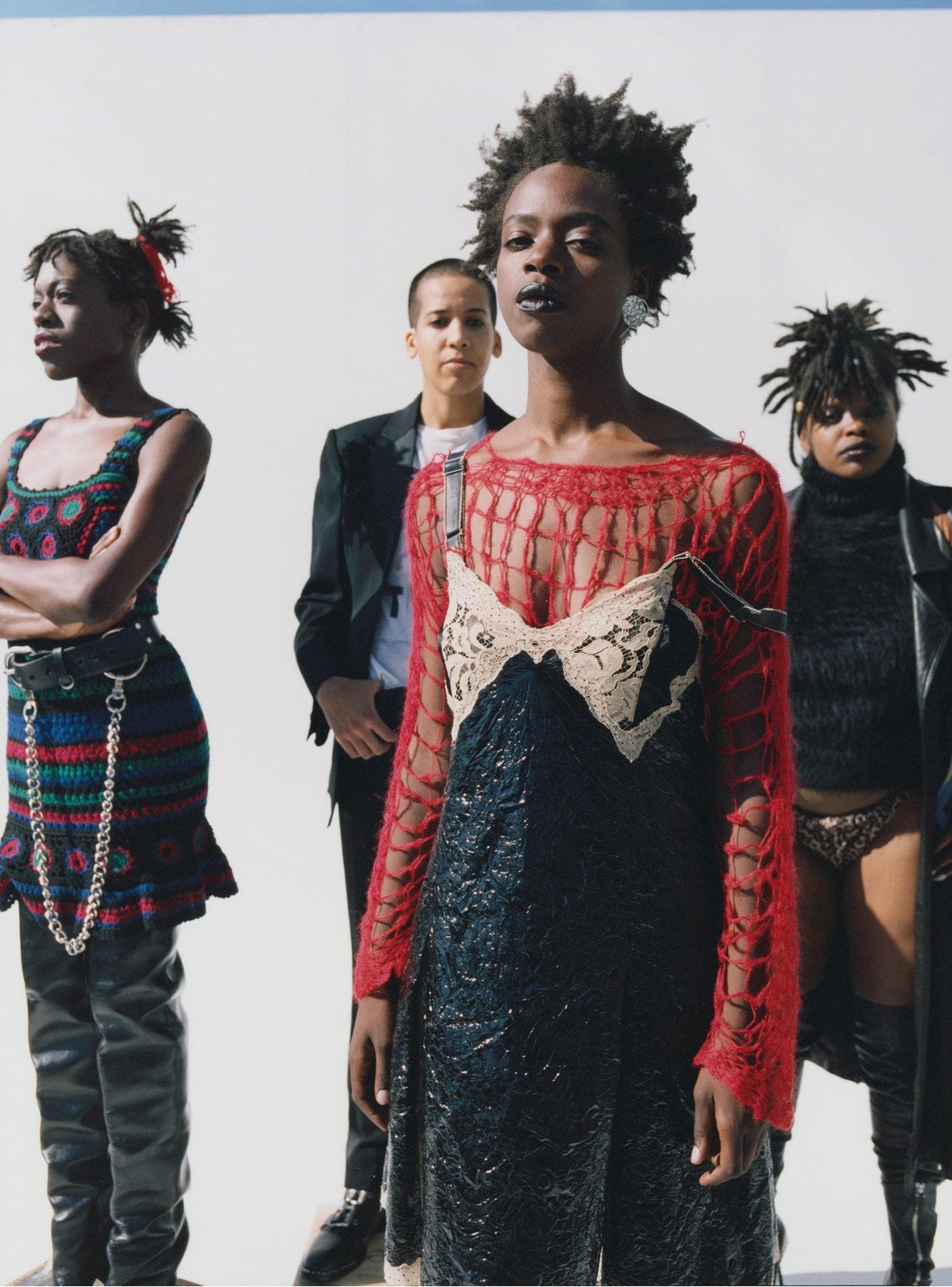
Fuck You Pay Us, “FUPU: the battle of LA”, DAZED Magazine, 2017 2.15 – Who is Ordinary?
Khadija ann Tarver
A MOMENT OF EXPROPRIATION
“the crucial role played in capital accumulation by unfree and dependent labor“ (Nancy Fraser, Expropriation and Exploitation in Racialized Capitalism: A Reply to Michael Dawson)
“Black women were, as a result, enmeshed in a dlscourse that united the ideal of domesticity for African Christian women with the exigencies of the: labour market, which reconfigured them as troubling yet necessary figures in the social and cultural landscape of Johannesburg.” (Urban Mythologies, Matsipa, 63)
In her text, Urban Mythologies Mpho Matsipa goes through an in-depth critique of the sculpture Fire Walker which is situated in central Johannesburg. From a spectacle of meaning, through Edward Said’s orientalism, and the relevance of it to current gender-race social issues, she then concludes with its importance as a testimony of a Black Madonna and of it as a voice to current struggles within the now neoliberal capital. Although convincing, this must be readdressed through the eyes of Nancy Fraser and her contribution to Marx’s capital exploitation equation.
When Fraser explains that “exploitation-centered conceptions of capitalism cannot explain its persistent entanglement with racial oppression” she means that the forces outside the wage labor market which are expropriated due to racial oppression, such as, for example, slave labor, have a crucial roll in the continuation of
exploitation of the “free” labor market. Thus, for example, the labor of African Christian women, that Matsipa surfaces, was necessary for the social and cultural landscape of Johannesburg; whether by being wage labor outside the labor market (aka cheap/free labor) and whether performing as a symbol for white exploitative “freedom” in the capitalist system. Fire Walker, for me, is a surrogate of that expropriation; it symbolizes and continues the ever-ending exploitation of freedom. It is another form of oppression and takes the shape of “finish your food, there are starving children in Africa”. It is thus, an anesthetic for the class in power, affirming their hegemony through orientalism. Because until the sculpture ceases to surround itself with neoliberal postmodern structures of surplus power, it will serve as a testimony to a disconnected other, to only spark a temporary emotion, of liberation.
Lealla Solomon
orientalism art effect culture survival
Expropriation capital
2/15 – Who is Ordinary?
2/15 – Who is Ordinary?
The Metropolitan Museum of Art with a juxtaposition of Henry Inman’s portraits of Native Americans in preparation for the production of hand-colored lithographs for Thomas L. McKenney’s “The History of the Indian Tribes of North America” (1836–44).
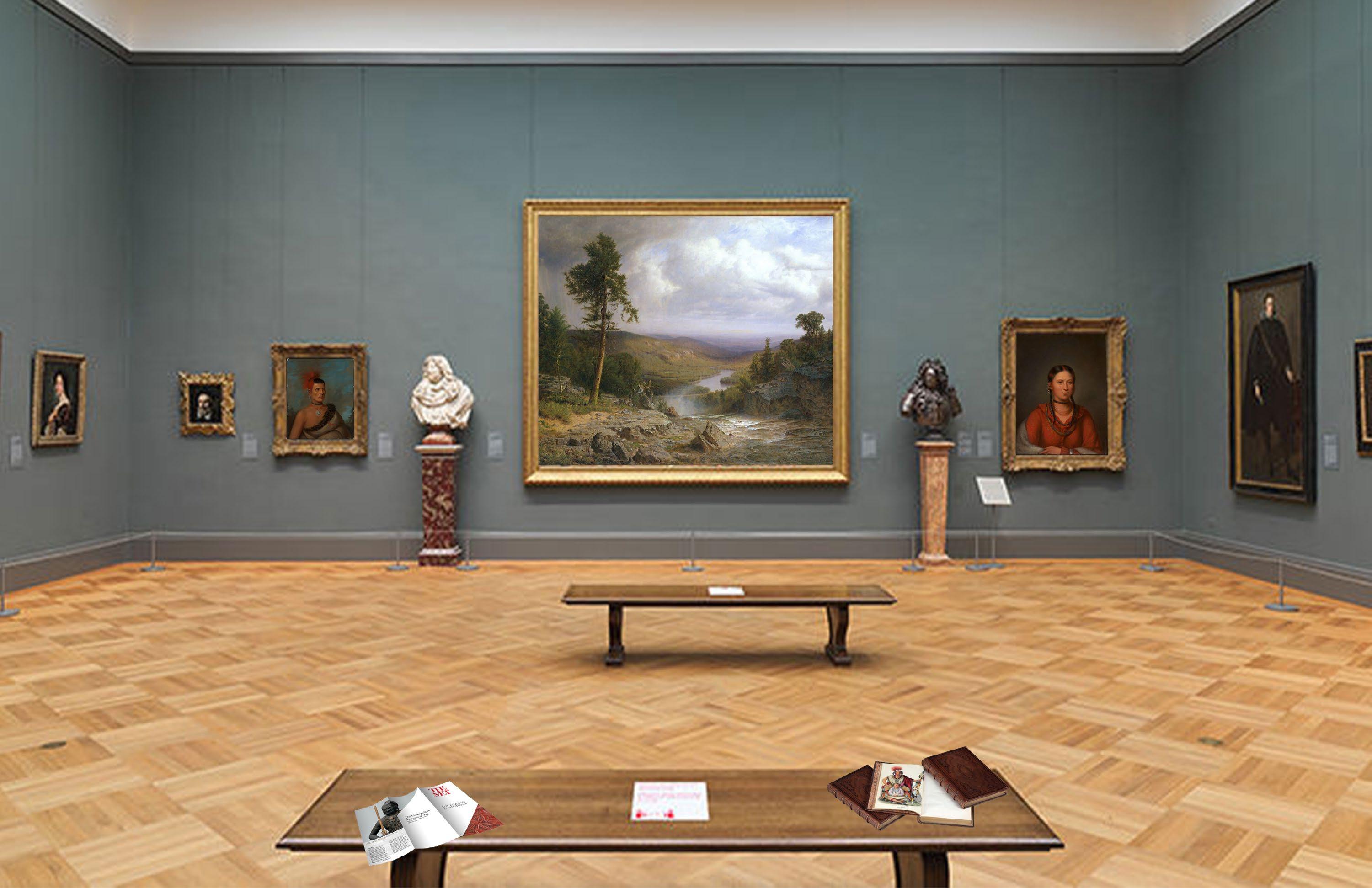 Lealla Solomon
Lealla Solomon
Representation
noun : the description or portrayal of someone or something in a particular way or as being of a certain nature
The first time I encountered Arthur Jafa’s work, I didn’t understand it. In fact, I hated it. The people around me seemed to have a personal relationship with the breadth and depth of his work and I did not. I was kind of jealous. It wasn’t until I saw Love is the message, the message is Death in Toronto last year that Jafa’s work, as Sexton puts it, “Knocked me on my ass,” physically and emotionally.
There was something about being outside of the US and watching this piece about the US in a dark room that gave it a different context. I must’ve stood there in my feelings and tears for 30 minutes with my partner’s son, Leo. Jafa’s work provokes anxiety, sadness, joy, contemplation, fear and as Sexton notes, chaos. It also provokes questions and contemplate the corresponding answers.
“Anybody who grew up around Black people or in Black communities know that for every Aretha Franklin there’s twenty mu’fuckas who people will say, ‘oh if she would’ve been in that church, she would’ve killed Aretha.’”
Arthur Jafa
“Jafa is not concerned with the house so much as its foundation: how the walls are built, not what adorns them,” as Dean notes. Jafa says in his interview with Helga Davis that he is better at describing the process than the work itself.
Jafa, although a visual artist, tends to use archival footage and historical pedagogies like a historian or experimental preservationist. His use of natural elements, astronomical images, and science fiction to the complexity of his work.
Robert Louis Brandon Edwards
02/15 – Who is Ordinary?
–
Intertextual Blackness
Cinema Representation
Architecture
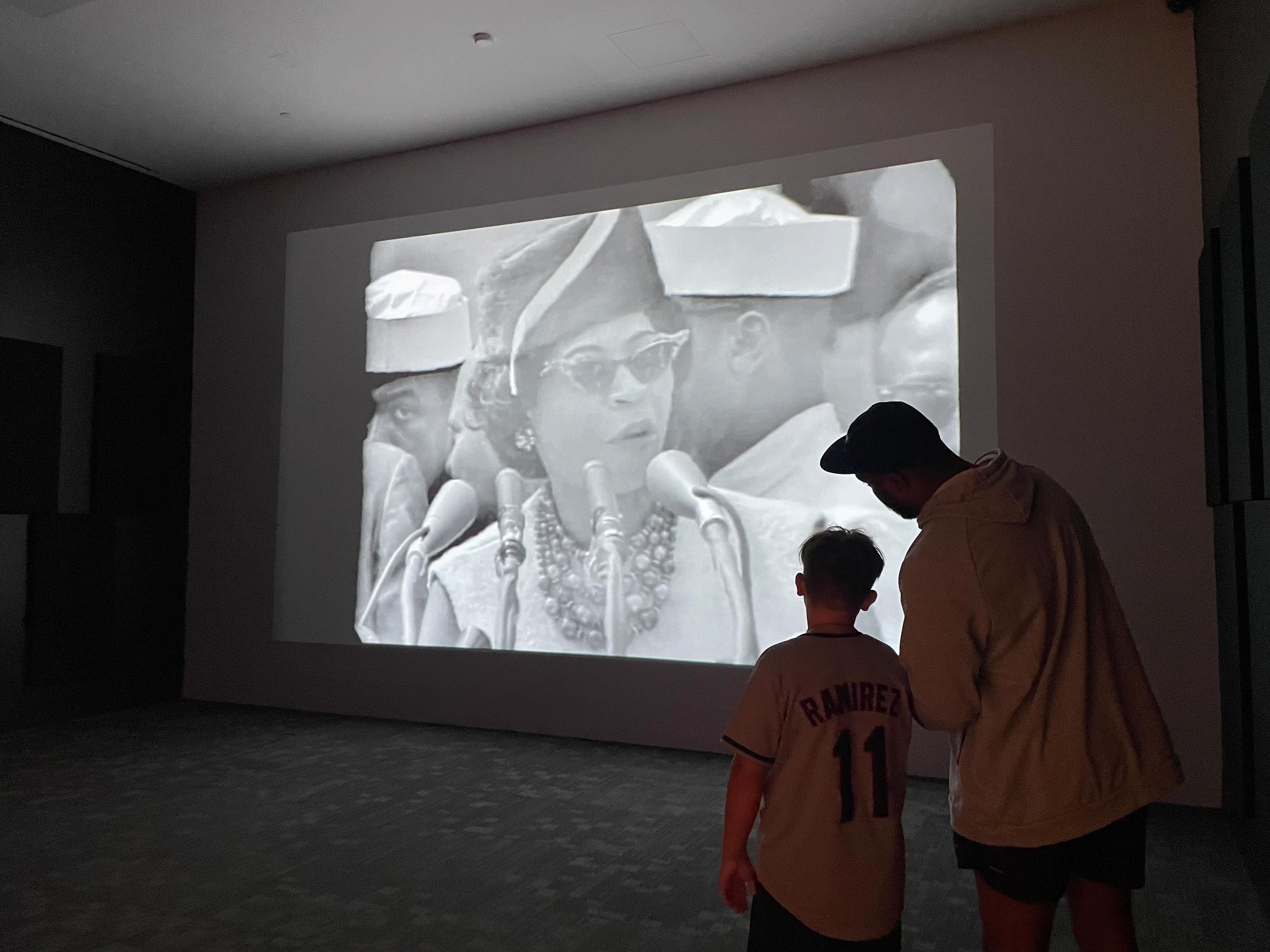
02/15 – Who is Ordinary?
Robert Louis Brandon Edwards Karen Nahra, Photo of Leo and Robert at Love is the message, the message is Death exhibit, Toronto, 2022
INTONATION
noun: the rise and fall of the voice in speaking
Arthur Jafa talks about Black Visual Intonation (BVI) as a medium to depict blackness in cinema, probably as 180 degree shift or ‘binary opposition’ to the existing mediums of representation of blackness in cinema. The modulations that separate the visual from regulations of a norm being fed in the society is highlighted here very specifically in the medium of black in cinema. In regimes of control by representation, certain tools of control can be over thrown by black visual intonation, posing questions to the audiences that they have never had the opportunity to experience in medium before.
Worry the ‘Frame’ (or note or image) in cinema might focus on the things as Jafa constantly talks of ‘things’ that matter him than the ‘art’ as a product. This philosophy of process as is, which is important to him and not the final product. It is where in the act of worrying the images, the ‘things’ as they are, are visible, that what has been politically, systemically constructed to be
Rutwik Karra
visible - an escape from the regimes of visibility. He further uses repeating frames, scenes, and non-linearity in scene changes to bend time, blackness is beyond time as measure to encounter a ‘past that is not past’.
Time Worry
Black Thing Ideas Intonation
“On many occasions, Jafa has claimed to be more interested in “things” than in “art.””
2/15 – Who is Ordinary?
— Aria Dean
Screening of Love is The Message, the Message is Death, superimposed with the starting lyrics of ‘Amazing Grace’.

2/15 – Who is Ordinary?
Rutwik Karra
(1) a visible disembodied spirit : GHOST of oppression
(2) something that haunts or perturbs the mind : PHANTASM of oppression
“Fire Walker becomes a ‘surrogate self’ to a city that has historically worked systeatically to exclude her. However, rather than try to control her movements in space, the fractured image re-inscribes her marginally, not merely as a representation but also as a physical site in which private interests ensure that her presence is not welcome there.”
perceptual distortion representation
selective inclusion
shadow image
As academics, we often engage in creating a spectacle of different forms of oppression. Perhaps at times we share similar experiences, or we care for certain issues and subjects. At times more so than not, we engage in doing so to receive recognition. Doing so is not specific to academia; this practice is replicated in art and beyond. What does it mean to create a spectacle of oppression? What does it do?
Matsipa found herself unsettled by the uncanny representation that is Fire Walker. This ghost that haunts the city of Johannesburg, a memory site, speaks to the past and present of spatial practices that recognizes or marginalize the persons this figure represents. How are we challenging systems of oppression if our works are created within the institutions that prepetuate violence?
“Thus the shadow-image of the marginalised female subject serves as a memory site that resists a complete erasure of the past and ensure that the woman herself cannot be wholly included in a vision of an orderly urban environment except as the subject of public art.”
--- Mpho Matsipa
shadow economy
Sarah Abdallah
spectre of oppression noun
2/15 – Who is Ordinary?
Zeina Hamady, Unknown [On poverty porn and reproductive injustice]

2/15 – Who is Ordinary?
Sarah Abdallah


Made in Tokyo is borne out of a very specific, placebased way of seeing and of observing mundane, ordinary, but strange buildings - to me, what is striking is the way the project articulates what it means to be “mixed-use.” In my visual response, I stitched together Atelier BowWow’s On/Off Table with the Allowable Uses Table from Japan’s Zoning Code as an opportunity to reflect on one level, zoning as a method of measurement, seeing, and governance and restriction in my planning discipline, and on a different level, Japan’s incredibly minimalistic zoning laws.
Mixed-use in its most simple definition is just the combination of different uses in a spatial unit be in a singular building, a block, or a whole neighborhood. Made in Tokyo investigates a partiular type of hybridity borne out of efficiency, necessity, guided not by rigid codes of what is or is not compatible, but simply by what is afforded by the urban environment.
The buildings we were attracted to were ones giving priority to stubborn honesty in response to their surroundings and programmatic requirements.
... it is in fact these buildings which most clearly reflect its quality of urban space, whereas the translation of issues of place through history and dedign seems like a fabrication.
- Kaijima, Kuroda, Tsukamoto
Japan’s zoning laws, composed of only 12 zoning categories, is a reflection, a tacit allowance of this behavior and grassroots people’s practice. Within the 12 categories, there’s scant actual restriction of which uses are allowed, rather than allowed versus not allowed, its allowed versus usually not allowed - a scale of tolerance. Made in Tokyo’s On/Off scale introduces new dimension to “mixed-use” in that it goes beyond compatibility of uses and thinks about “unity” also in terms of category and of structure.
Theresa Yang
2/15 - Who is Ordinary?



2/15 - Who is Ordinary?
Theresa Yang Collage of On/Off Table and Allowable Uses in Japanese Zoning Code



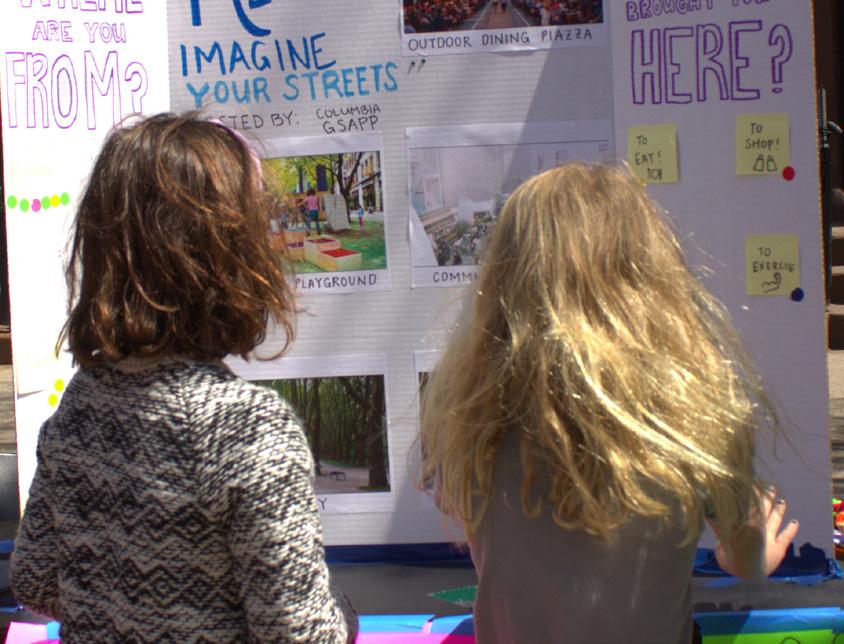
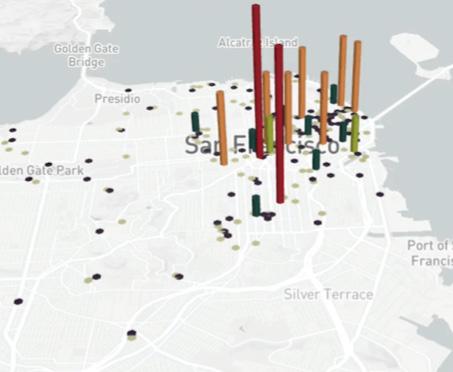

2/15 - Who is Ordinary?
Theresa Yang
Representing Found Behavior
Worry
a state of anxiety and uncertainty over actual or potential problems
“a black way of knowing the world, being in it, and moving through it has already been implemented on-screen, if you know how to look for it..” — Aria Dean, Worry the Image, 2017
Illegibility (Black) Cinema Representation Worry Image-ing
In the article Aria Dean discusses Jafa’s approach to creating films that center on the Black experience. Jafa’s work aims to resist the white gaze and instead presents Black people as the subjects of their own narratives. He does this by using a “Black visual intonation,” which emphasizes the physical qualities of Black bodies and their surroundings. This approach allows him to capture the essence of Blackness, which he describes as a “state of being” that is both beautiful and painful. Jafa’s work also challenges traditional Hollywood norms by rejecting linear narrative structures and embracing experimental techniques. Overall, Jafa’s approach to filmmaking offers a powerful alternative to mainstream cinema that centers the Black experience and celebrates the richness and complexity of Black culture.
In his film ‘Love is the Message, The Message is Death,’ Arthur Jafa employs a distinctive visual language that he terms “Black visual intonation”
to create a powerful meditation on the African American experience. Jafa’s use of Black visual intonation in the film is characterized by a focus on the physical qualities of Black bodies and their surroundings. He uses a combination of slow motion, close-ups, and framing to emphasize the emotional and sensory aspects of the images. By emphasizing these physical qualities, Jafa seeks to convey the depth and complexity of Black culture and experience, while also resisting the white gaze that has historically dominated mainstream visual media.
Vir Shah
2/15 – Who is Ordinary?
 Kehinde Wiley, “Shantavia Beale II”, 2012
Kehinde Wiley, “Shantavia Beale II”, 2012
2/15 – Who
Vir Shah
is Ordinary?
SPRAWL
verb. sit, lie, or fall with one’s arms and legs spread out in an ungainly or awkward way. across the pavement” So-called new city, the city without a history. To that end, he usedt h e term urban condition.
Venturi and Scott Brown coined the term duck to refer to buildings that distort functional requirements for expressive purposes -that is, buildings that become ornaments in themselves- and diagnosed an approach then prevalent among postwar architects trained under the tenets of the Modern movement (the conservative followers of the revolutionary pioneers, for Venturi andScott Brown). At the same time, they proposed the decoratedshed, a mostlygeneric building that would address function (and structure) in a straightforward way, not unlike a shed, and would “express” - or, rather, commu- nicate - b y virtue of applied decoration. By embracing decoration again, and, in turn, by entrusting decoration to an envelope, Venturi and Scott Brown suggested, archi- tects could once more afford to address function (and structure) in a straightforward way, freed from the need for formal expression. They would decorate building instead
Yan Huo
“Since an architectural problem is by definition complex, its resolution must by the same token embrace contradictions.”
—Venturi
of building decoration.
Interestingly, this genealogy not only implies looking at acertain cityb u t also at a certain moment.
“In fact, the precedent for the Harvard Project on the City wasthe full urbanization of the globe. Mutations, the book prompted by the exhibition of all four Harvard Project on the City installments, and instrumental in accelerating the debate on, and production of, books on cities, essentially equated city and world (i.e. city = world).”
The term urban condition implied no distinction between what was formerly the center and the margins, the city and the rest. The terms field and, above all, landscape, were mobilized, soon after, to also engulf, or erase all distinction with, the countryside...
The Generic City Regime Village Manifestos
2/15 – Who is Ordinary?
Duck And Deecora Ted Shed– Robert Venturi ,Denise Scott Brown,1972
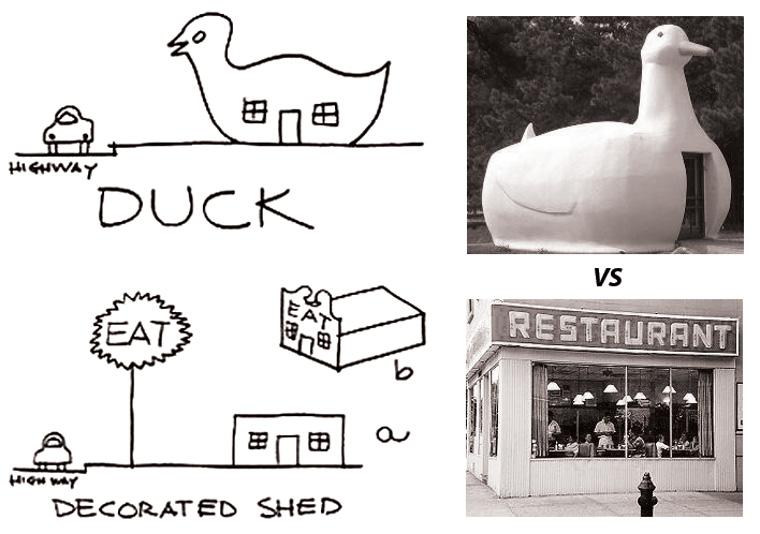
2/15 – Who is Ordinary?
Yan Huo
ORDER OF EXPERIENCE
noun: practical contact with and observation of facts or events
verb: encounter or undergo (an event or occurrence); feel (an emotion)
The reading takes us into the world of gazing through a ‘colonial spectators’ perception of investigation and acknowledges a realm in which the movement of perception between experience and representation- the logic of an arti ce itself becomes a historical experience, one that engages in this modern/decolonialised gaze.
Decolonial aesthesis would now acknowledge enunciation over reception, of owning over owing, of forming over dwelling- contesting the experience with a movement of ‘we-ing’ ‘re-membering’ and earthing.
The contemporary movements of abstraction are seeking to control this abstraction. The modern time of now, con nes itself to its super ciality of material and representation - and what is in excess to it’s representation - Time.
“While the question of epistemology us concerned with modern/ colonial control of knowledge and representation, the question of aesthetics brings to the fore the control of perception and representation ” — Rolanda
Vazquez
What is in time, the depth of time and to the forgetfulness of its duration across generations.
The image is an enclosure of this bodily violence, with no evidence on the gaze. Initially of the Indian Temple Architecture, that evolves through colonialism as a means od documentation - in some cases fetishism and exoticism. The gaze enters India into a contemporary time of modern media with ad campaigns that reverse that gaze through capitalism and an actor’s homage to his diversitality and expression.
Aashwita Yadav
Erasure
cation
Meaning
Gaze
Coloniality
Aethetics Subjecti
“Displaced” Modernity Sensing
Modern
3/22 – (Il)legible Form
Rare Indian Photographs, Smithsonian Museum, 1900s
2001 Nike Ad Campaign, Khajuraho Temple 2005, Ranveer Singh 2022

3/22 – (Il)legible Form
Aashwita Yadav
DIALOUGE:
Verb: Take part in a conversation or discussion to resolved a problem
The world is not a solid continent of facts
sprinkled by a few lakes of uncertainties, but a vast ocean of uncertainties speckled by a few island of calibrated and stabilized forms - Bruno Latour
I found the work of Howardena Pindell Video Drawings extremely relevant in our society since television has become the primary method of information sharing for many and the apparatus itself has been the most widely used in homes for years. From rich houses to poorer houses, the television as a physical apparatus can be found in any home regardless of size or quality. The attachment humans have created to the tv has reshaped how we see politics, culture and society. To think that television has no effect on how we behave, act or dress is simply naive and out of touch since the human body itself has become the product of television. I would argue that the television is not the surrogate body in the room but instead is the human body from which different ideas can be planted on and transported depending who the author is. We are more likely to buy and ingest different ideas that can grow over time depending on what capitalism portrays to be fair and good.
Howardena’s critiques on television points not only to a physical change in the human body but also at the information displayed and
how it can easily be changed. To understand the media in our society and how easily it can influence our bodies, we also need to understand how accessible and tactile both the apparatus and the message have become to our body. Authorship has become messy but the messages have become even more confusing, the opacity from which they are displaced has been rendered on purpose to turn the human body into a “weapon” of action. The roles of viewer and actor have become so entangled where one can not separate both portraying a sense of personal attachment to the messages displayed. The last year full of protests across the country captures this message well, where each side takes on a role and message both aiming at controlling the human body’s actions and decisions. To understand the media in our society today, we need to look at both the apparatus and the message displayed and, just like Howardena, we need to freeze the images to give us a chance at a dialogue between people and not to continue to control the human body.
Alejandro Marin
Viewer Actor Political Dialogue Opacity Transparency
Surrogacy
03/21 – INTERRUPTING THE BRODCAST





Times magazine person of the year 03/21 – INTERRUPTING THE BRODCAST
Alejandro Marin
FUGITIVE
adjective: runnaway or intending flight
“these Black mapping practices were necessarily clandestine, ephemeral, and transmitted through a network of knowledge and kinship, rather than on paper.”
– E Kelley
In “Follow the tree flowers: fugitive mapping in Beloved,” Kelley interrogates the concept of mapping at the intersection of geography, Black studies, and literary studies. In different ways, it is interesting to put Kelley in conversation with Du Bois’ mapping practices. Both use mapping as a means of exploring the experiences of Black people in the US, but they approach this in different ways.
Du Bois’ maps and infographics offer a statistical picture of the life of Black Americans at the turn of the century, drawing on empirical work to measures of property ownership, employment, health, and mobility. In contrast, Kelley explores the hidden geographic practices that make fugitivity possible for Black people, using Toni Morrison’s novel Beloved as a means of illuminating these practices. Despite these differences, both Du Bois and Kelley emphasize the importance of Black studies and Black creative production in the fields of
Ariana Bon
critical cartography and critical geography. Du Bois sought to offer a more scientific and empirical approach to mapping the experiences of Black people, while Kelley argues for the value of alternative modes of representation that can capture the depth of Black experiences beyond what a two-dimensional map can provide.
Together, these works demonstrate the varied ways in which mapping practices can be used to explore the experiences of racialized and marginalized communities and offer more nuanced and politically meaningful analyses of power and resistance.
Transient Counter Construct Control Fabricate
3/22 – (Il)legible Form

The Georgia ‘N’: A social study By W. E. Burghardt Du Bois.pamphlet. 1900 3/22 – (Il)legible Form
Ariana Bon
WHISPER
noun: 1. a soft or confidential tone of voice; a whispered word or phrase.
“Photographs are strange entities: they are at once frontal, flat, declarative objects, and yet elliptical and indeterminate events.We see them always in the present and yet they speak now and from an irretrievable past. They stay still, and yet their stasis speaks (perhaps whisperingly) to the distances they have traveled, invoking imaginings of the possible transformations of everything they have fixed unchangingly within the strictures of their frames.”
— Stanley Wolukau-Wanambwa, 2022
Wolukau-Wanambwa’s text reflects on the role of photography in an optics of supremacy, addressing shadows, voids, abysses, whispers. The role of photography can also be to highlight the fragility of the social order, accompanied by the traces of the interwoven history at the time of its creation. According to researcher Rodrigo Costa, family albums function as a “white archive”, understanding in its fictional and material qualities this object that highlights the marks of colonization in Brazilian family archives. This file was privilegedly guaranteed to white slaveholding families. A kind of intimate archive from which those marked by the experience of race, poverty and disobedience to norms are excluded. Aline Motta, in her project entitled “Pontes sobre Abismos” (Bridges over Abysses), traces a journey in search of her roots and the vestiges of her ancestors. She traveled to rural areas in Rio de Janeiro/Brazil, Portugal and Sierra Leone, researching in archives while creating a counter-narrative of what is usually told about how Brazilian families were formed. Photography
appears in her work as a whisper, representing not only a medium but an instrument of belonging and identity in a society that is still trying to reckon with its violent History and the romanticized notions of its praised upon miscegenation.
Void Beginnings Whisper Shadow Opaque
3/22 – Illegible Form
Clarisse Figueiredo
 Whisper Archive, Collage with photos by Aline Motta
Whisper Archive, Collage with photos by Aline Motta
3/22 – Illegible Form
Clarisse Figueiredo
DOUBLE BIND
a situation in which a person is confronted with two irreconcilable demands or a choice between two undesirable courses of action.
“Imposing a communication method based on transparency and unrestricted information flow onto communities whose traditional culture is defined by practices of secrecy can only be regarded as a colonial act.”
— Nina Valerie Kolowratnik
secrecy disclosure double bind propriety
Through and beyond questions of admissibility, evidentiary production, and precedent (history)
Nina Valerie Kolowratnik’s chapter illustrates the need for deeper, foundational revisions to the frameworks that exist to negotiate between Indigenous ways of knowing (Native truths) and what Western legal forums accept. If obscurity, the right to secrecy, the need to not document to limit internal and external knowledge transmission cannot be woven into US law on behalf of groups making counter state and corporate claims, what kind of system do we need to imagine and build to challenge it?
And while Kolowratnik’s work presents an alternative system for drawing, documenting, and disseminating evidence, it also invites the broader questioning of the systems within which that alternative evidence will be presented.
What is the role of alternative and counter-state and corporate modes of evidentiary production?
It is perhaps a strategic intervention into existing systems, working within or slightly against their
grain, to better reveal how they function, where their stress points are, and also assist in the advancement of particular legal efforts in progress. In this case, Kolowratnik’s drawings may support existing Indigenous claims and create. They also expose contradictions at the core of Western, liberal systems of knowledge production and law, where transparency is lauded and demanded for some and obscurity is already protected for certain state and corporate actors. What kinds of information already flows into the way courts allow or make space for certain kinds of arguments to maintain and remain in the unknown? If the process of producing evidence is also a concession, in addition to a process with the potential to undermine a culture of a group bringing a claim forward, what all do you really need to know, to prove, to correct injustice?
Dan Miller
The required revisions and rethinking required to alter or remake legal systems to allow for alternative ways of knowing within legal process would undo the states that are predicated on them. As they are founded on Indigenous dispossession, to do so threatens the existence of the state.
claim
3/22 – Illegible Form
Collage of Images from a Report on The Natural And Cultural Resources of the Valles Caldera, NM Geological Society
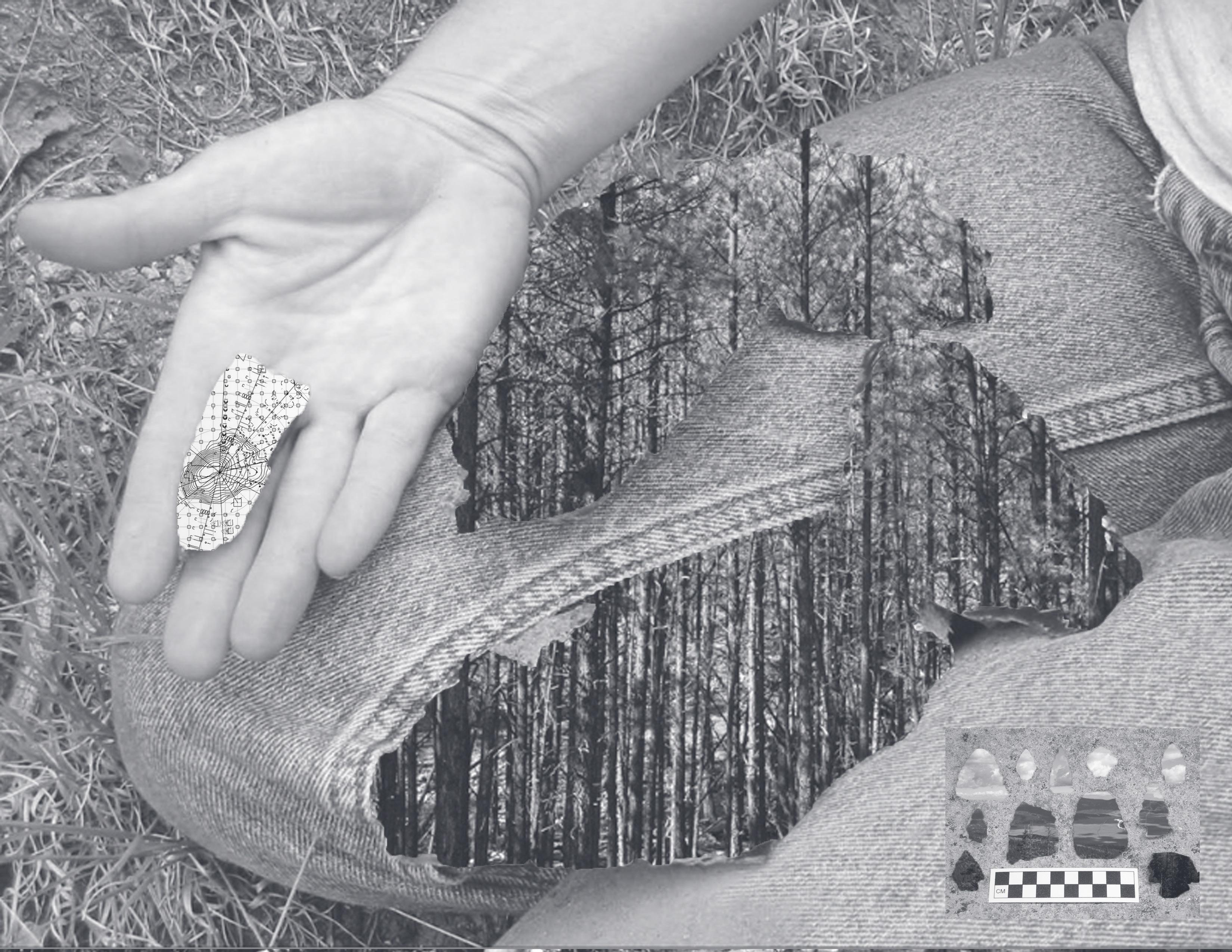
3/22 - Illegible Form
Dan Miller
THE COLONIAL DIFFERENCE
"the (dis)junction between the movement of modernity and the movement of coloniality. The convergence between the pleasures and affirmations of modernity and the sufffering and enclosure of coloniality" (17).
I have rarely written out as many quotes and taken as many notes from a reading like I had with this. In many ways, the piece lays out a foundational basis of understanding the conditions under which all of us have grown to experience the aesthetics of western socio-culturalism. I was particularly taken by idea put forth from Rolando Vazquez that the modern aesthetic experience within the colonial order positions the person as experiencing the now "as futurity" (15).
How exactly does colonialism exclude one from the site of experience in a temporal sense?
As colonialism seeks to enclose experience, modern aesthetics subjects one to the gaze of others as their own. The colonial subject is one that is unable to locate themselves in their own experiences as their present moment is always concerned with the security of the future.
It seems then that aesthetics rests on the precarity of those subjectified within the modern gaze and those subjugated outside of the right to that gaze. Per Vazques, the "double negation" of colonialism.
After reading this and attending yesterday's "Feminist Architectural Histories of Migration" talk, I have been thinking about the contentious capacities of the archive to altogether create histories, negate voices, and emplace lost narratives. The archive is how we experience and translate history, and it is also always designed. We rely on curations of ideas to tell our histories, it seems to be a paradoxical way to preserve ourselves since it is also the place where we witness the all-encompassing nature of colonialism.
David Zhang
Enframing
Aesthesis Reception Owing Dwelling 3/22 – The (Il)legible Form
Contemporaneity
The Colonial Difference
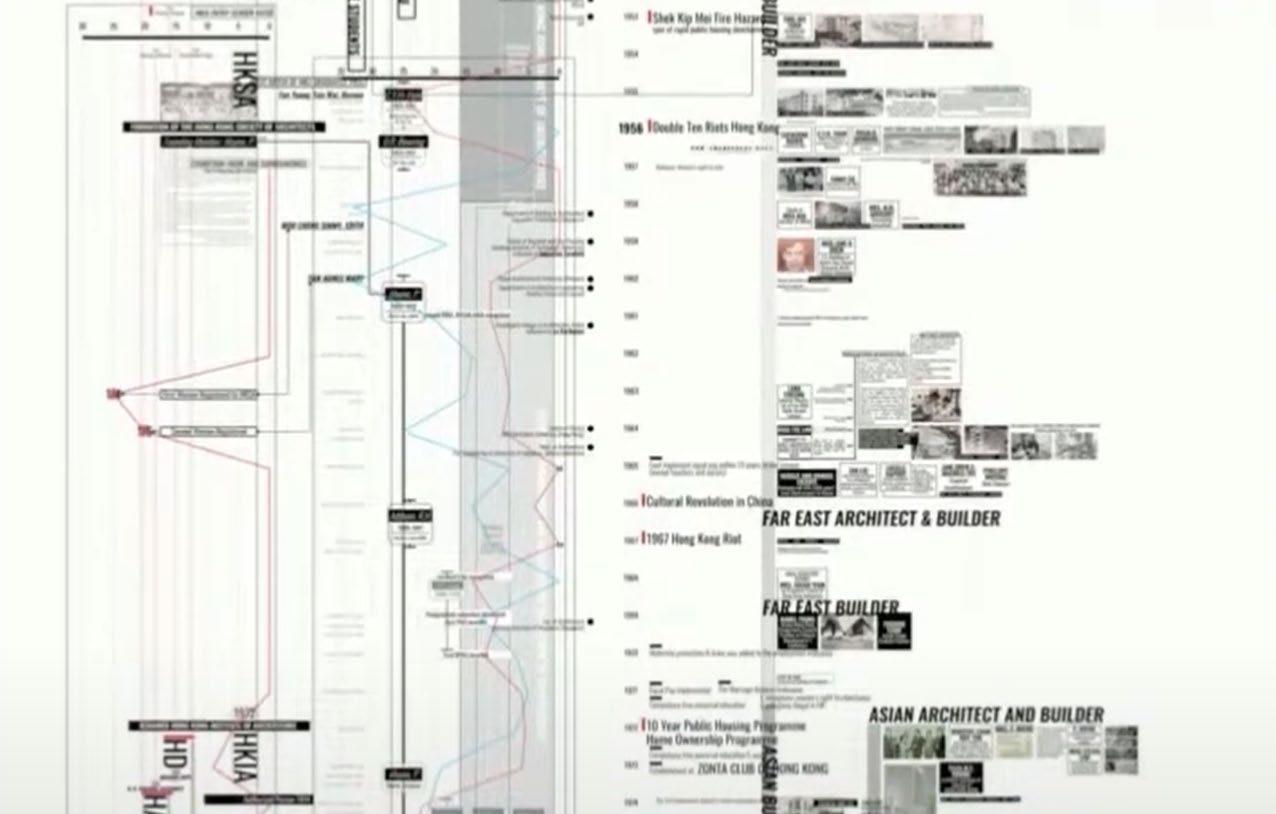
3/22 – The (Il)legible Form
Eunice Seng, Working Women and Architectural Work: Hong Kong 1945-1985, 2021.
RIVAL GEOGRAPHIES
Geographies that get defined by the belonging and the longing for liberation. Geographies are the ones that bind, rival geographies are the ones that liberate. Maps are imagined as tools to demarcate power and regions. It provides a point of view held by those in power, that too a singular objective notion, reducing land to hierarchies of value. Whereas, the same map or region could be perceived as something completely different from the lens of the people who originally belonged to that land. Like Kelley says, maps could be used as a weapon “by the state to render land and its inhabitants into resources to exploit, or its use as a tool for colonization” (p181).
The article begins by discussing the extractive nature of maps, and the impressions it imparts in the realms of power, oppression, and objectivity. As a continuation to that Kelley explains the presence of counter-cartography techniques that were used as a means of expressing freedom and liberation from those in power. “For centuries, black and Native communities in the Americas engages in mapping practices that preceded, exceeded, and evaded the mapping conventions
Devanshi Gajjar
In the muck of the “unreliable earth”, where the spatial order of the plantation dissolveswhere guns are flooded, enclosures leak, and cage doors are uprooted - “white masculine knowledge and the logic of visualization” cannot hold. - Elleza Kelley
of white settlers and enslavers” (p183). The most impactful story was of Paul D’s escape from the plantations. It describes the spatial character of the prison camps, and terming the escape plan as a collective of counter-mapping techniques, creating “rival geographies”. The instances of rain assist in the creation of these geographies, by breaking these fixed boundaries of spaces. As the mud moves from these trenches, slowly shatters the “spatial order of racialized hierarchy and enclosure” (p.188). Nature itself does not follow these boundaries, then how do these maps draw them as such solid lines?
A reflection on these counter mapping techniques brings forth a thought process regarding counter-mapping as an imaging technique, does that itself not again put land into power structures, that are not colonial of course, but are they also not hierarchical systems?
Liberation
Mapping Counter-Mapping Rival Geographies Remapping
3/22 – (Il)legible Form
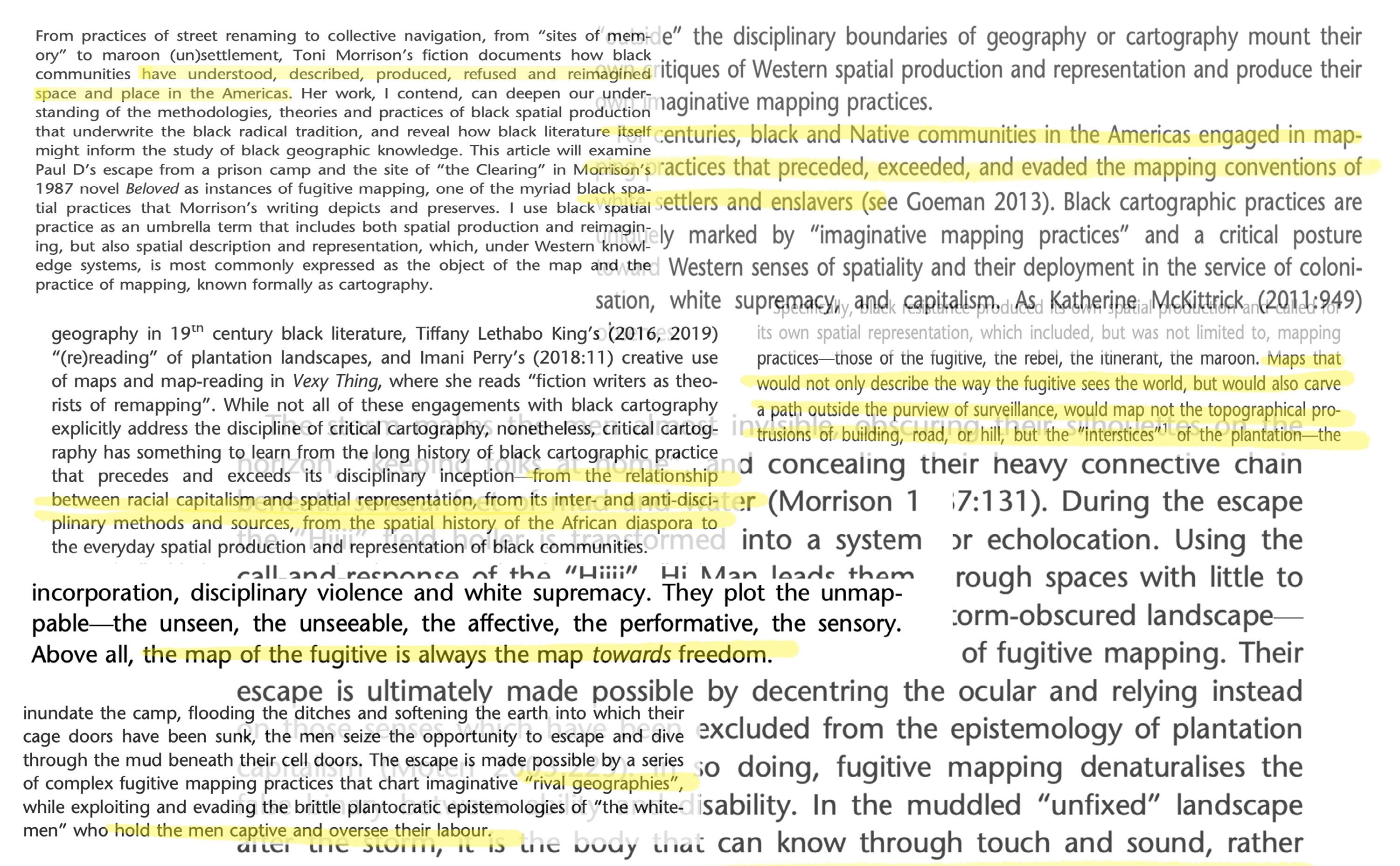
3/22 – (Il)legible Form
Devanshi Gajjar Texts from “Follow the Tree Flowers”: Fugitive Mapping in the Beloved, Elleza Kelley
Mass Media
noun: Mass media refers to a diverse array of media that reach a large audience via mass communication.
“You will not be able to plug in, turn on and cop out . . . The revolution will not go better with Coke. The revolution will not fight the germs that may cause bad breath. The revolution will put you in the driver’s seat.”
— Gil Scott-Heron
Does the mass media make you a slave to it? Does it bind you strongly to it that you are bound to its agenda? This debate has been flaring up since the dawn of technological innovations. Artists have come forth berating it, supporting it and bending it to change the conversation of its impact on civilization.
We are being warned that we are the consumers that are consumed by the product. We are fed agendas and propagandas by the media companies controlled by the powerful. Our complacency and passivity helps maintain the status quo imposed on us by them.
The screen begins to take over the empty room where the audience giving relevance to the screen is missing but they can still be absent as their passive engagement doesn’t need them to be present in the conversation but just consume, here we become the product of television.
Juxtaposing Pindell’s drawing next to the Television Audience drawing starts the conversation about change in the engagement with technology where the audience interacts with the screen in form of annotation and starts deciphering the content through arrows, text, symbols. This helps make our own interpretations and compels us to be active agents with the mass media we communicate with.
By being active agents, we start experimenting where chance, coincidence, intuition, freedom, choice starts shaping every communication in response to being conformed by the definition of mass media.
Devanshi Pandya
Intuitive Passivity Decipher Technology Engagement
3/22 – (Il)legible Form
Howardena Pindell, VideoDrawings:Track , 1976
Adobe stock Image, TelevisionAudience,Rodrigo

3/22 – (Il)legible Form
Devanshi Pandya
FUGITIVITY
Noun. The state of being fugitive. (Fugitive) Adjective. Lasting for only a short time.
- Cambridge Dictionary
“They issue for delay, they are made of an incidence of time given spatial form, and yet they are always fractionally out of time —incapable of absolute simultaneity, and yet dogged in their persistent, syncopated accompaniment of the present tense.”. — Wolukau-Wanambwa, Stanley. “(W)hole”.
Shadows Givenness Fugitivity
Resistance Memory
The concept of fugitivity is fascinating and thought-provoking, especially in the context of photography. The text states that fugitivity is embedded in ery essence of photography as a medium. The medium of photography, which is generally perceived as an objective representation of reality, actually plays with the distortion of time and fragmentation of the timeline, making photography unique.
(W)hole, the title of the text also resonates with this idea. It can mean paradoxically the opposite: Whole as everything or hole as void. Photography, as it is theorized in the text, can be as contradictory. It captures an apparently “objective” image of a situation but is never objective in the present because it stands in the past. The second is taken, the image is already in the past. Here comes the idea of fugitivity. In this sense, photography relies heavily on memory, which is almost a nostalgic way of measuring and traveling. The relationship with shadows is also important, as there is a vola-
tility in the way it moves and its intensity. The picture tells a story, is a memory of the place, conditions, actors, weather, and the situation, but also the camera, the light, the shadows, the photographer, and the post-production as well. It tells a story, it travels, even if it is digitally. Everything in it, or what is captured in the click, is irrepeatable, is in the past, and is fugitive from the very beginning. The image shown is my personal experimentation with photography and time. In the context of a photography course in Columbia, the task was to capture the escense of an interior space. It was mainly un unconscious way of trying to capture time and movement in it as something that characterized this place. What I never thought was that the image shows fugitivity.
Francisca Alliende
3/22 – (Il)legible Form
(Un)intended personal experimentation with time in photography. Burguer Joint - 51st St, Manhattan.
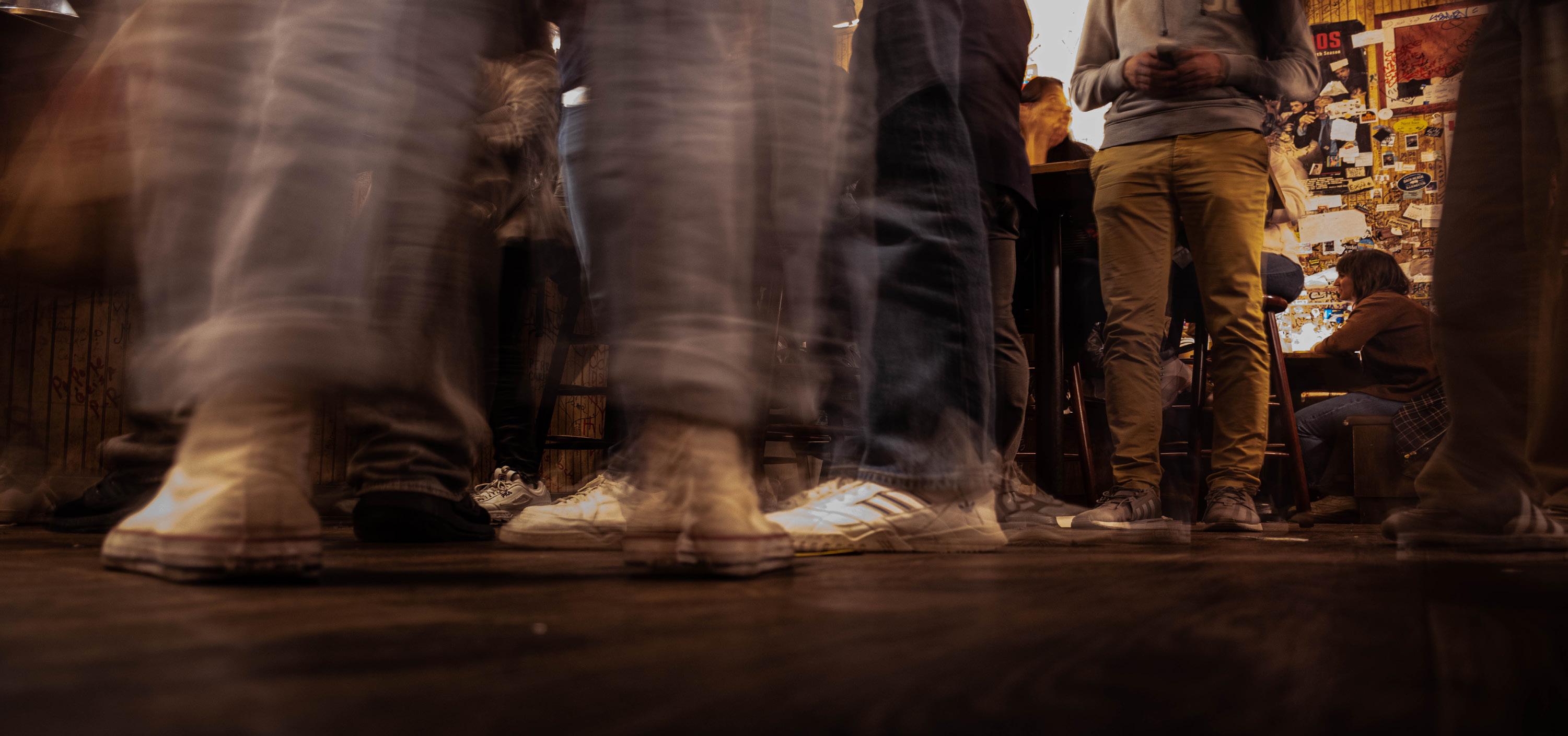
3/22 – (Il)legible Form
Francisca Alliende
INTERTWINE
to twist or be twisted together, or to be connected so as to be difficult to separate
“ ... , they open up a new relationship to culture, no longer regarded as a heavy burden to either discard of painfully carry over our shoulders, but as a repository of things which have their own energy but which depend on us for continuous reactivation. ” — Jesús
Vassallo
Photography was introduced as a tool for preserving reality, but it soon developed as a new interpretation and production of reality. Photographs differed depending on diverse parameters, such as photographers, usage purposes, and cameras. This means that photography is not a material for replacing reality but a single method to represent a particular freezing moment that photographers want to create.
For example, three photographers are in the reading, Bas Princen, Luigi Ghirri, and Lewis Baltz. Princen and Ghirri blurred the boundaries between objects they wanted to capture, mostly architecture, with a landscape in their own way. On the other hand, Baltz emphasized the contrast between objects and landscapes and used photography as a tool for radical abstraction and decontextualization. As we can see from the difference between their works, photography can be diverse, whatever we intend.
Introducing new technology is a singularity in multiple disciplines and creates a domino effect. Photography developed to collage, stop motion, and video. These two-dimensional productions contributed to developing a shared software platform. Moreover, three-dimensional modeling tools that architects are using are contributing to a new era as well, such as computer graphics, movies, and meta-verse these days. These ma-
Gyeom Chung
terials are not working independently but intertwining and creating synthesis with each other materials.
Apart from other artists, since architects are people who design the real world where people live and experience in person, there is a tendency that they prefer materials that are close to the actual condition, not deceiving. The materials mentioned above have a threshold they could not reach in reality. However, even though the pros and cons are clear, we must focus on the fact that the more materials developed, the more options we can choose. One single method does not have to carry all burden of the expectation. As far as we understand this fact, we can utilize it wisely.
Numerous reinterpretation tools have been generated from photography, creating a new future and intertwining each other. Therefore, we should perceive these synthetically and utilize them from various angles.
Photography Reality Intertwine Material Disciplinary
3/22 – (IL)LEGIBLE FORM

3/22 – (IL)LEGIBLE FORM
(Up) Luigi Ghirri (Down) Lewis Baltz
Gyeom Chung
SHADOW
partial darkness or obscurity within a part of space from which rays from a source of light are cut off by an interposed opaque body
- merriam-webster
As Wolukau-Wanambwa depicts the concepts of shadow and photography, it mention the tale of the Maid of Corinth, where as she is devastated to bear the departure of her lover to far way lands, she elects to sketch the outline of the young man face cast in the shadow against the wall, by doing that, she creates an image that will never be able to return to its point of origin. Through these tales, the author is able to coincide the concept of a shadow as “a place that is not a place”. Shadows are marks of an ephemeral presence, they are never able to claim the real world; they are just merely hauntings of a “past present”.
There’s a great connection between photography and shadows, both of them are able to be present but they are at the end ephemeral in a way that they are not able to be grasped in a time after they were conceived. Therefore, when it comes to a photograph of a shadow, it retells the history of the Maid of Corinth, the shadow becomes an unreturnable image, it becomes a
Javier Flores
“‘ Shadow and photographs share a common fugitivity. Every effort to physically grasp and possess what they show necessitates their distortion or destruction, because they can never be fully claimed.”
— Stanley Wolukau-Wanambwa
void of a present that will always be conceived in the past. Is interesting to see shadows as a method of revelation, in a society that is always forcing everything to be shown and exhibited, a shadow can represent an ungraspable void that is able to remain free and unclaimable.
Photograph Shadow Void Unclaimable
3/22 – (Il)legible Form
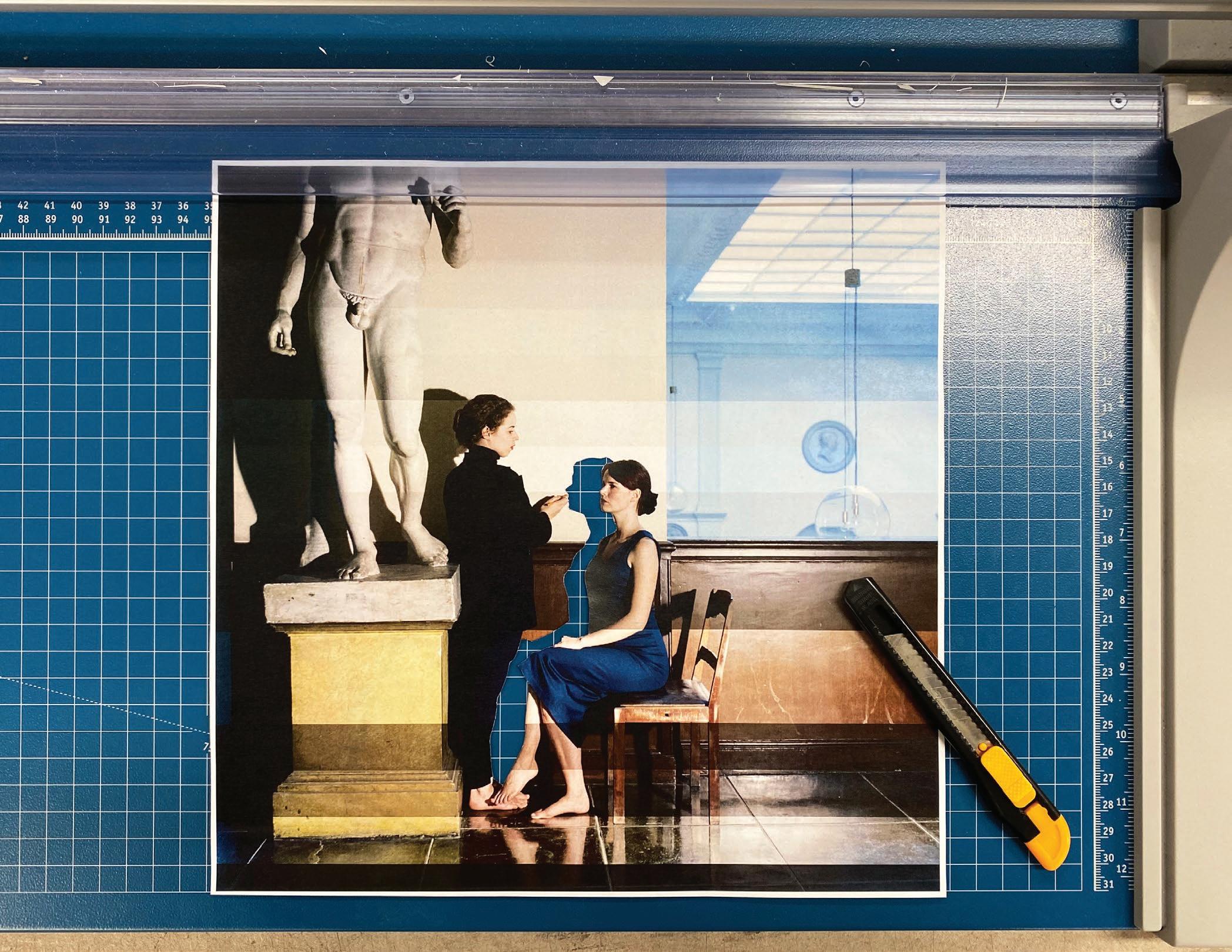
3/22 – (Il)legible Form
Karen Knorr, The Pencil of Nature, 1994.
Javier Alberto Flores Leal
“DEMOCRATIZATION of forgery shatters the indexical link of photography with reality.” noun: the action of making something accessible to everyone.
“Realism is not a default but rather a powerful strategy that can be put to work to very different ends.” — Vassallo
Collage
Dirty realism
Hunter-gatherer realism
Nostalgia
Contextualism
The introduction to Vassallo’s article explores the transformation of photographic representation, medium, and format from physical to digital and how it has been democratizing but incurred a loss of reverence or objectivity.
He explores the intersection of digital technology and architectural design, specifically focusing on the technique of collage and the great influence and creative exchange that architecture and photography have had. Digital photography has enabled architects to create collages that seamlessly integrate a wide range of digital and physical elements through the profound development in rendering capabilities.
After highlighting the pitfalls of absolute control over image making and its deceptive power, he goes on to introduce the concept of “dirty realism” which emphasizes the use of raw, unfinished materials and emphasizes the imperfections and irregularities of the built environment through collage. These digital collages can be used to
John Max
achieve a similar effect in architectural representation or perception, allowing drafters to create images that are both highly detailed and intentionally rough.
Vassallo provides numerous examples of digital collages in contemporary architecture, highlighting the ways in which architects have used the technique to create building images and sometimes manifested structures that are both visually striking and conceptually complex. He discusses the challenges associated with using digital collage as a design tool, including the need for a high degree of technical skill and the potential for over-reliance on technology at the expense of physical prototyping.
3/22 – (Il)legible Form
Ad: Citi Habitats Marketing Group, background: Dezeen


3/22 – (Il)legible Form
John Max
POLYTEMORAL
adjective: a place, situation, or world where time has no linearity, no start or finish; it is centripetal, recursive, irregular, haunted - and space is the matrix through which its difference and movement occurs
“Follow the Tree Flowers”: Fugitive Mapping in Beloved is an essay by Elleza Kelley that traces, in whirled script, Black critical cartographic practices, methodologies, and instances in Toni Morrison’s Beloved. Kelley gazes upon the obscured, hidden, unauthorized, or “ungeographic” map of the text to reveal depths of creative contribution to the studies of critical cartographies and geographies. Morrison’s writing and world building is viewed through the lens of black spatial practice to understand spatial production(s), reimaging, spatial description, and representation in her worlds.
If a map is “an instrument of power” (p.181) “inherently bound up with domination” (p.182) and “is a narrative device that manifests, enforces, and presernves Enlightenment epistemology, and its attendant colonial and patriatrical practices, thus charting racial inequalities and concealing alternative worldviews” (p182) - is this all a map can be?
“Here again it is important to recall that, unlike Hegel’s self-consciousnesses facing each other in the life-and-death struggle, after which one becomes the slave, with actual slavery the two enter into unequal positions. What you have then is not a one-off event in which subjugation is achieved once and for all, but the repetition of the scene of violence, precisely because the owner could never be sure that the person standing before him or her already enslaved has relinquished her will.”
— Denise Ferreira Da Silva, Unpayable Debt
Horizontal Fragmentation Unreliable earth
Khadija ann Tarver
Kelley challenges us to see a map as space of possibility for the clandestine and ephemeral, as a tool to transmit networks of knowledge and kinship, rather than Hegelian order. She also challenges us to believe that while incalculable violence has been enacted through the order and force required to create maps, and that the plantation as an organizing force still structures our current environment, these forces are neither totalizing nor final. And to continue disruption, resitance, re-writing and world building - fugative mapping reintroduces “exluded sense categories, epistemologies, and socio-political and cultural traditions.
3.22 – (Il)legible Forms
 Figure 1.1 in Imani Perry’s Vexy Thing, Map illustrating Sir Francis Drake’s West Indian voyage, 1585-86. Illustrated by Baptista Boazio.
Figure 1.1 in Imani Perry’s Vexy Thing, Map illustrating Sir Francis Drake’s West Indian voyage, 1585-86. Illustrated by Baptista Boazio.
3.22 – (Il)legible Forms
Khadija ann Tarver
AESTHETICS
The representation in which the colonial/modern order is perceived in reality
“While the question of epistemology is concerned with the modern/colonial control of knowledge and representation, the question of aesthetics brings to the fore the control of perception and representation. The one leans towards our understanding of the real, the other towards our experience of the real.” (7, Vasques)
Order, Selection
Aesthetics
Colonial/Modern
The Colonial Difference
Ronaldo Vasques offers us a useful toolbox, some might say it is modern in itself, but nonetheless, it serves the purpose. What is most interesting to me is his perception of aesthetics, as the representation of the modern/colonial order, of what constitutes the real, or what is perceived as real. I am currently working on a project that regards my own perceived reality, of Israeli suburbia as an order of aesthetics that is so thoroughly saturated with Zionism and militarism, that it is hardly noticed. In this landscape, Vasques’s theory seems to be highly productive; to even start imagining the landscape as part of a pluralistic world, one must begin to dissect the experience of the real and to understand the most intricate and delicate signifiers of otherness and separation in its aesthetics. In this landscape, the artifices of strawberries, newly tailored and pressed army uniforms, and pantry bomb shelters are signifiers of a colonial order, of a dormant society, a numb reality.
Lealla Solomon
3/22 – (Il)legible Form
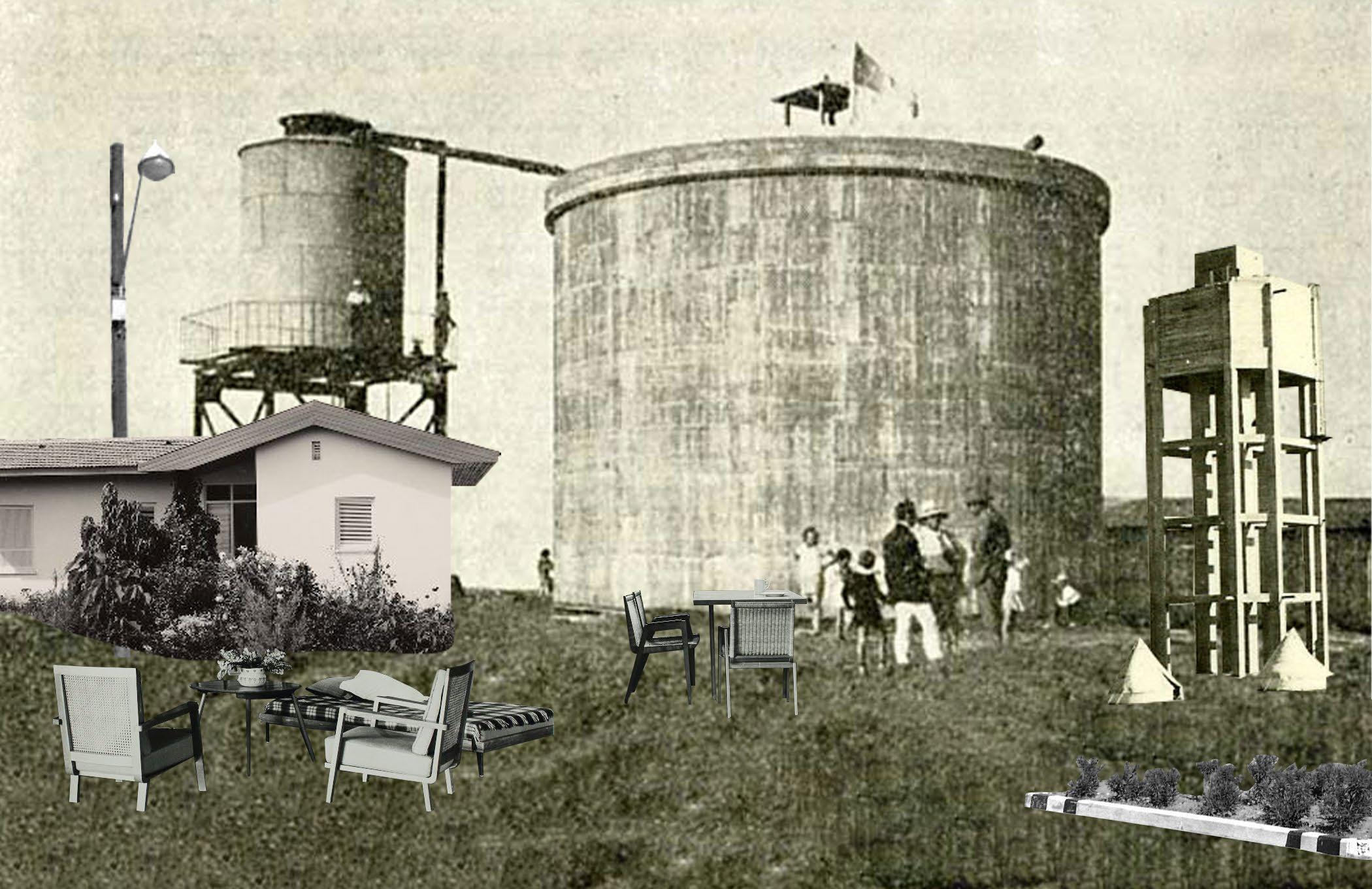 Ramat Hasharon photo archive, and the National Library of Israel Archive
Ramat Hasharon photo archive, and the National Library of Israel Archive
3/22 – (Il)legible Form
Lealla Solomon
Positionality
refers to the how differences in social position and power shape identities and access in society.
When we ask, curate, learn, think, and make, how important is it for us to also challenge? There will always be a group of people that is oppressed, excluded and/or suffering from an injustice. How much of our practice must take part in the temporal movement of decoloniality and focus on healing, inclusion, and justice?
Vasquez asks how and talks about the what and the who but fails to critically address the why? This over-intellectualization and overtheorization seems progressive and modern at face-value because he uses the word decolonize but this method and study still feels exclusive to me. I would ask, who was a part of past colonization and who is a part of modern [intellectual] colonization?
The what deals with what is curated, what is collected, what is narrated, what is the material archive, what is taught, what its investigated, and in my own practice, what is preserved, what is restored, and what is demolished.
The who deals with the people associated within these cultural and academic institutions; who is speaking, who is representing, who is
“These pedagogies are not about denying western knowledge, but about humbling it, about questioning its position of domination and its implication with epistemic and aesthetic violence.” – Rolando
Vázquez
validating, who narrates, with whose voice are institutions speaking, with whose eyes are they representing, who are the artists, who are the students, who are the curators, who are the directors, who are the professors, who is doing the care work, who is cleaning, who is cooking, who is guarding, who is maintaining, who are the publics, and who feels welcomed. Who is a member or these knowledge worlds? Vasquez raises great questions but fails to ask who has the right to decolonize and how positionality operates during this process. Is decoloniality for everyone? Can we all be practitioners of it within creating a remixed version of coloniality?
Vasquez asks how but fails to unpack it. Through the jargon, you can begin to see the practicality of his argument but he falls short. When he says, “By positioning their practice along the colonial difference, artists, curators, art historians, researchers, teachers, students can become aware of how the canons, or the narratives have historically configured along colonial difference, and how they have been oblivious to and complicit with it,” I find the ‘they’ very interesting and wonder why he doesn’t use ‘we.’
03/22 – (Il)legible Form
Decolonize Archive Institution Modernity Practice Positionality
Robert Louis Brandon Edwards
CHALLENGE THE ARCHIVE
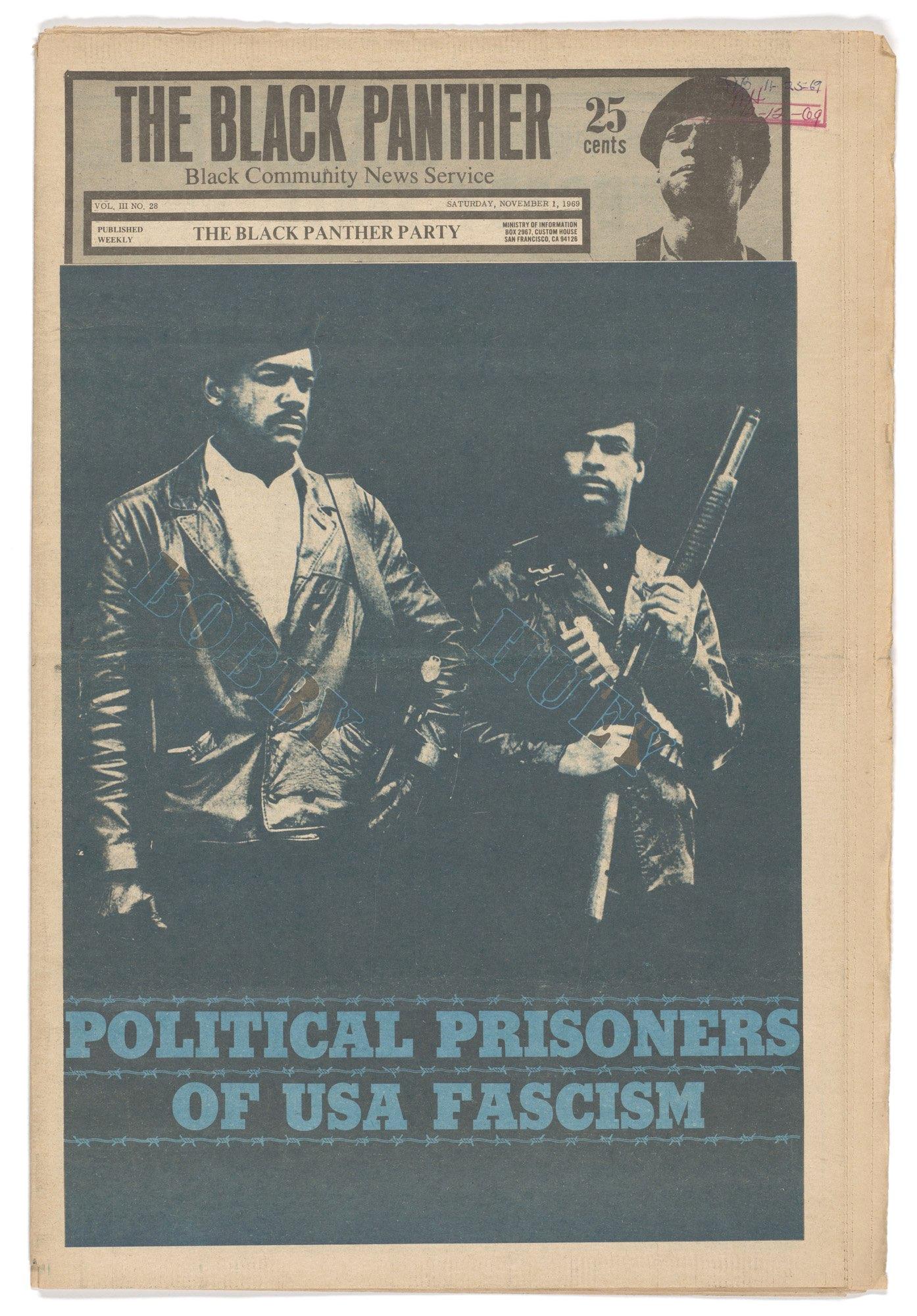
03/22 – (Il)legible Form
Robert Louis Brandon Edwards Emory Douglas, The Black Panther Newspaper, vol. 3, no. 28 (1969)
DIGITALISM
noun: The condition of living in a digital culture, with computer technology.
The reading forced me to think of how interdependent the fields of architecture and photography are. And how architecture practices are no more dealing with buildings, but infact looking at it as an image making practice.
The truths and efforts behind a hyperreal render in creating a false reality to woo the audiences is a questionable act. The fundamental differences between Image, Photograph and drawing, and where does architecture fit in with all the mass media tools, access to data, memory, computation and the advance editing tools at the user’s disposal is changing the paradigms of representation.
My image response is probably something that struck me rightaway when I wanted to make something, but there it goes, I already had it. The chaos of the infinite images that are available at my disposal and the fantastic tools of photoshop to create, what the author comments as ‘dirty realism’. This age of digitalism was probably a
Rutwik Karra
“Despite our tendency to think of digital imagery in terms of smooth surfaces, fluid dynamic simulations and parametric modelsvirtual realities that can be generated ex novo in the computer-perhaps the most intense and lasting effect that the digital will have on architecture culture will be its capacity to bring attention once again to the real, through operating on its fragments in a postproduction space in order to generate alternative futureswhat we could describe as a practice of engaged digitalism.”
— Jesús Vassallo
surreal event to how it has started but the quest for the ‘thing’ pushed the paradigms, so reality becomes virtual and virtual is the new real!
Contextualism
Realism
Aesthetic
Democratisation
Communication
Digitalism
3/22 – (Il)legible Form
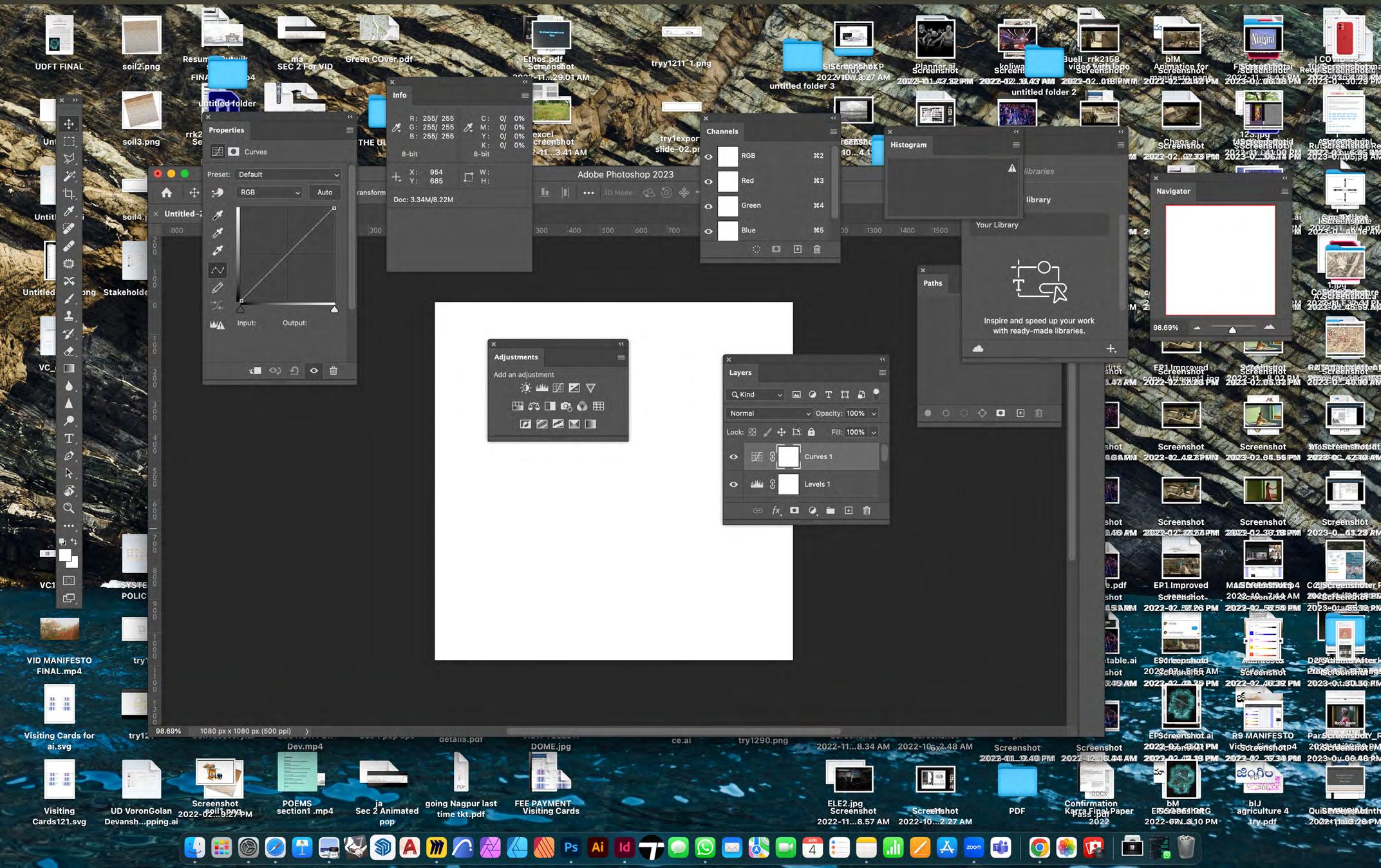
3/22 – (Il)legible Form
Screenshot of my desktop with Adobe Photoshop workspace in making of the task
Rutwik Karra


The Vassallo reading opens with a consideration of the usage of photography in architecture, and how that relationship alters the assignment of value, or rather, the status of being an “artwork” in both fields. For instance, does being photographed by a “famous” or “serious” photographer render the most mundane of structures more artistic or worthy of consideration? This discussion was evocative to me of Atelier BowWow and Bangkok Bastards, and the value that their practices place on fragments of the built environment that were borne not out of an instinct of high architecture, but of day-to-day survival. The da-me architecture and the bastards that these practices documents can be considered “broken by-products of modernity,” rendered visible and thus proposed as a reference that can be used
The shared history of photography and architecture can then be regarded as an instance of the complex progress through which a culture dynamically assigns and reassigns value to its objects - Vasallo
For many designers, it is much easier to convince a client that an architectural design is “good” if it has been confirmed on the internet. - Bangkok Bastards
Theresa Yang
and valued. Photography is used by these projects primarily as a tool for documentation, freezing those fragments of the built environment in time, acknowledging the presentness of them.
3/22 (Il)legible Form


3/22 (Il)legible Form
Theresa Yang Lido Multiplex [Theatre] Shophouse - Bangkok Bastards
CHANCE
noun: an act with an intention or question in mind, and then relying on the chance to play a role in shaping the meaning verb: do something by accident or without design.
Howerdena Pindell’s Video Drawings provides us with a knowledge of process-oriented practice, a system that functions at the intersection of ‘chance’ and ‘intention’. She methodically repeats actions such as drawing vectors or punching holes, which in turn meditatively investigates order, calling into question the stability of systems that govern daily life and conceptions of reality. In Pindell’s hands, blurring the image becomes a way to slow down the pace of image consumption in order to consider the multi-layered impacts of televisual images in everyday life.
The deconstruction of structures of authority is evidently noticed in her work. Although her work doesnot represent overtly political subjects, it does intervene in the power structure by calling out the role and challenges of technology; television here in the everyday life. Through her aesthetic investigation of the medium, Pindell solicits the viewer to look critically at mass media, and she warns against accepting the homogenizing
“Merging the ambiguous temporal-spatial play of her drawings with the television, and then freezing these images, enabled her to put the televisual in dialogue with chance, conflict, and chaos.”
aspects of television programming. It is interesting to me how Pindell’s close-ups of the television places the viewer as an active participant than a passive one; her intervention becomes a part of the art medium.
Vir Shah
objective chance intention experimentation disparate
3/22 – (II)legible Form

Nam June Paik, MagnetTV,1965
Shah 3/22 – (II)legible Form
Vir
MEMORY MAPS
These black mapping practices were necessarily clandestine, ephemeral, and transmitted through a network of knowledge and kinship, rather than on paper.
In the 1960s, city planners associated with Kevin Lynch had made memory maps. Lynch believed that people’s images played significant roles in mediating their lives in cities (Lynch 1960). He believed it was important for planners to understand what these images were, and he advocated asking people about the cities they lived in. The results of these inquiries were frequently mapped. For instance Lynch’s colleague, Appleyard, typed onto a map the responses he’d received to a survey about life on streets with different traffic densities. For example, “The street life doesn’t intrude into the home … only happiness comes in from the street,” on a street with little traffic (Southworth and Southworth, 1982, 186). More notably the planning firm Arrowstreet made a map of Washington, D.C. out of comments it had collected about the city. The map is composed of nothing but words (Lynch, 1980, 158-159). Lynch referred to these maps as “speaking landscapes,” which he understood as “sketches with verbal comments appended directly
Yan Huo
“real” map
Memory map
to the locations where they were made, or about which they were made” (Lynch, 1980, 114). The recurrence in different contexts of the idea of attaching commentary to maps says something about its potential, but there are real and important differences between Lynchian “speaking landscapes” and Barton’s Memory Maps. For one thing, the planners’ inquiries were comparatively narrow, were focused on the built environment, and largely consisted of assessments and evaluations.
3/22 – Legible Forms
“The conditions of bondage did not foreclose black geographies but rather incited alternative mapping practices during and after transatlantic slavery."
Memory Maps
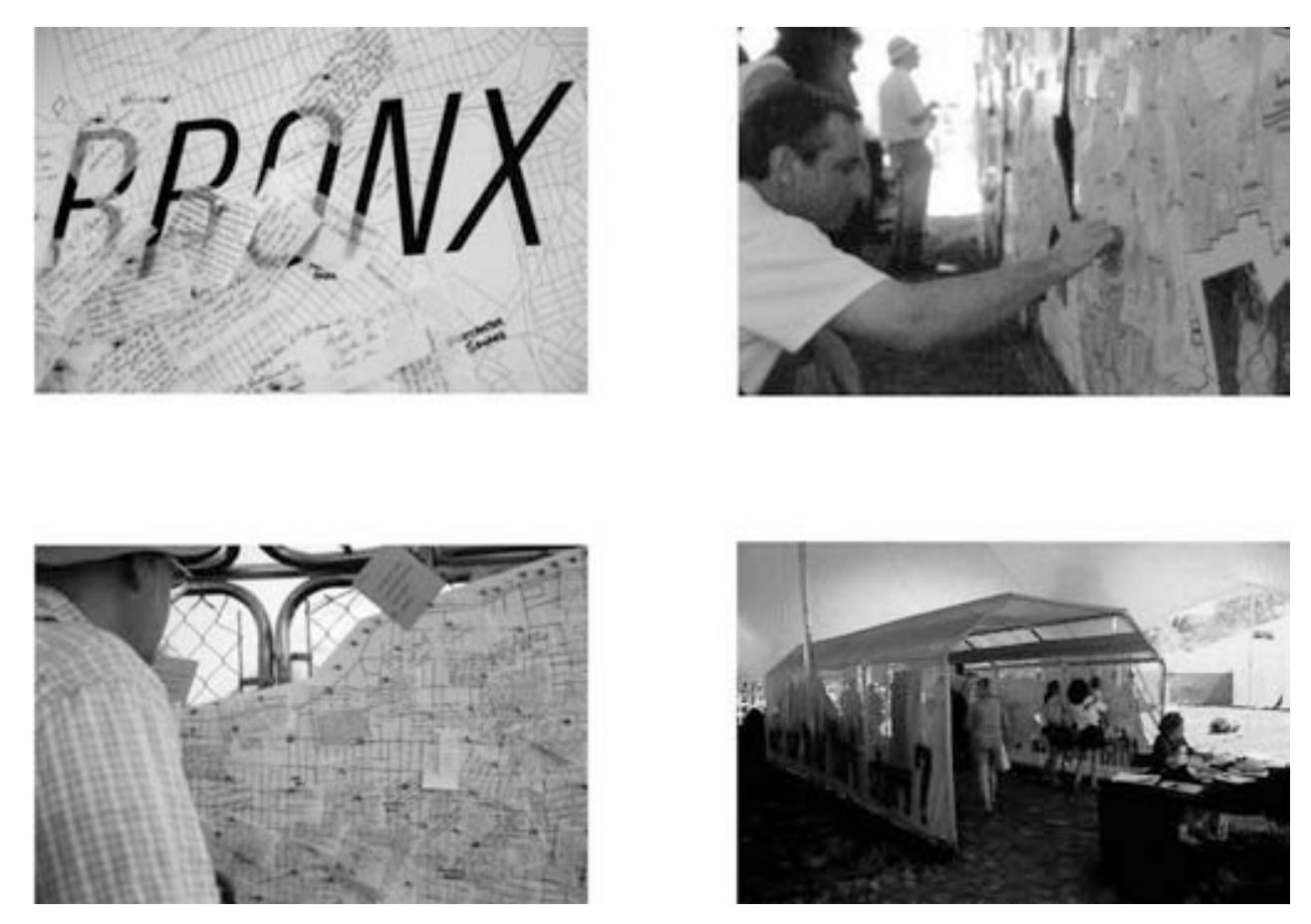
3/22 – Legible Forms
Yan Huo
SYSTEMS: Noun: a set of things working together as parts of a mechanism or an interconnecting network.
We often forget the importance of technology in the 21st century and take for granted the importance of devices and algorithms in our life. We do not ask ourselves who is making these algorithms or who benefits from them. To understand how capitalism has changed and affected our lives we need to understand the type of algorithms used to manufacture our consumption and profile our living styles. From consumption to imprisonment, algorithms are constantly running behind the scenes to maximize profits and keep the status quo in favor of those who make them and the people they choose. It is much easier to run an algorithm to keep minorities in prison than to pass laws giving minorities equal rights, opening up the possibility of questioning current policing.
Whereas repression has, within cybernetic capitalism, the role of warding off events, prediction is its corollary, insofar as it aims to eliminate all uncertainty connected to all possible futures. That’s the gamble of statistics technologies. Whereas the technologies of the Providential State were focused on the forecasting of risks, whether probabilized or not, the technologies of cybernetic capitalism aim to multiply the domains of responsibility/ authority.
- Tiqqun, The Cybernetic Hypothesis
The algorithms running behind these arrests are the ones making the calls and the bodies are simply doing the physical labor. It is much easier to separate yourself from the ethics of
Alejandro Marin
your job when an algorithm is giving you the power to justify your actions. For example, Apple watches tell you when you need to walk, eat or sleep which gives you a justification to behave anyway you want or as you are told. However, whether we like it or not algorithms are here to stay and our data is here to be extracted and sold. The question then needs to be shaped around two ideas: where is this data taken from and who is it benefiting. How do we give this generation the power to fight against these algorithms when they have become integral to our daily routines and most people are okay with them running their daily lives.
Algorithms Policing Minorities Statistics Safe Prediction
Systems
03/28 – PREDOPOL AND ALGORITHMIC
POLICING

03/28 – PREDOPOL AND ALGORITHMIC POLICING
Politico Andrews Mcmeel
Alejandro Marin
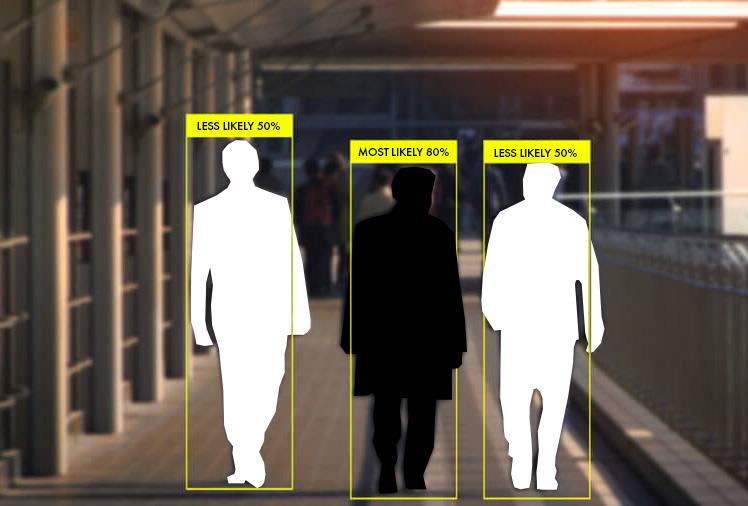
03/28 – PREDOPOL AND ALGORITHMIC POLICING
AI policing algorithim
Alejandro Marin
COMMODIFY
transitive verb
: to turn (something, such as an intrinsic value or a work of art) into a commodity
“In principle, the work of art has always been reproducible. Objects made by humans could always be copied by humans.” — Walter Benjamin
Written in 1936, Walter Benjamin’s “The Work of Art in the Age of its Technological Reproducibility” explores the impact of technological reproduction on the value of art and its influence in capitalist societies. He draws on Marx’s analysis of capitalism during the industrial revolution to discuss the future of capitalist production, arguing that the technological reproduction of art affects cultural and political values, as politicians use art to promote their agendas and control exhibitions to suit their ambitions. While art is seen as a unique instrument of traditional values, reproductions can be used to manipulate credible material for fascist purposes. However, art reproductions can also facilitate the revolution of the politics of art.
Benjamin focuses on the effect of manipulation and mass production on an original artwork or its ‘aura.’ His predictions suggest that mass production will cause the artwork to lose its uniqueness and value. I think it’s interesting to use Warhol’s pop art as an example. In his work, he utilized imagery from popular culture and mass media, including photographs of celebrities and tabloid news, comic strips,
Ariana Bon
and the widely consumed products, such as Campbell’s soup cans. Hisartwork resembles mass-produced printed advertisements, although the canvases were actually hand-painted.
It is interesting to compare Warhol’s art with Benjamin’s argument, noting that Warhol’s use of mass-produced imagery can be seen as a reflection of the impact of technological reproduction on the art world. Like Benjamin, Warhol interrogated the influence of mass production and consumer culture on art and its value. By reproducing products like Campbell’s soup cans, he highlighted the ubiquity and familiarity of mass-produced products in daily life. His use of repetition and uniformity in his art followed mass production techniques used in advertising and industrial manufacturing, breaking the boundaries between art and mass-produced commodities.
In this sense, Warhol’s work can be seen as a commentary on the changing nature of art and its relationship to technology and consumer culture, aligning with Benjamin’s concerns on the effects of technological reproduction on art and society.
Uniformity Ubiquity
Repitition Technology Boundaries
3/29 – Algorithmic Disciplines
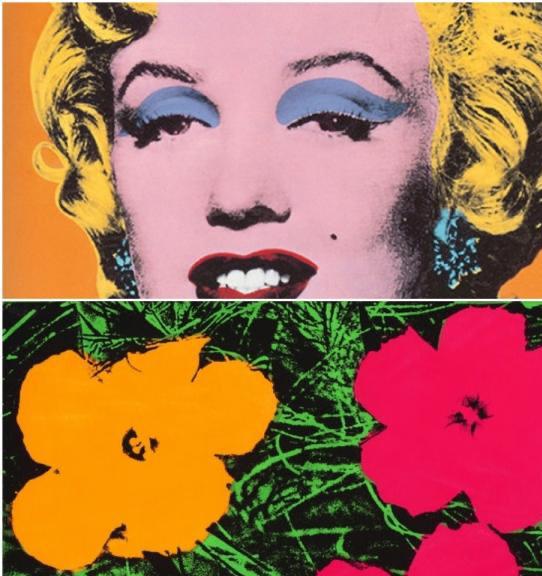

3/29 – Algorithmic Disciplines
Andy Warhol. PopArt, 1962
Ariana Bon
noun: “a radical disruption in the hegemonic and purist logic of ontology - the possibility of considering blackness beyond (though always with and against) the violence of its constitution”
(Karera)
Throughout his essay, Moten lyrically weaves a wide array of theory, critique, and inquiry in Black studies and thought, which holds the same urgency as when it was written a decade ago. Elaborating on ideas introduced in Cedric Robinson’s Black Marxism, which ‘understands the Marxian tradition as part of the ongoing history of racial capitalism’ and highlights resources from the Black radical tradition that disrupt the hegemonic ontological totality of it, Moten infers the ‘emergence and preservation of Blackness’ and the ‘revolutionary consciousness that Black people hold and pass’ are created through the distinction and rejection of ‘actual being’ and the ‘ongoing conferral of historical being’ (Moten, 238). This collective, multiplicitous being, brings forward Edouard Glissant’s notion of ‘consent not to be a single being’ by refusing the racist determinants imposed by racial capitalism for a ‘historical, paraontological totality’ whose ‘genesis is dispersion’(Moten, 238, 239).
Caroline Wineburg
“What if the subprime crisis is best understood as a kind of collateral agency…? Then, it is also the disruption and resocialization of an already given crisis.” — Fred Moten, The Subprime and the beautiful
Building on forms of statelessness, preservation and critique, Moten bridges concepts by Frantz Fanon and Fred B. Wilderson III about the complete disorder, destabilization, and incoherence introduced by the Black being to the current nation’s ‘structuring narrative’ (Moten 239). If Blackness in American is ‘an experience without analog – a past without a heritage’, then the subprime debtor, who is presumed to be Black, can be characterized as an ante-analog, an ‘anticipatory project of celebration’ that rejects pessimism, disrupts ‘an already given crisis’ (Moten, 241), and create refuge through movement. If dispossession is a defining element of Black positionality, Moten suggests the possibility of refusal from the perspective of the dispossessed is both history, present, and prophecy – to have given everything away, to refuse what was never had, to consent to not being a single being.
Axelle Karera; Paraontology: Interruption, Inheritance, or a Debt One Often Regrets. Critical Philosophy of Race 1 July 2022; 10 (2): 158–197. doi: https://doi.org/10.5325/ critphilrace.10.2.0158
Fred Moten (2013) The Subprime and the beautiful, African Identities, 11:2, 237-245, DOI: 10.1080/14725843.2013.797289
PARAONTOLOGY
consent dispossession paraontology preservation subprime
Afro-pessimism
03/29 – Algorithmic Disciplines
Harold Mendez, but I sound better since you cut my throat, 2013

Gordon Parks, The Invisible Man, 1952
Frank B. Wilderson III, Afropessimism cover art, 2020
03/29 – Algorithmic Disciplines
Caroline Wineburg
noun: the quantities, characters, or symbols on which operations are performed by a computer, being stored and transmitted in the form of electrical signals and recorded on magnetic, optical, or mechanical recording media.
“This is a pathographic manifesto: a techno-political diagnosis of architecture after imaging. Neither a history nor a general theory of architectural images, it builds up a philosophical description of architecture’s contemporary technical consciousness, and its deepening immersion in the culture of electronic images that has swallowed all of life.”
— Jonh May, 2019
Displacement
John May interrogates about the impact of digital technology on perception and representation in architecture, art and culture as well as the relationships between digital image storage formats, the algorithms that encode them, and the ways in which they are used in visual art and culture. In his philosophical description of architecture after imaging, John May explores how drawings, texts, photographs, films and maps have become data, something that could actually take any other shape. In this way, almost everything we produce digitally today can be read as inauthentic and disconnected, as a kind of fiction. In the era of AI images and texts, we also start to experience a disconnection with time, with the historical and objective time, a process that challenges our work processes, our minds and perceptions, our biological bodies. In this contradiction between immutability, combinability, and mobility a factor that challenges our temporality are the clouds of invisible data traveling across the oceans on fiber optic wires. Despite everything, this
displacement of our memories and perceptions occupies a land in time, has an address, consumes energy and emits CO2. Where do we go when the digital and physical realms collapse? Clarisse
DATA
Memories Data Perception Encode
3/29 – Algorithmic Disciplines
Figueiredo
Artist Kyriaki Goni’s project The Aegean Datahaven, 2017
PCCW Global, Map of submarine cables

3/29 – Algorithmic Disciplines
Clarisse Figueiredo
AURA
a strange tissue of space and time: the unique apparition of distance...the here and now of the work of art -- bearing the mark of the history to which the work has been subject
What is the potential for art and architecture, and all the cultural production and thinking and discourse that swirl around them, to mediate cognition and steer away from alienation and guard it from management by fascists?
Proximity to art and to photography and film has the effect of rendering everyone into a possible subject, actor, or filmmaker, especially with the proliferation and accessibility of cameras. Despite the democratizing potential of this, I believe Benjamin would look at the image making and sharing practices of contemporary culture and see evidence to shore up his claim that the use of the technology and consumption of its output was leading to mass self alienation.
How might we “restore the instinctual power of the human bodily senses for the sake of humanity’s self-preservation, and to do this, not by avoiding the new technologies, but by passing through them?”
“Humankind, which once, in Homer, was an object of contemplation for the Olympian gods, has now become one for itself. Its self-alienation has reached the point where it can experience its own annihilation as a supreme aesthetic pleasure” — Walter Benjamin
superstructure
crisis (fascism) aura spectacle alienation
Dan Miller
How might we “undo the alienation of the corporeal sensorium” through deepening engagement with space and time and history in our work?
Thinking unfolds in time and space. Technology has intervened in these cognitive relations. I am interested in the peripatetic -- forms of media display that inspired Benjamin and perhaps provide an antidote to overwhelm -- the state that can veer into the spectacle.
3/29 – Algorithmic Disciplines
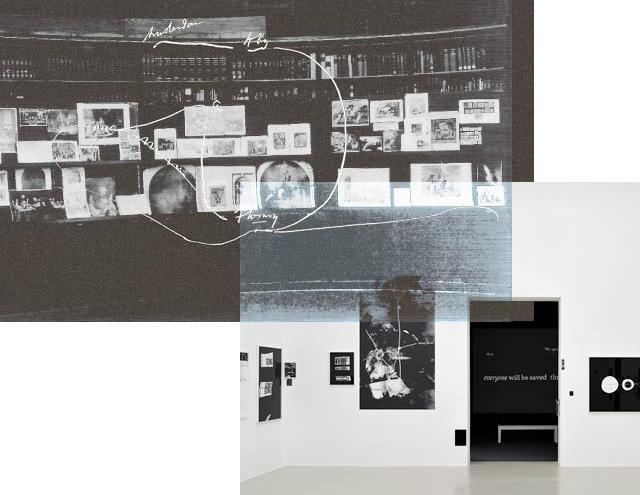
3/29 – Algorithmic Disciplines
Aby Warburg, Bilderatlas Mnemosyne (1920s); Kameelah Janan Rasheed, i am not done yet (2022)
Dan Miller
Instrument-Surface
The externalization of our thoughts requires both instrument and surface, the medias which then transmit the process of recording and storage to generate culture.
I found John May's text, Signal. Image. Architecture, to be both clear in its epistemological stance while at times tautological, bordering on redundant. The text reads like a manifesto in its organization, with a section dedicated to "Three Axioms" and another dedicated to "Three Storage Formats", in which May posits that our mediums of representation (its format, interaction, and transmission) direct our collective sense of culture, as storages of memory. To May, this occurs through our technicity, which I understood as our instrument-surface relationships, with our hands being the "instrument for instruments".
One part of this that I found particularly interesting was the differences outlined between orthographic and interface-based mediums of representation. While the orthographic medium of pen and paper elicits the mechanization of the body to produce drawings, the interface-based medium of computer aided graphics relies on "'a complex apparatus... always carefully
"Cultures are weilded to the technical character of their own transmission, and it is this quality that lends to them the force of self-preservation” — John May
perforated to allow strategically mediated interactions'" (33). These interfaces then produce images, which are distinct from both drawings and chemical photographs in that they rely on signalization, electrical transmission of data, and the myriad systems of energy generation that support it. May posits that it is in these differences that cultural production and individual relationality to the world has evolved. What I found quite heavy handed and tautological, however, was his dialectic between the chemical photograph and the digital photograph. I can understand the dangers of designers forfeiting distinction between photograph, render, and collage, for example, but I think at a certain point the argument actually begins to cater to and uphold beliefs in the preeminence of designers and their (re)presentations in creating cultural identity.
Signalization
David Zhang
(Pre)Technical Technics
Silent-Violent Instrument-Surface Epigenetics
3/29 – Algorithmic Disciplines
NSIT, Russel Kirsch, First Digital Image, Baby, 1957.

176x176 pixels (above)
John Logie Baird, First Nipkow Ring TV, 1923 (below)

3/29 – Algorithmic Disciplines
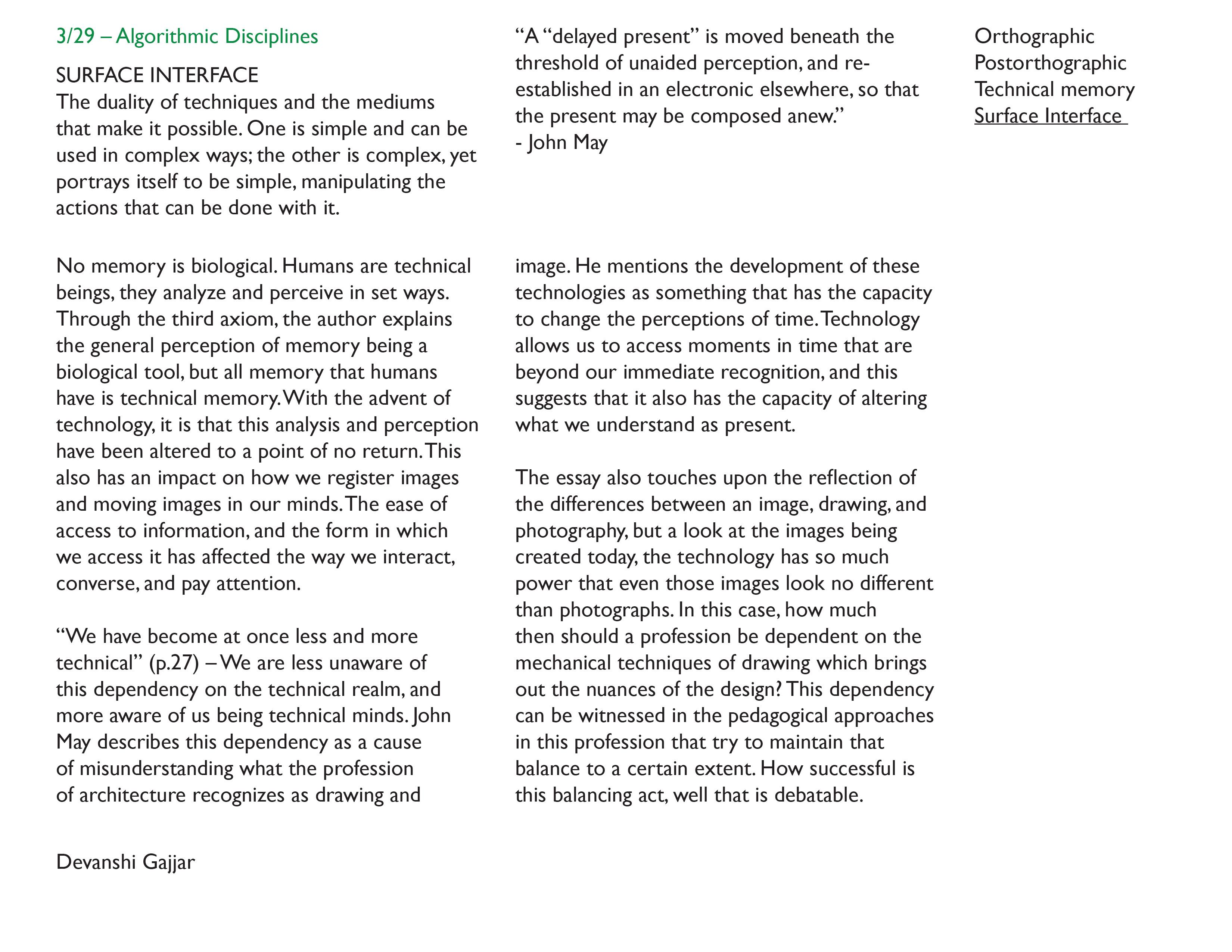

noun: a device or implement, especially one held in the hand, used to carry out a particular function
verb: impress a design on; equip or be equipped with
“Dancers always talk about “making” dances. There is a physicality involved in the word make that reflects in your work. What role does the construction process play in your work?.”
— Kenneth Goldsmith
A tool is the conduit for making a painting. It stands between the painter and the painting. The painter reveals that the tool can either be in between you and your painting or it can be an extension.
An extension of you, a medium that is not separate from you. In Jack’s case the tool was an extension of his hand. Tool can either be a guide of the hand or it can take over completely, no rational thinking, Allowing the tool to flow freely.
He experimented with the tools as he built them himself therefore he could build anything he wanted to build. He restructured his idea and thinking of painting and in the process restructured his studio to help foster his techniques.
Tool being used as a developer giving them a quality of being un-handmade. The process of making that was aided by the tool held importance.
Devanshi Pandya
TOOL
Make Flow Tool Materality
Extension
3/29 – Algorithmic Disciplines
Jack Whitten: An Artist’s Life | Art21, “Extended Play”
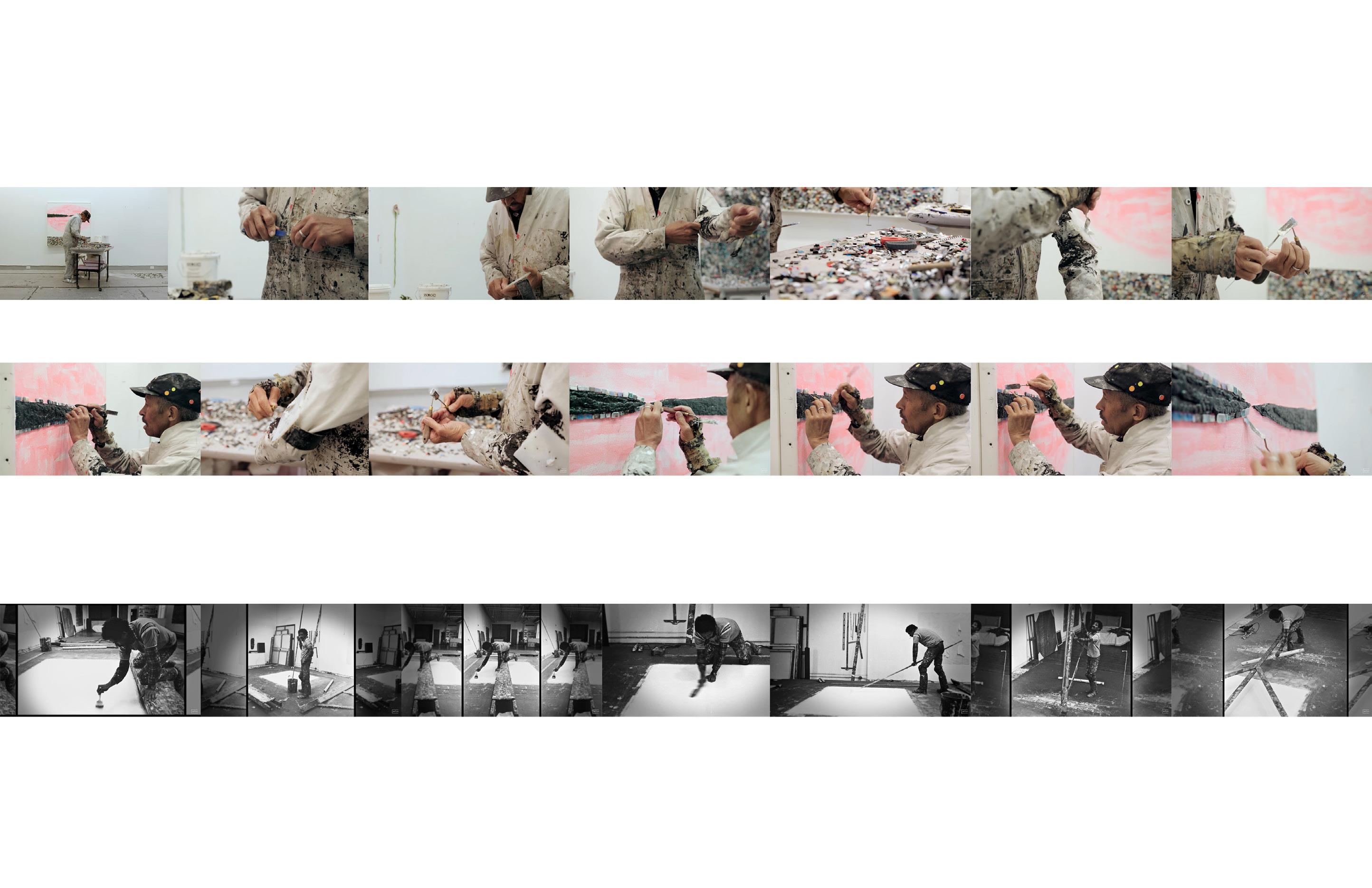
3/29 – Algorithmic Disciplines
Devanshi Pandya
AUTHENTICITY
Noun. The quality of being real or true. - Cambridge Dictionary
“The most important social function of film is to stablish equilibrium between human beings and the apparatus”. — Benjamin, Walter. “The Work of Art in the Age of its Technological Reproducibility”.
Social value
Apparatus
Montage
In the essay, Walter Benjamin discusses the influence of technology on the reproduction, expression, and perception of art. Artistic methods such as photography or film have shifted the way art is produced, or better say, re-produced, leaving behind the historical authenticity and uniqueness that characterized art production until that moment, with technology as the game-changer. Interestingly, this idea of the loss of authenticity shows that the film has a dissociation of time by the simple idea of something produced to be reproduced: as Benjamin said, there is no more here and now. Thus, mechanical reproducibility has a social value in its possibility to democratize access to art, giving the film a strong political dimension. Benjamin, interested in mass culture, stated that film has a social value found in a collective way of experiencing art. In this context, I find fascinating this idea of collectivity that is probably more developed in the film than in any previous artistic format. It is intriguing to think
how the film looks for reciprocity in different scales through the collective experience, from the human body senses to the collective reactions of many individuals at a time. However, the democratization of art, in relation to apparatuses and technology development, has drastically changed the collective experience of film in recent years. In the past, the cinema was the primary place for people to experience a film collectively. The rise of streaming platforms has given people the ability to watch films individually and at their own pace. As a result, the collective experience of the film has become fragmented, and the social character of the film has changed. It would be interesting to research how the translation of the collective experience of the film into spaces for mass culture has evolved over time.
Francisca Alliende
Reproduction
Authenticity Aura
3/29 – Algorithmic Disciplines
Francisca Alliende
Trip to the Moon (1902) by Georges Méliès reproduced in my individual laptop. Is collectivity still a feature of film?



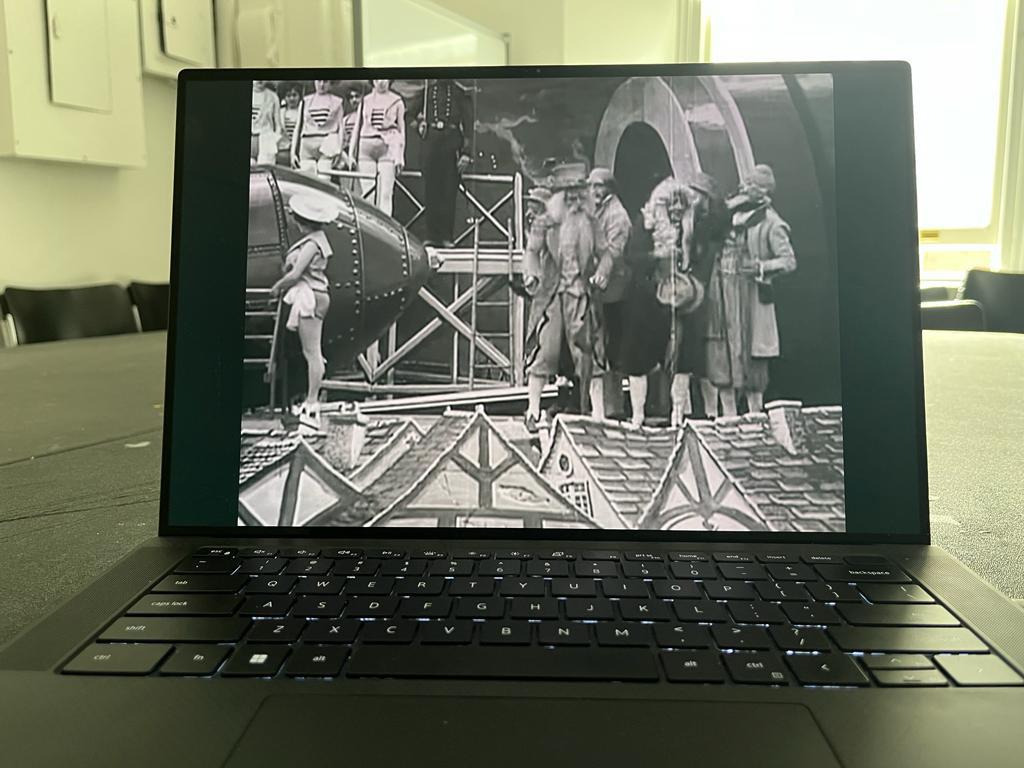

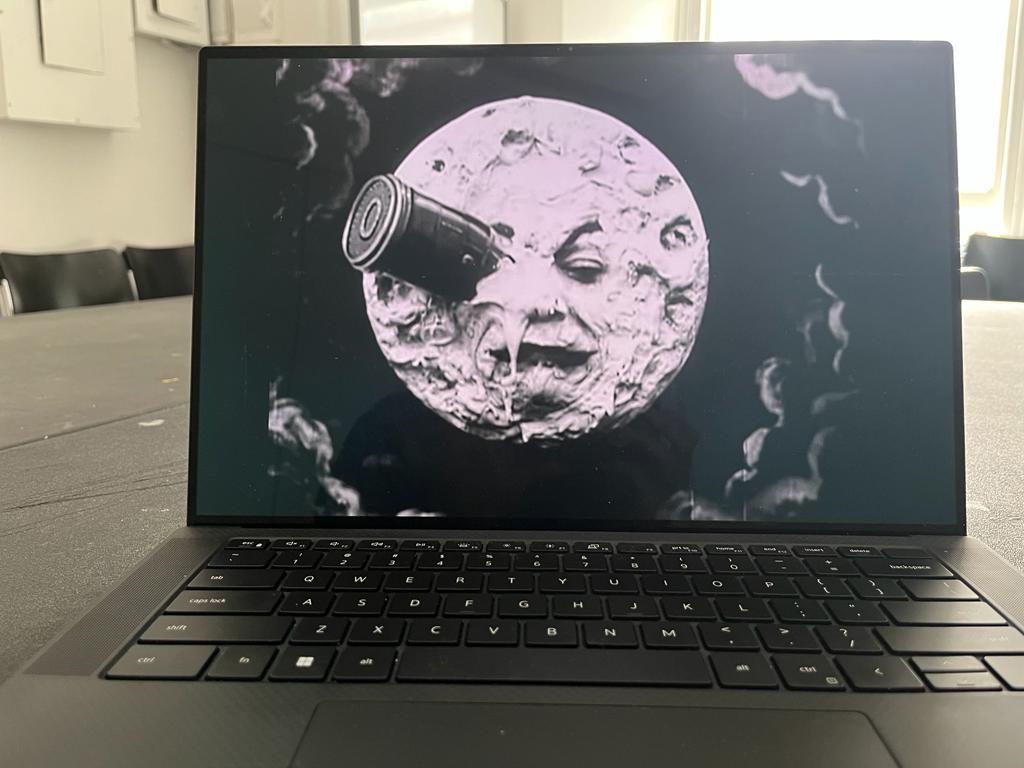





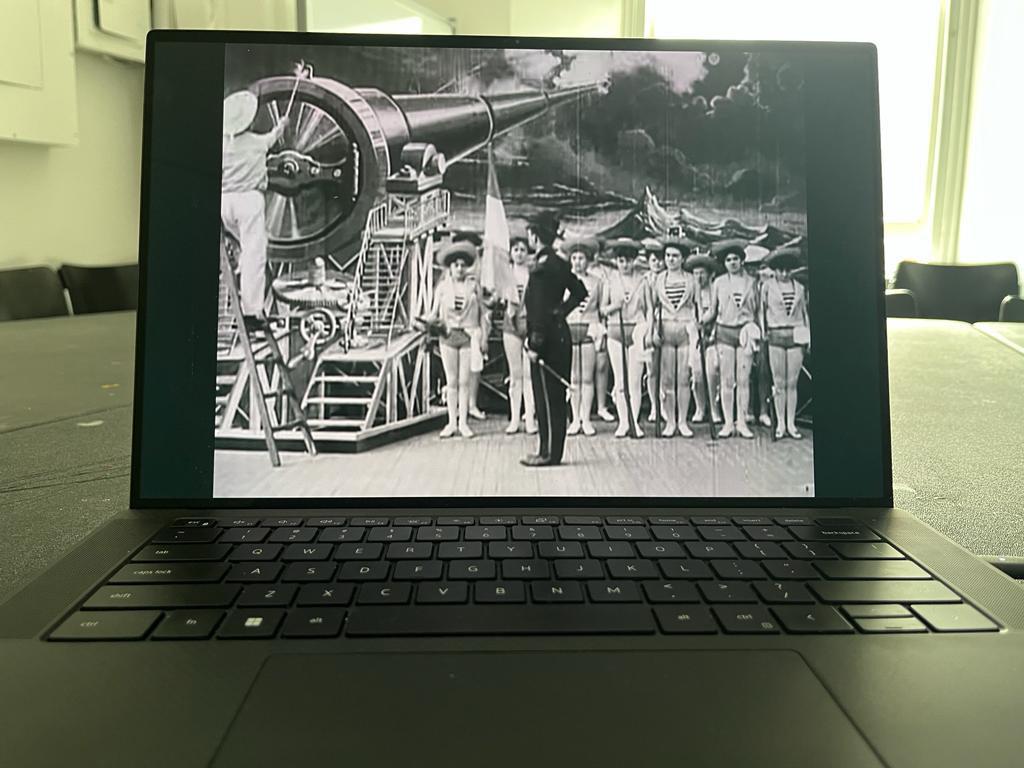
3/29 – Algorithmic Disciplines
TECHNIQUE
a way of carrying out a particular task, especially the execution or performance of an artistic work or a scientific procedure.
John May emphasizes the importance of making the definition of visual material cohesive. He insists that image interpretation affects us psychosocially and changes our perception of the materials. According to his book, confusion about the definitions is the consequence of our thoughts, work, and ultimately our lives.
May introduces three axioms based on the term “technical.” According to his three axioms, the technique decides the form of thoughts and how we perceive them, and it is deeply related to our deepest region of consciousness. Moreover, when it comes to the conception of time embedded in a technical system, it becomes “culture” as a storehouse of cumulated knowledge and wisdom. Interestingly, he illustrates that memory is recalled from technical memory, not stored in a biological memory as a property.
According to these axioms, May defines the difference between three storing formats: Drawing, Photograph, and Image. “Drawing” is a hand-mechanical gesture, “Photograph” is basically heliography, which is a chemical-mechanical visual format, and “Image” is an output of energetic processes defined by signalization as an act of data processing. His definition helps us to reframe visual formats and understand the fundamental role of each technique.
“This essay dreams of a time when we have become at once less and more technical and, with that awareness, more able to address the implications of our technicity, for ourselves and for the world. ” — John
May
Since culture is made of the accumulation of all these techniques, distinguishing the difference between each method is crucial to make it cohesive without creating confusion. However, numerous artworks produced in contemporary are breaking the line between them, using multiple techniques at the same time, such as collages mixed with photographs and images. But as long as we define the boundary of techniques, we can describe how culture changes and accumulates clearly, chasing how each technique affects others and which edge collapses in each artwork.
Axiom Definition Technique Drawing Photograph Image
3/29 – ALGORITHMIC DISCIPLINES
Gyeom Chung

3/29 –
Drawing, Photograph, and Image of Seagram Building
ALGORITHMIC DISCIPLINES
Gyeom Chung
COLLAPSE
To suddenly lose force, significance, effectiveness, or worth
- merriam-webster
What I found fascinating about Tainter’s reading was not only the concept of fragility and vulnerability when it comes to the demise of complex civilizations, but how those events can still happen today, reminding us that our current civilization can also die because it has already died once.
The author evoques through his text how societies are prone to collapse on their own complexities. As Tainter mentions, Collapse is a political process, one that is rapid and entails a substantial loss of its sociopolitical structures.
In most of the examples that Tainter mentions civilizations collapse due to shifting power dynamics, starting first and foremost with the breakdown of authority and central control, as control vanishes everything starts tumbling down as a domino effect, revenues, military power, law, protection, monuments and even literacy. In most of the cases this collapses led to survival of the fittest scenarios as a reaction due to des-
“‘
— Joseph A. Tainter
Javier Flores
perate circumstances.
Through this reading Tainter is able to evoque how even in the most profitable situations, the future of a society lies in the unknown. Through this collage I wanted to evoque this feeling, even though we have learned from all these narratives of collapse, how much do we actually know the state of our civilization as we know that even ours is also impermanent.
Fragility Collapse
Political
Power
Civilizations are frgile, impermanent things... are modern societies similarly vulnerable?”
3/29 – Algorithmic Disciplines

3/29 – Algorithmic Disciplines
Photo Abandoned classroom in New Zealand, Photo credit to Derelict NZ.
Javier Alberto Flores Leal
MAKING
“The process of producing something” in the context of the power of a generalized term vs specificity of a term like “painting.”
“My light in painting is equivalent to Coltrane’s sound. Coltrane’s music is non-linear. It’s circular. It’s not one-dimensional...When I speak of space in painting, I’m speaking in terms of multi-dimensional space.A space that is infinite in all directions.” - Jack
Whitten
This piece is an evocative and candid conversation between artist Jack Whitten and poet and critic Kenneth Goldsmith. Wide-ranging in scope in terms of topic and timeline, the article wanders from their origins and inspirations all the way to a breakdown of the theoretical critique of the human perception of time.
Preceded by a decades-long and acclaimed career, acknowledging the rareness and fragility of this status, Whitten reflects on what it means to him to be a visual artist and the weight and responsibility of taking this on. In comparison to the mainstream understanding of artist notoriety, one should be given space to experience the journey and minifest work in a natural manner.
The pace of production and “materialistic thinking” of the ‘80s is something that Whitten did not attempt to assimilate toward but instead “buried deeper into [his] mind.” He speaks of growth and deeper understanding in this time, speaking highly of his generation’s focus on the journey as opposed to the perceived commercial or material outcome.
John Max
He elaborates on ancestral knowledge we inherit of an affinity to water and how “we carry a certain information about fluidity, translucency, transparency.” I see this influence of fluidity heavily in Whitten’s work. He talks about means of production being somewhat formulaic in conceiving a rudimentary machine or “an extension of the [artists] hand” in a large brush-making technique to encompass the entire canvas with a single stroke. The technique became almost photographic or cinematic in conceiving a single image but with a wide depth of texture and background.
Eventually, we are hinted to the meaning in the background. Whitten claims “I’m not in art for art’s sake, or for decoration. It’s about dialogue. Romare Bearden spoke about art as a bridge. Art is the last hope.”
Translucency Past-Present-Future
Equivalency Rebellion Fluidity
3/29 – Algorithmic Disciplines
John Coltrane, circle of fifths sketch, 1967
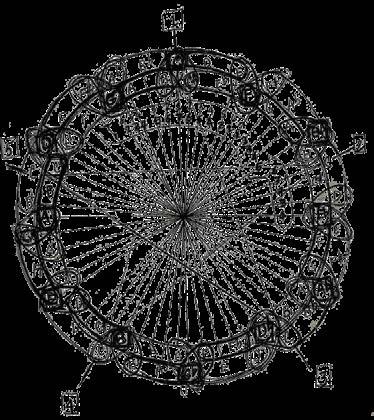
Jack Whitten, Delta Group II, Acrylic on canvas, 1975

3/29 – Algorithmic Disciplines
John Max

3/29 – Algorithmic Disciplines
Jack Whitten, Delta Group II, Acrylic on canvas, 1975
John Max
STATELESS
noun: an open act of social lives whose animaterialized exhaustion remains as irredicuble chance.
PRESERVATION
noun: conditional branching, undone computation (tuned, forked, tongued), improvisation and, what it forges, digital speculation beyond the analogical or represesrntaiton or calculative reserve.
Sometimes Fred Moten writes in riddles. In the essay from 2013 “The Subprime and the Beautiful”, Moten weaves together critiques and elaborations on Cedric Robinson’s Black Marxism (published in 1983), with theories on Black subjectivity and both immaterial and material consequences. Moten focuses on Robinson’s critical discovery of “the ontological totality” as the extension, foundation, and preserving force of racial captial.
The text poses the question of what if the both material and immaterial crisis of subprime debt/ the subprime debtor was seen as a type of collateral agency? The resulting restructuring of viewpoint would lead to something like celebration, disruption, and resocialization of the crisis.
Khadija ann Tarver
“Perhaps, what is required is an acknowledgement of the fact that the discouse of social development, of the ongoingadvent of another world that is both in and out of this one, has always been subprime. What we want is always already unaffordable and, moreover, the finacialization of everyday life was a plantation imposition.” - Fred Moten, The Subprime and the Beautiful, p 240
Remnants
Moten also asks is there something other than “intermittent respite that makes “feeling good about ourselves ...[something] obsene”? And responds with the potential pleasure of “the open secret, the kinetic refuge, of ones who consent [or who choose] not to be a single being”. He names the revolutionary mobilized transsexual transgressor as a subprime debtor, who is also guerilla, owed not ownership, but celebration. Moten situates this being somewhere besides the point, near resistance, and “like power, is everywhere.”
3.29 – Algorithmic Disciplines
Antianalog Ante-analog
Amanda Williams, What Black Is This,You Say? (2021), installation view at Storefront for Art and Architecure, NYC
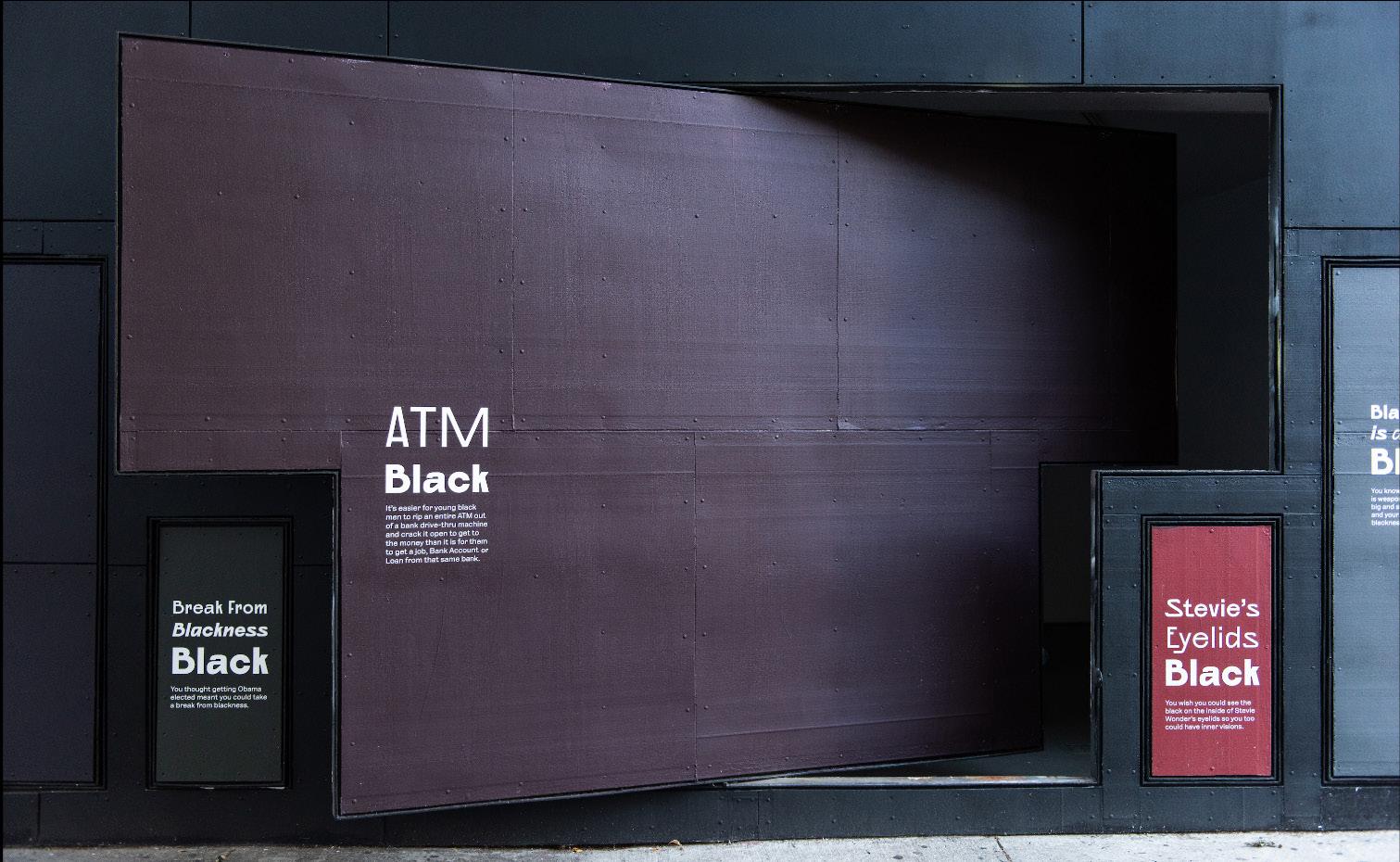
3.29 – Algorithmic Disciplines
Khadija ann Tarver
An imaginary light that surrounds an object which gives it special significance above others.
“In even the most perfect reproduction, one thing is lacking: the here and now of the work of art-its unique existence in a particular place. It is this unique existence-and nothing else-that bears the mark of the history to which the work has been subject.” (Benjamin, 21)
In “The Work of Art in the Age of its Technological Reproducibility” Walter Benjamin goes on to describe how the change in the conditions of production has manifested itself in all areas of culture in capitalist society. In his text, he refers mainly to the consequences of the aura of works of art in the introduction of photography as a technological advancement. Benjamin describes the aura as the “whole sphere of authenticity” (21), one that eludes the reproduction and duplication by technology, and sticks to the one and only present piece of art. On the sixth floor of the Moma, one can notice many of these auras; surrounding works of Picasso, Van Gogh, Jackson Pollock and more. The one and only, one of a kind, piece of culture that owns the authority over every kind of reproduction.
In the past week reading on pieces of art has been hard for me, so I would like to focus on an aura-producing statement that proliferated around the center-wing discourse in Israel in the past decade- Rak Lo Bibi (‘Just Not Bibi’ in translation). Rak Lo Bibi emerged as a public slogan in the political crisis of 2019 when Netanyahu’s position as prime minister was questioned in light of corruption accusations. The slogan was related to the
Lealla Solomon
One-of-a-kind
Unreproducible Authentic Significance
center and left, who were in turn accused of being able to compromise their political agendas for the sole replacement of Netanyahu. Looking at the slogan, Walter Banjamin’s theory shifts from the work of art to the political sphere; Being on a thrown for the past 16 years, the longest time a prime minister has held the position in Israel, Netanyahu managed to produce himself an aura that not only is reaffirmed by his supporters, but by the left and center-winged parties as well.
Here, Benjamin’s aura and technological reproduction can be seen in a different light; Netanyahu has been reproducing his own aura with the use of technology. By studying modern communication he has been able to control his own reproduction. He does not give interviews anymore or lets the crowd ask questions, rather, he times his appearance and his statements over the same background, at a certain hour. This is in the way in which he cannot be imagined in another setting. We wait for his emergence on a blue background with white typography and a blue and white cone which has the resemblance of a flag. He states his words on the screen, while millions are watching the aura, the leader, then he crawls back to his office, to not say a word again.
AURA
3/29 – Algorithmic Disciplines
 Benjamin Netanyahu in various arrangements.
Benjamin Netanyahu in various arrangements.
3/29 – Algorithmic Disciplines
Lealla Solomon
Etiolation
by excluding sunlight; to make pale; to deprive of natural vigor; make feeble.
“For a long time, before its republication in 2000, Black Marxism circulated underground, as a recurrent seismic event on the edge or over the edge of the university, for those of us who valorized being on or over that edge even if we had been relegated to it. There, at least, we could get together and talk about the bomb that had gone off in our heads. Otherwise we carried around its out, dispersive potenza as contraband, buried under the goods that legitimate parties to exchange can value, until we could get it to the black market, where (the) license has no weight, and hand it around out of a suitcase or over a kitchen table or from behind a makeshift counter. Like Pryor (1994) said: ‘I got some shit, too . . . you respect my shit and I’ll respect yours’. Maybe there is some shit in the back of our cars that we don’t even know about.”The narrative that challenges the hegemony is often met with opposition and in this country, it is often met with suppressive policies and violence. Black publications, thought, and critical analyses like Black Marxism is similar to the Black Panthers newspaper and to NWA’s first album Straight Outta Compton because they interrupt
“The black American subject does not generate historical categories of entitlement, sovereignty, and immigration for the record. We are ‘off the map’ with respect to the cartography that charts civil society’s semiotics; we have a past but not a heritage..” – Frank B. Wilderson III authority and disrupt social and mental algorithms. We live in a society where fake news and propaganda are used as tools to suppress critical thought. This doesn’t start at FOX news or on social media. It starts in the schools, in textbooks, in lessons by institutions and their figures. Below are the pages from a seventhgrade history textbook issued to Virginia from the late 1950s to the late 1970s that depicts slavery as being a “not so bad experience” for Black people in this country. I’ve also included a page from redacted MLK FBI files to show how information and tactics can be overtly covered up and hidden. How might the textbook be a form of redaction? How might these two documents be a form of misinformation that lead to technological racialized algorithms?
Robert Louis Brandon Edwards
03/29 – Algorithmic Disciplines
Contradiction Blackness Disruption Etiolation Hegemony
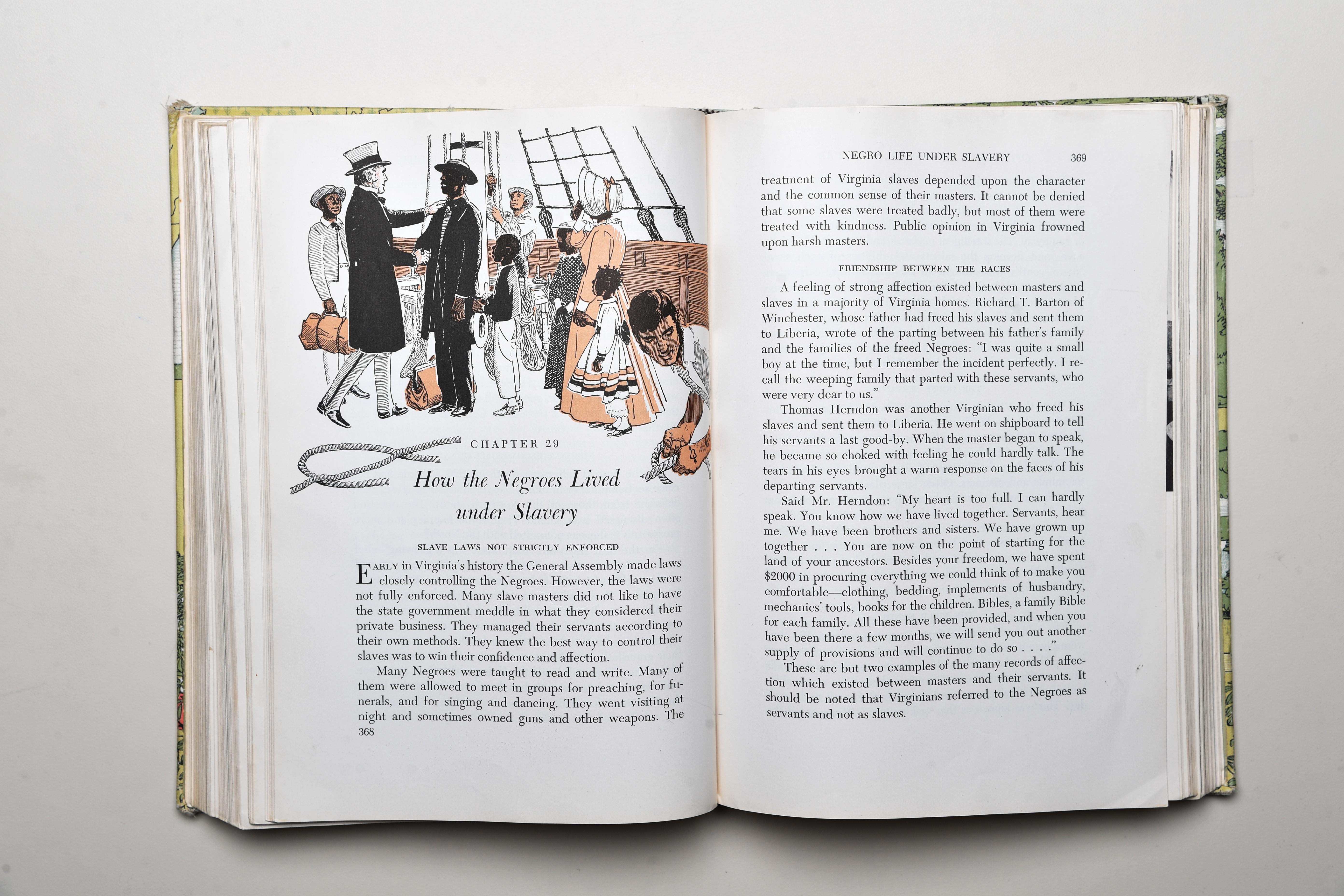

03/29 – Algorithmic Disciplines
STOP WOKE ACT
Robert Louis Brandon Edwards Seventh-grade history textbook issued to Virginia from the late 1950s to the late 1970s; Page from redacted MLK FBI files.
SURVIVAL
noun: the state or fact of continuing to live or exist, typically in spite of an accident, ordeal, or difficult circumstances. Reading through the article forced me think of what how cyclical and universal time is. It has happened. And it has happed not once. But in every time of the civilisation, or human order.
Subconsiously, it seemed like a story of opportunity in the moment of crisis. Especially, how everything starts to get back in order. It is the story of how we collapse and get back. And the fact that we are bound to collapse and humans as species that can never organise, do continue to attempt to organise after collapse is something I loved about the reading.
The working or the stability of a civilization can be measured in scales of issues ranging from place, type of rule, people, religion, organisation, demogarphics, dynamics, economy of the overall administration. All of this is very specific to civilisational orders. But authorities lack of control on some of these is when it all falls apart!
“Only
Rutwik Karra
Civilisation
food and
Whatever central authority remains lacks the resources to reimpose order. Bands of pitiful, maimed survivors scavenge among the ruins of grandeur. Grass grows in the streets. There is no higher goal than survival. Anyone who has read modern disaster literature, or seen it dramatized, will recognize this script. It has contributed substantially to current apprehensions about collapse.”
Public Architecture (defensive)
Survival
the strong survive; the weak are victimized, robbed, and killed. There is fighting for
fuel.
3/29 – Algorithmic Disciplines
— Joseph Tainter
Colors of Major Political parties in Power in India.

3/29 – Algorithmic Disciplines
Rutwik Karra
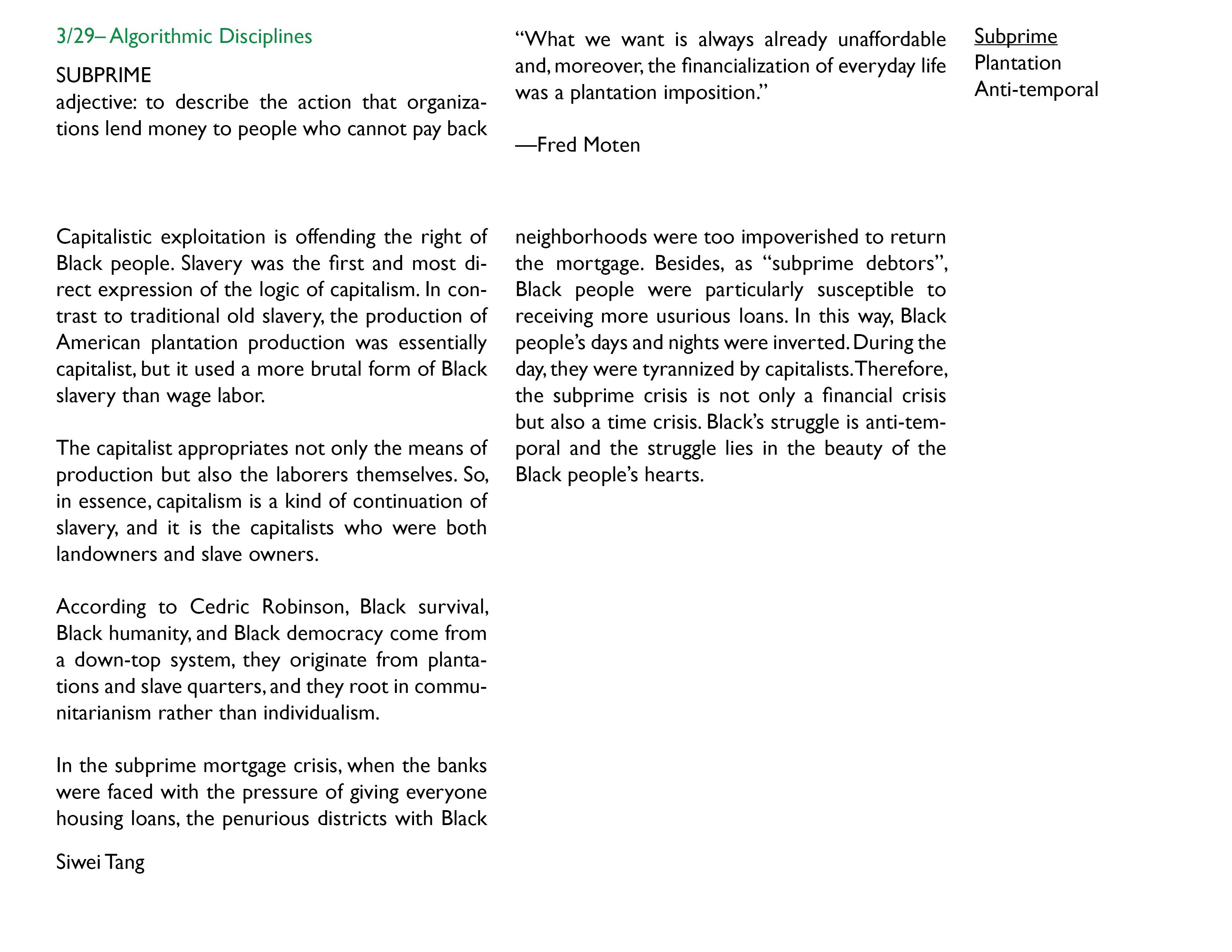

In Tainter’s work, collapse of society is defined by a loss of complexity, preceded by the idea that a civilization can only collapse if there is a certain pre-existing degree of complexity. It is a compelling definition, and even more so because of the socioeconomic and political complexity of modern civilization. The reading reminded me of John Akomfrah’s Vertigo Sea, which I had seen when it was shown at the New Museum back in 2018. An experience so dizzying, I found the title extremely fitting. Akomfrah’s incredibly complex work has a different relationship with the complexity of modern society –thought he doesn’t necessarily address collapse in so explicit a manner as Tainter, the overlapping images of swelling seas, whale hunts, refugees on makeshift vessels, black bodies held on a slave ship, quiet algae in deep oceans, delivers an overwhelming, heart wrenching realization of the consequences of com-
Human history as a whole has been characterized by a seemingly inexorable trend towards higher levels of complexity, specialization, and sociopolitical control, processing of greater quantities of energy and information.
-
Joseph Tainter
Human progress [...] can also cause the profoundest of suffering.
- John Akomfrah
plexity. In Tainter’s reading, collapse is an endpoint, an event towards which there is, of course, a process, but for Akomfrah perhaps, collapse is ongoing, an accompaniment to complexity, without a certain endpoint. Or perhaps collapse is multiple, different populations (of both human or animal categories) face collapse as modern civilization as a whole moves forward, progresses, pushed forth by their collapse.
Theresa Yang
3/29 Algorithmic Disciplines


3/29 Algorithmic Disciplines
Theresa Yang Vertigo Sea - John Akomfrah
“The paint leaves the hand, falls onto this canvas, I take that and extend it several steps further.” - JW
putting a word into a context, where it assumes a new meaning.
Making, transforming, transfiguring, binding, entangling, extending and fluidity, is what defines Jack Whittens body of work. It is interesting to learn that his process is parallel to the one of photogrphy. He understands speed as an instant in the Abstract expressionist gesture, that removes it from relational to non-relational thinking. Everything is about the process, even extracting metaphors from scienific processes is what was astonishing. He embraces polarity in his journey, of life and of “making” a painting. Polarity between cultures, people, materials and everything around him that he has been taking impressions from. Jack Whitten goes on to describe the ingrediants of his work, the materials, as raw. He introduces context and intention in that material through the process of “transformation” and let it assume a new meaning.
Looking from Whitten’s point of view, we witness his artistic forebears and cultural idols honored in tributes across his practice.
transformation make-ing speed process entanglement
Vir Shah
Transformation
3/29 – Algorithmic Disciplines
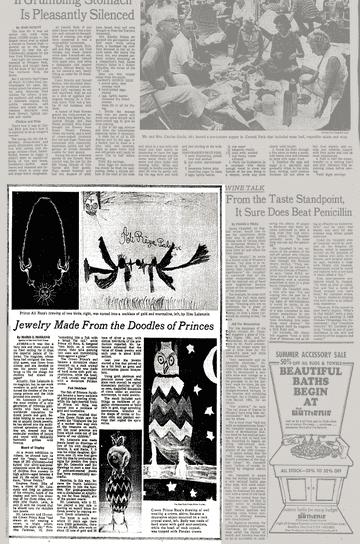
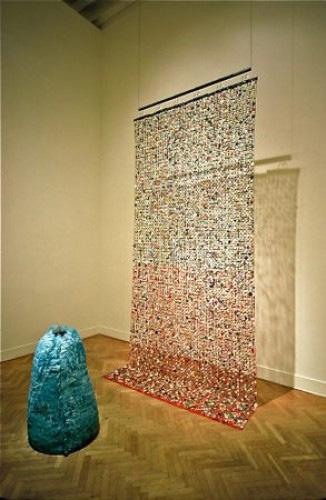

3/29 – Algorithmic Disciplines
Vir Shah
(Left to Right)
Jewellery Ad, NY Times Archives
Lisa Hoke, Untitled, 1992
Jack Whitten, 28 Black Holes, 1992-94
PSYCHIC
A psychic is a person who claims to use extrasensory perception to identify information hidden from the normal senses. People in western society have this view of the artist, some romantic thing. We live our lives and we do what we have to. But people outside see us as some glamorous, exotic creature. Art is something we do. It’s like we have a purpose in life, being artists. That’s a position. That’s a job. So where’s the glamour? We’re doing what we’re supposed to do. People do not understand the sacrifice that artists go through to do what they have to do. If they went into the artist’s life and saw what the artist has to do on a daily basis to keep their act together . . .
Black artists at that period were not getting any kind of attention. My having that show at the Whitney Museum was primarily because of Marcia Tucker, a curator at the Whitney. There was a social consciousness in ’74. The gallery at the Whitney that I used was set aside for people who did not have commercial representation, and I fit the bill.
It’s a confirmation. It says your intentions were
Yan Huo
right, your feelings were correct. Even though it took 20 years for it to surface, for it to complete the circle. Artists tend to remove the notion of doubt from their vocabulary. We do that for self-preservation.
Future Past/present/future Feeling Psychic
“For it to complete the circle. Artists tend to remove the notion of doubt from their vocabulary. We do that for self-preservation.
3/29 – Algorithmic Disciplines
."
Paris Gothic, 1993, acrylic on canvas, 70½ x 66½ inches. Courtesy of the artist
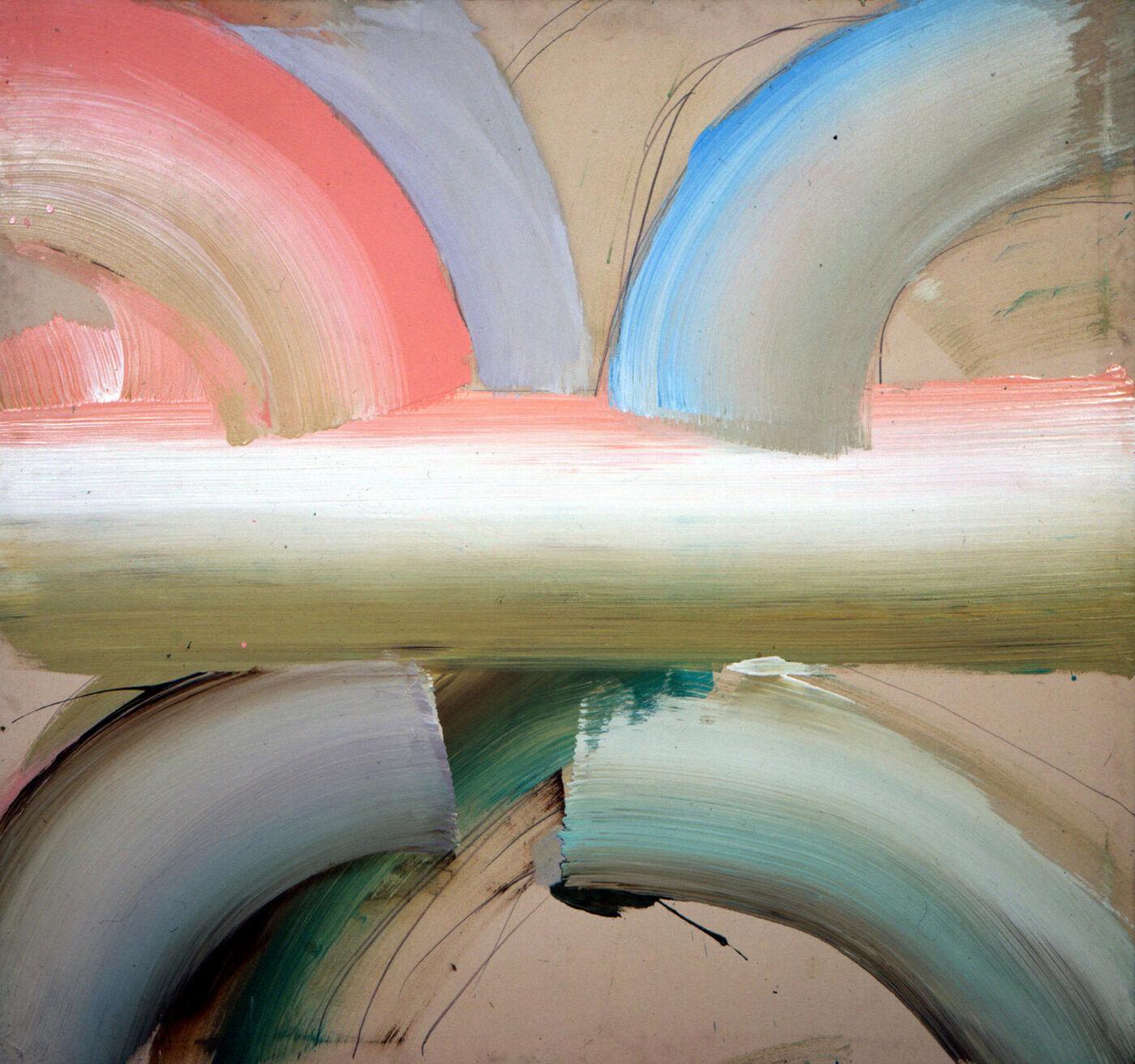
3/29 – Algorithmic Disciplines
Yan Huo
VALUE
noun: the regard that something is held to deserve; the importance, worth, or usefulness of something; a person’s principles or standards of behavior; one’s judgment of what is important
The reading Novel and History, Plot and Plantation helps us understand the core values that underline the distance between the intrinsic and what evolves to create that core. Using classic examples such as the ‘New Day’ ‘A House for Mr. Biswas’ the essay takes us across a plethora of ‘heroes’ who envision their position from their core values, their hierarchies with their regime of independence, rebellion and struggle against what is set out as a ‘plantation’ for their own intrinsic ‘plot.’
Its underlines a stage of distortion of the history of the system, where the plot, somehow leviates over the plantation, not attached to this base, with its own histories. But the distortion occurs with a sense of justice seperate from the base, influenced but seperate from the plantation system. A set of ‘heroes’ that first justify and enrich their values at the core, the other ‘heroes’ that defend a different set of values among another set sense awareness - those
“The rhetoric.. set the the slaves free in a world dominated by market relations, to fend naked for themselves, was the first sketch of monopoly capitalism ” — Sylvia Winter
Plantation
Novel History
Market Economy
Liberal Values
Duality of Values
that defend the system.
The image reflects this influence of the plantation system on the plot.
Dichotomy of Man and Nature
Cultural Guerilla
Historical Distortion
Generalisations
Aashwita Yadav
Plot
4/5 – Beyond Measure
INDIVUALISTIC VALUES
HISTORIES OF THE MARKET
SELFRELIANCE INDEPENDENCE RESPECT
ACCEPTANCE
ISOLATION
SOCIETY
HIERARCHIES
VALUES OF THE CORE
HEROISM PLOT
VALUES OF THE MARKET
Aashwita Yadav
SLAVE LABOUR
CROP ECONOMY
PLANTATION
Cover page of New Day Novel, 1949 and A House for Mr. Biswas Swimming, 1961

CAPITALISM

4/5 – Beyond Measure
STRUGGLE: Verb: make forceful or violent efforts to get free of restraint or constriction. “before she could struggle, he lifted her up”.
How do we confront our past matters and how we present the facts in our present even more. In our contemporary society where everyone can make up their own story it has become extremely difficult to address our current social, political and cultural issues. Even worse, we can not look at the past for examples that could help correct the mistakes of our present for us not to repeat them in the future. Our capitalist society is in constant friction with this idea and it finds itself trying to suppress our past to benefits those who want to keep the status quo the same. It makes it more difficult to open channels for communications so we can address race, gender and queerness.
We need to be able to discuss the impact colonization has had in other countries and the impact it has had on minorities across the globe. However, for this type of conversation to happen we need to truly separate our state and religion to clear any chance of preconceived judgment. We also need to have methods of
“The black man is not. No more than the white man. Both have to move away from the inhuman voices of their respective ancestors so that a genuine communication can be born”
- Frantz Fanon
reparations to address the damage and pain caused through history to so many minorities but for this conversation to start happening we should separate the color of our skin from history in our present to understand the damage our past has caused on others so history doesn’t have to determine how we act in the present. The real leap consists of introducing invention to life provided we can show solidarity with humanity so we can go one step further.
Alejandro Marin
Revolution
Status
Colonizer
Arms Freedom Struggle Fight Society
Cultural Assimilation
04/05 – BY WAY OF CONCLUSION

Julien 04/05 – BY WAY OF CONCLUSION
Isaac
Alejandro Marin
FABRICATION
noun: the act or process of fabricating; manufacture; especially an untruthful statement:
In “Novel and History, Plot and Plantation,” Sylvia Wynter (1971) argues that the novel form and contemporary racial capitalist societies have the same origins: both are caused by and result from the emergence of the market economy.
Wynter draws on theories of the novel and the history of Caribbean slavery to argue that the emergence of the novel form is closely tied to the colonization of the Americas and the development of plantation societies in the Caribbean. Wynter highlights how capitalism followed racial directions and the ways in which slavery provided the resources for the dominance of the market economy and consolidated a global order.
Colonialism was not just an economic or political project, but also a cognitive one, where non-Western peoples and their knowledge systems were categorized as inferior, in need of transformation or eradication. This process of cognitive colonization is evident the dominance of Western knowledge, and the ways in which it has been constructed, particularly in fields such as literature and history that have xcluded or fetichized the experiences and perspectives of non-Western people.
In this context, it is interesting to put Wynter in conversation with Mabel O. Wilson as they intersect in their discussions of colonialism, the plantation system, and the transatlantic slave trade.
Wilson similarly highlights how the enslaved Africans brought with them knowledge of cultivation, religious rituals, and community practices to the New World, which they grafted onto European and Indigenous cultures to form a unique Black culture. She notes how the provision ground gave a space within the dominating plantation system for Black communities to adopt spatial practices that formed a different ontological framework of the human that was hybridized but also radically different from the West’s hegemonic subjectivity of the self, witness, and citizen.
Wilson and Wynter show the need for a decolonized perspective to knowledge production, one that recognizes the complexity of human experiences and knowledge systems.
Ariana Bon
Hegemonic Capital History Citizen
4/5 – Beyond Measure
“The novel form and our societies are twin children of the same parents.” — Sylvia Wynter


4/5 – Beyond Measure
From Wilson (2019): Howardena Pindell, The Histories (Le Mancenillier), 2019; Exhibition view, Beth Sholomon Synagogue, Elkins Park, Pennsylvania
Ariana Bon
noun: 1. the main events of a play, novel, movie, or similar work, devised and presented by the writer as an interrelated sequence 2. a piece of ground marked out for a purpose 3. a plan made in secret by a group of people to do something illegal or harmful.
Sylvia Wynter’s “Novel and History, Plot and Plantation” delves into the intricate relationship between literary form and historical context in the quest for knowledge production. Wynter posits that the emergence of the European novel in the 18th century owes itself to a complex set of historical circumstances, including capitalism, colonialism, and the transatlantic slave trade. Through its plot structure, the novel champions individual agency and a linear sense of progression, aligning with the values and beliefs of this period while obscuring the violence and exploitation of slavery and colonialism. It is within the context of the plantation, where exploitation is normalized through discourses of race and civilization, that the novel’s linear time and focus on individual subjectivity reinforces the logic of extraction and domination. However, alternative literary forms that prioritize communal agency and alternative temporalities can challenge the novel’s hegemony and offer new perspectives. The plantation, as a site of colonial violence, raises
Clarisse Figueiredo
“History, then, these things that happen, is, in the plantation context, itself, fiction; a fiction written, dominated, controlled by forces external to itself.”
— Sylvia Wynter, 1971
the question of how deeply the colonial apparatus has penetrated the earth’s soil. Can we challenge the novel’s dominance and reimagine ways of producing knowledge beyond the historical constraints that have shaped our understanding thus far?
PLOT
Oppression Transatlantic
Colonialism Trade Plot
4/05 – Beyond Measure
Clarisse Figueiredo
Map by Antonio de Herrera Y Tordesillas, 1494
Collage with Map of Slave Voyages between 1500-1900

4/05 – Beyond Measure
INTERSUBJECTIVITY
a shared perception of reality between two or more individuals
“And still today they are organizing this dehumanization rationally” — Frantz Fanon
How to move forward? How to relate and strive towards an intersubjectivity that is not fixated in historical relations? What is the role of history, or historical awareness in shifting the way we relate to one another?
Fanon concludes Black Skin, White Masks with an argument suffused with notions of time, history, memory and the role they should and shouldn’t play in a future not doomed by Colonial subjectivity rooted in anti-Blackness. For him, history should not be a rationale for human behavior, perhaps only a guide for what we need to break free from in order to live freely in the future.
In concluding his work, Frantz is structuring it around temporality. As a look at how historical, economic relations (colonialism) are internalized. He discusses the formation of a bourgeois society, where things are ossified, when orientation to the future is foreclosed, and where narcissism is a state of being trapped in the past. Economic
Dan Miller
relations in the present demand transformation in order for a future free of present relations to be possible.
What are the conditions for intelligibility under anti-Black racism and colonialism? What is authentic communication? Perhaps for Fanon it is only through maintain and interrogatory relationship to others that we can approach the answers to those questions.
Alienation Reason Fixate History Future
Intersubjectivity
4/5 – Beyond Measure
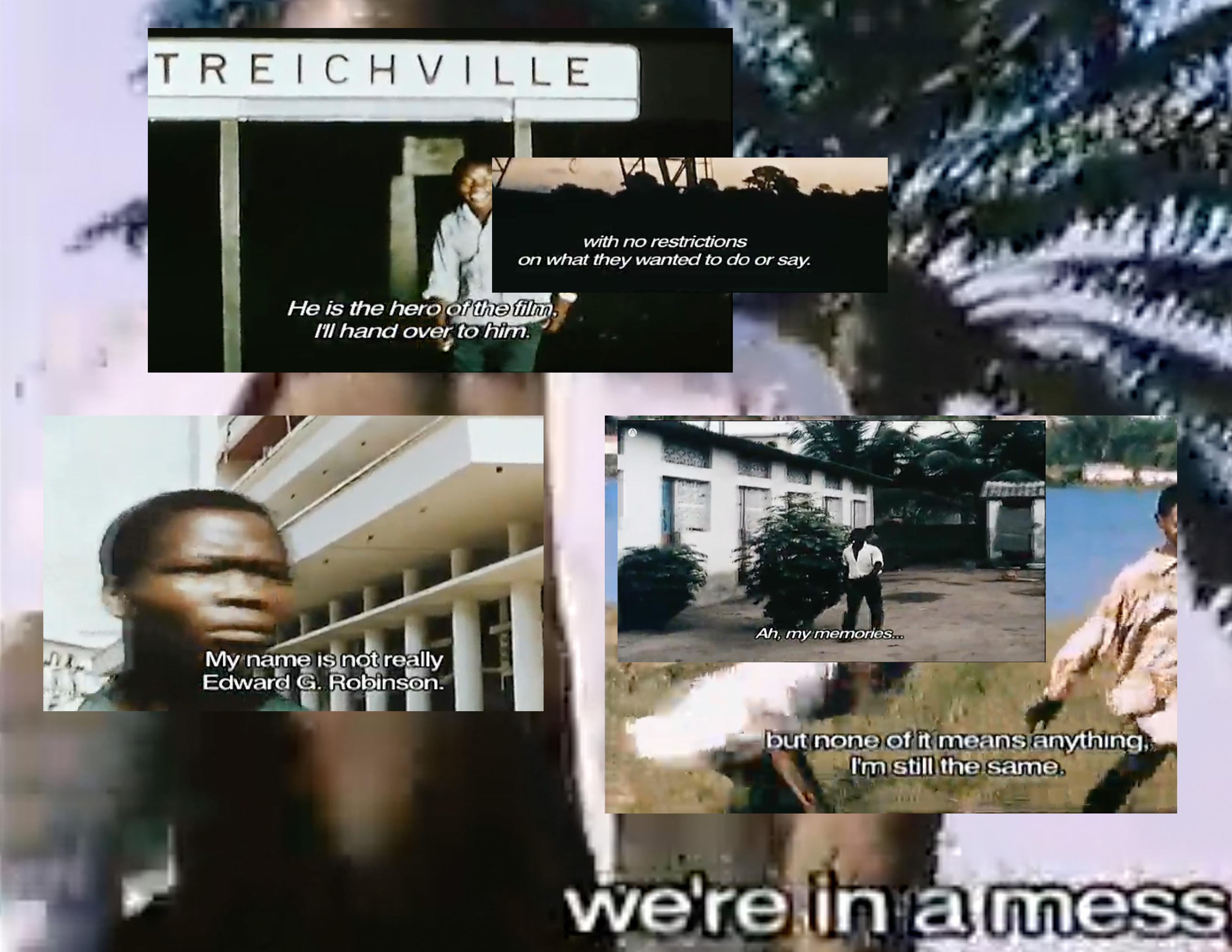
4/5 – Beyond Measure
Still images from Moi, un Noir (direted by Jean Rouch, 1957)
Dan Miller
Accountable Absence
A term coined by Harvey Sacks, referring to "something or someone who, though not present and not mentioned, plays a crucial role in what can be said" (40).
I have been following a thread throughout many of the readings attempting to intimately familiarize myself with the workings of exclusion. Especially in the image making practices of design, research, and art, what have historically been the tools in which a center is identified and a periphery is cut out?
The cartographic map, the axonometric, the perspectival view. The render, the dirty collage, the digital real. The forensic image.

I've sat in front of blanks pages waiting to fill them with text, acknowledging my own labor going through readings. What often occurs following are acts of essentializing, distilling so many thoughts into ___ words within __ hours in attempts to progress forward, to deepen my understandings. What does this in fact do for me?
I build up positions to break them down later, writing is rewriting so I have heard. But what if these words I type now and then and in the
present(s) that have past no longer try to build up anything? Nothing to break down, to cringe over. Do I remain center?
-Yes of course I do look at the words you just wrote. What does it look like to recognize and operate among multiplicities? polycultures, non-citizens, participation, anonymity, black Africa, folk cultures, non-linear temporalities, cyclicalites, ____, _____, _____
Where do we go if when we refuse to move forward?
I hope to stay where I am, cultivate relationships to those nearest and also willing to stay, and look after everything around us.
Exclusion
Zoological
Abstract-Primitive
Accountable Absence
Enclosure
Dialogic Interactions
Silent-Violent
Landscape=Picture
"History reveals itself only through the production of certain narractives”
4/05 – Beyond Measure
— Michel-Rolph Trouillot
David Zhang
Google Earth Pro, Kano Nigeria, 2008. (above)

Google Earth Pro, Kano Nigeria, 2022. (below)

4/05 – Beyond Measure
LITERATURE
Texts, writings about the specific landscape; the experiences or descriptions of those landscapes, in their or other languages, allowing people to frame their own perspectives of the same. Language is the beginning of communication and the continuation of evolution in cultures. The discussion of languages around the colonial and neo-colonial phases revolved around the definitions, acceptances, and rejections of languages of the Colonialists versus the Locals. The author, Ngugi, writes that choosing to express in the language of your own choice is “central to people’s definition of themselves” with respect to their environments and surroundings (p.4). This choice comes into existence when there is a question of languages contesting with each other. This choice also started to become a compulsion when Africa and certainly, most parts of the world were colonized and were segregated by English/ French/Portuguese speaking regions. Language was used as a tool to express power and dominance over the people. The author mentions the use of weapons on the battlefield, and the use of language as a weapon
“English was the official vehicle and the magic formula to colonial elitedom.”
- Ngugi wa Thiong’o
in educational institutions. The language of the Colonizers, eventually crept into the lifestyles of all demographic groups. This was all imbibed systematically through children, who were “being taught the lucrative value of being a traitor to one’s immediate community” (p.11). The more privileged colonized, were of the opinion that speaking English was the beginning of developed futures ahead. It was used as a weapon to instigate the already existing caste divide, through the glorification of the language. This notion of being accepted, and knowing English is still thought to be a mark of being “better off” in society.
Cut to today, in a globalized world, where English is considered to be the universal language; do we see this universalization as a marker of killing the individual expression of languages? Or do we see it as a transaction for ease in the functioning of the world? How do we now define the literature of a place?
Devanshi Gajjar
Language Culture Communication Literature Folklore
4/5 – Beyond Measures
Gajjar

4/5 – Beyond Measures Look around you. A sea of Brown. -Just like us. Being acceptable in the colonized rule. A scene from A Suitable Boy (Netflix,2020)
Devanshi
DISALINATION
noun: method by which race relations might become obsolete and whereby man will instead focus on the understanding of another man.
“I have not the right to become mired by the determinations of the past. I am not a slave to slavery that dehumanized my ancestors..”
— Fanon
We understand our place in the world through our family, community, region and nation. The colonizers have the perception of then colonized now free nations that link jazz to cannibalism (Pg 277) and India to snake charmers and call centers.
The European attitude of superiority can be cured by helping a man get rid of an unhealthy attitude through disalienation, where man focuses on understanding another man not their race or past. We refuse to be confined by our past but show solidarity to the past and not challenge a man’s humanity.
This clip shows the man refusing to be enslaved by the past where they point India to be a land
of snake charmers and rope tricksters, challenges the notion of what it means to be Indian in the modern world by informing about the accomplishments of India in space, technology, medicine, engineering and military, yet stays humble to humanity and demands the right of human behavior. He refuses the place given by them in society and refuses to the attempt to enslave fellow men.
This perfectly encapsulates ideas about decolonization with Anthony Bogues, Campt’s practice of refusal, Danila Yohannes’ and the American Artist’s dialogue of black visuality through themes of ancestry, nature, plurality, blackness and refusal. Being free from the constraints of white supremacy and being my own person.
Devanshi Pandya
Freedom Humanity Disalienation Refusal
4/5 – Beyond Measure
Still from Namastey London, 2007, Netflix

4/5 – Beyond
Measure
Devanshi Pandya
MAROON
Noun. A member of any of various communities in parts of the Caribbean who were originally descended from escaped slaves. - Oxford Dictionary
Mabel O Wilson writes about the installation The Histories (Le Mancenillier) of the artist David Hartt in the Beth Sholom Synagogue, a building designed by Frank Lloyd Wright with a particular lightning condition and glass roof. The installation uses orchids as the protagonist, both physically and performatively, by moving them throughout the time the exhibition was placed, complemented by visual documents of their migration and history. Through the text, Wilson unfolds parallels to historical transplantation, both plants and humans: the migration of the orchid as a colonized specie and the migration of people and institutions related to marroonage.
She discusses the existence of traces of migration or memory landscapes that give rise to hybrid identities shaped by migration. The concept of new migrating identities or species particularly intrigued and provoked me. I wonder where to draw the line between autochthonous and invasive, whether concerning species
“The melodic structure of Gottschalk’s “Le
Mancenillier” carries the sonic traces of the transplantation of Africans to Caribbean, of the migration of slave owners and their human property to America”. — Mabel O. Wilson
Transplantation Migration
Maroon
Memory landscape
Hybrid identities
Francisca Alliende
or humans. Eventually, most organisms or individuals originate from elsewhere, so at what point does migration define one’s self-definition? When we might eventually adopt new autochthonous species as part of our primary cultural identity? We are constantly on the move, evolving, and migrating, even more in the globalized era where frontiers are blurred. Change is a constant.
It prompts me of the Foreign Farmers installation at the Palermo Art Biennale by Leone Contini, which depicted a growing pergola of vegetables introduced by migrant people who adapted to new conditions, mirroring the demographics in the city. The seeds symbolize the journey and history of migration, which has become the identity of Palermo. This relates to the text in questioning how migration creates new identities based on traces of transition and hybridization and on the process of self-definition.
4/5 – Beyond Measure
Foreign Farmers over Quinta Normal greenhouse in 1901. Enterreno Chile Collection, 190. Santiago, Chile.
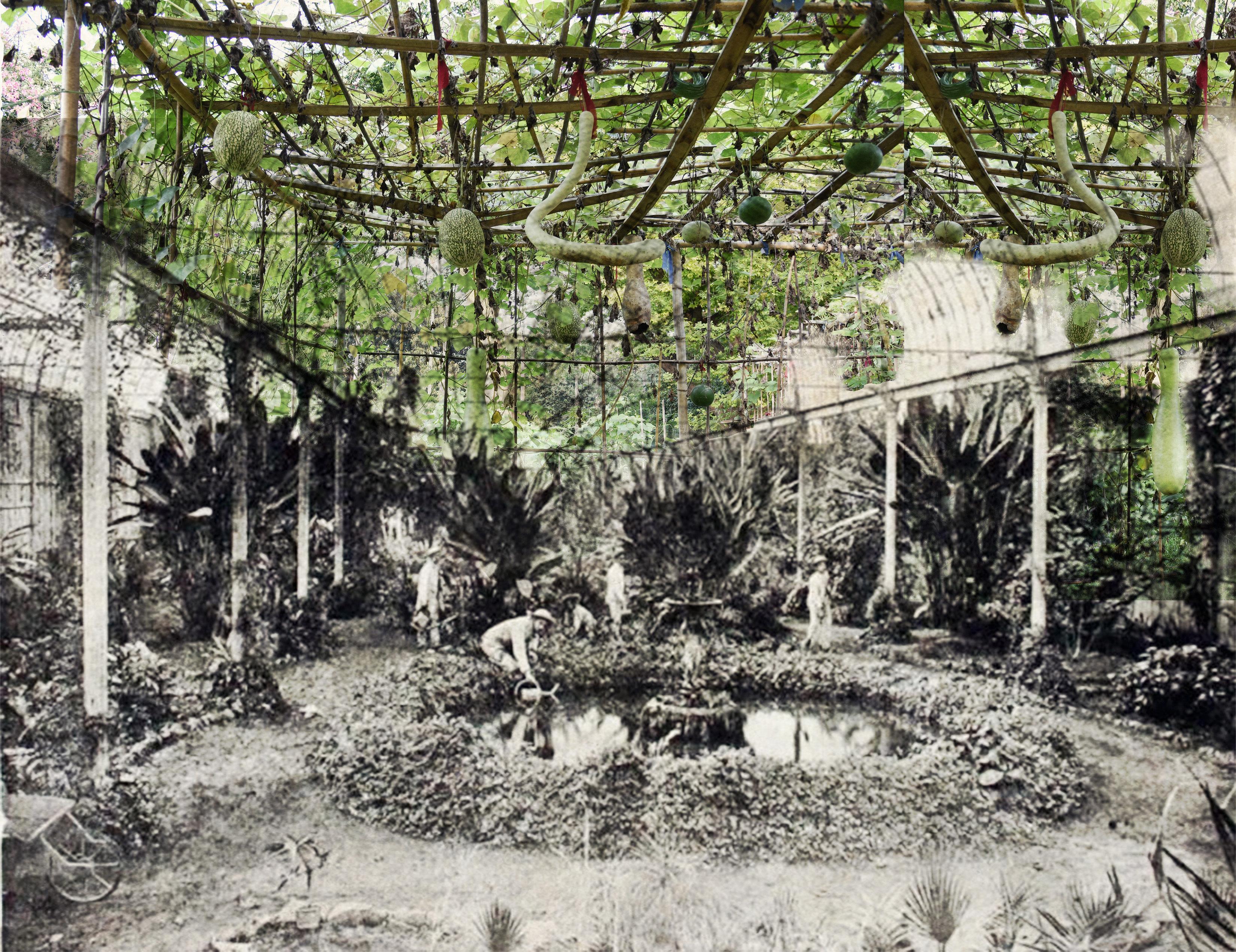
4/5 – Beyond Measure
Francisca Alliende
PLANTATION
a large farm or estate in a tropical or semitropical zone, for the cultivation of cotton, tobacco, coffee, sugarcane, etc., typically by enslaved, unpaid, or low-wage resident laborers
Sylvia Wynter’s analysis of the emergence and significance of the novel form in the Caribbean during the period of plantation slavery sheds light on the complex social and economic relations that shaped Caribbean societies.
According to Wynter, the novel was uniquely suited to depicting the power dynamics of the plantation system, which not only exploited enslaved Africans but also subjugated other marginalized groups, such as poor whites and women. This system was not just an economic or social arrangement, but a deeply entrenched cultural institution that shaped the identities and worldviews of both colonizers and colonized.
Wynter’s work highlights the role of the plantation system in constructing the racial and gender identities that continue to shape Caribbean societies today. The plantation, in this sense, can be seen as a “plot” that structures the narrative of Caribbean history and culture. This narrative, however, is not limited to the Caribbean. The reading also raises questions about the contradiction of capitalism and the role that plantation and slavery played in building the current capitalist and political system in Western countries.
“The plantation-societies of the Caribbean came into being as adjunct to the product, to the single rop - the suger cane - commodity which they produced. ” — Sylvia Wynter
Furthermore, it is worth noting that the culture and art developed by enslaved African people have been commodified and exploited by Western culture in capitalism. This exploitation continues these days, where cultural products are often taken out of context and sold for profit without regard for their origins or cultural significance. Thus, the legacy of the plantation system and slavery is not limited to the past but continues to shape the present-day society, economy, and cultural landscape of the Caribbean and beyond.
Gyeom Chung
Plot
Capitalism Plantation Slavery Free Trade
4/4 – BEYOND MEASURE
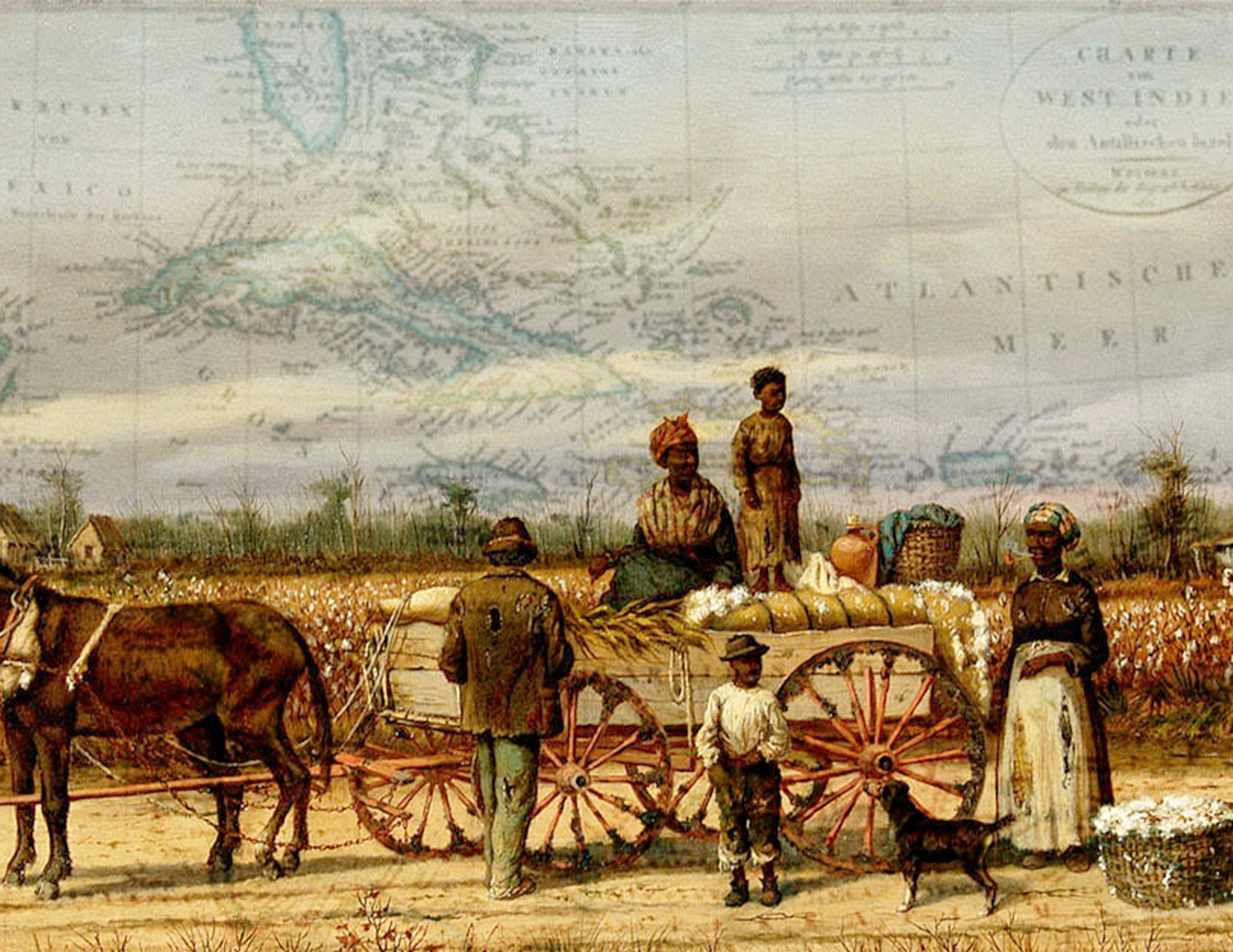
4/4 – BEYOND MEASURE
“Cotton Plantation on the Mississippi” by William Aiken Walker Collage with the Caribbean Map
Gyeom Chung
IMMORTALITY
unending existence
- Oxford Languages
Olu Oguibe is able to reflect into a particular facet of Al Anatsui as a sculptor, not as one that creates objects but also works through matter, in this case, clay.
Clay is able to denote permanence and transcendence, this can be accessed through its malleability and fragility. It becomes an element that is both perishable and resilient at the same time.
In his sculptures Anatsui is able to evoque the special quality of clay, as its stages of malleability and rigidity represent natural processes of formation and maturation.
Clay’s collapse represents its infinite possibilities, although broken, when it is unable to return to its original form, it is able to pass on another existence.
“‘ A broken pot may never regain its wholeness in terms of its original form, but at the point of its fracture appears a new objectivity, a new entity”
— Olu Oguibe
ifestation of human life, as we are unborn we originate within the earth and once we die we return to it. The soil is able to become a symbol of life cyclicity.
Through his works of “broken pots” Anatsui evoques fragility, destruction and continuity, as they shatter, they don’t disappear, instead they remain, they become a symbol of transcendence, continuity and infinity. Anatsui is able to make a simple object talk infinities, it not only represents the material qualities and its timelines but our human existence as well.
Sculpture Immortality Transfiguration Clay
Anatsui work is able to represent the ethereal qualities of clay, as an element that powerfully connects to the soil. It can even become a man-
Javier Flores
4/05 – Beyond Measure
El Anatsui, Gbeze, 1979, Ceramic, manganese, El Anatsui
Image Credit: El Anatsui and Jack Shainman Gallery, New York

4/05 – Beyond Measure
Javier Flores
Collaged image from “The Bay State Banner” online newspaper in Boston. Artwork: “Akua’s Surviving Children” (1996)

exhibited at The October Gallery.

4.05 – Beyond Measure
Khadija ann Tarver
TRANSLATION
An expression of one culture into another
“In my view language was the most important vehicle through which that power fascinated and held the soul prisoner. The bullet was the means of the physical subjugation. Language was the means of the spiritual subjugation” (Thiong’o Ngugi, 1986, p. 6)
While Thiong’o Ngugi in Decolonizing the Mind describes thoroughly the means by which language becomes a form of spiritual subjugation where new forms of colonialization persist in the neocolonial sphere, it is nonetheless important to note other systems,s of colonial powers that do not come across in their violence totality in relation to the language use. The Hebrew spoken language is somewhat considered as a pride- a multicultural meshed slang of different tongues and cultures, a sign of plurality and acceptance. In it, a great number of Arabic words are so culturally embedded- they perform as somewhat of a peace signal between the nationalities. But as Ngugi argues in the text, one translation of culture, detached from its context, cannot be translated fully, as it is missing its significant spiritual symbols. In that process another form of aesthetic and anesthetic subjugation emerges; The incorporation of Arabic
culture into the Hebrew language, here, is simply a facade of peace, that is devoided from its significance due to segregation and the construction of fear and otherness.
In the work of Liron Lavi, Aravrit (‘Arabrew’ in a direct translation), seen in the image, is the consolidation of the two languages, Hebrew and Arabic, into one. It refers to the potentialities of an enmeshed free and equal culture, a utopian dream born out of a student design project. While it does make one dream of a different world, we must recall another text brought into this class; Vistas of Modernity by Ronaldo Vasquez, which asks us to reflect upon the what, the who, and the how, in order to address questions of decoloniality. Dissecting this project, it is evident to notice the origins of the author, the school, and the context. Then, we might ask ourselves- is this another form of coloniality?
Lealla Solomon
Aesthetics Language Power
Coloniality
04/05 – Beyond Measure
 Aravrit, Liron Lavi
Aravrit, Liron Lavi
04/05 – Beyond Measure
Lealla Solomon
Ornament
a thing used to make something look more attractive but usually having no practical purpose.
“For the connoisseur gardener the cultivation of foreign and rare plants indicated class and cultural status, as did the ability to purchase foreign goods like coffee, tea, sugar, and fine silk. Upper-class white Europeans, typically men, prized and cultivated orchids for their rare exotic beauty—a sign of both their mastery and masculinity.” Despite the reduction of Africans to Negroes and Blacks, as Mabel Wilson puts it, they still carried the knowledge of cultivation and use of land with them to the New World of the Caribbean, North, and South America. Estimates between ten and twelve million enslaved Africans were brought to the New World to fill labor roles on coffee, sugar, indigo, tobacco, and rice plantations. In addition, they cultivated smaller plots of land and grew crops like yams, okra, cabbage, cassava, potatoes, roots, herbs, and medicinal plants for survival. Despite this history and rich knowledge of land, statistics from the American Society of Landscape Architects indicate that a little over 2 percent of landscape architects in this country are African American and according to the United States Department of Agriculture 45,000
Robert Louis Brandon Edwards
out of the 3.4 million farmers in this country identify as Black. The connoisseur gardener of yesterday and the farmer and landscape architect of today all look the same, white and typically male. Why is this? Is it because of racialize organization, control, and containment? Is it because of migration and forced mobility? They were once here. They were once there. But, where are they now? And if connoisseur gardeners flexed with the cultivation of foreign and rare plants, how do other people flex their mastery and masculinity today?
Orchid Organic Organization Ornament Control Containment
04/05 – Beyond Measure
“The consumption of the colonial commodity plays a central role in the aesthetic practice of control and containment.” – Jill Casid


04/05 – Beyond Measure
Robert Louis Brandon Edwards Jay-Z and Beyonce’s $28 Million Rolls-Royce Boat Tail in a garden of rare flowers and birds; conceptual drawing of the Rolls-Royce Boat Tail.
FRAGMENT
noun: a small part broken or separated off something.
“Only in the notion of unmediated perpetuity is futility shown to reside. If rupture, as symbolized by the breakage of earthenware, signifies a point of termination, the end of a period of wholeness, what emerges is not transition through death to nothingness, as Enekwe notes, but the split between death and nascence.”
The West African Artist, Anatsui’s philosophy of looking at the earth clay objects, mostly pots, in his early career, which are majorly the everyday objects of daily use to spiritual or ritualist use as sculptures.
That these objects carry a metaphysical energy of the embodied memory in them. Clay as a material that fragile, malleable, porous, reflect - something that inspires him. He constantly, metaphorically, relates it to the human existance. As delecate the object is which on death or decay or old and obsolete heals into something new as young and vibrant. His works on understanding the broken fragments as entities themselves, and not a modernist philosophy of look at fragments as parts of whole.
He appreciates the characteristics of the material that it will not be what he wants it to be, but by virtue of fluidity and condition - mend.
Rutwik Karra
A fragmented sentance in itself, making a whole with individual identity.
“Broken part knows no repair.”
Trasposition Broken Fragment Whole Impermanence
4/5 – Beyond Measure
— Olu Oguibe
‘Try. Fail. Never Mind. Try hard. Fail Better’
Rutwik Karra

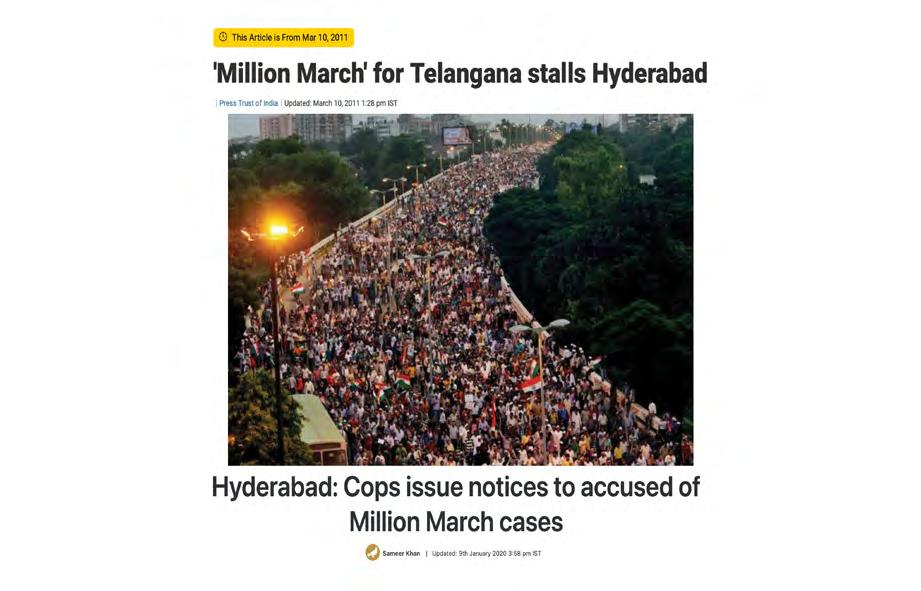
My Weekly Responses as fragments of an identity of it’s own, trying to blend into something else, with an identity of it’s own, a renewal
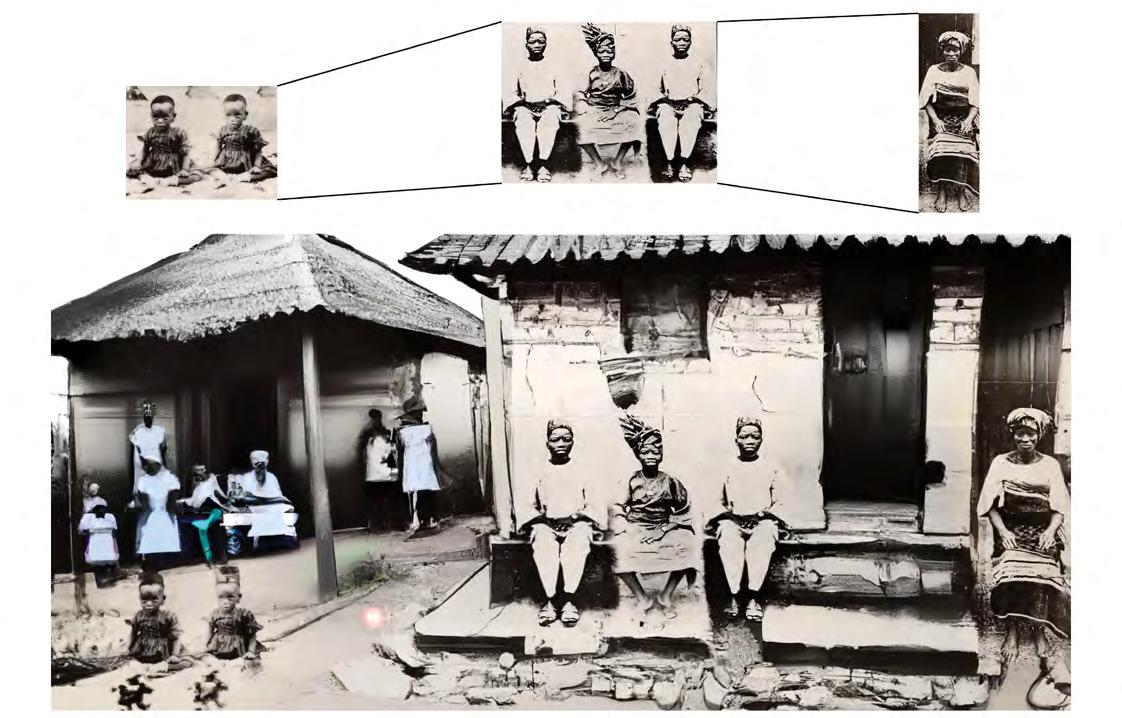



4/5 – Beyond Measure
(1) the art of discovering temperament and character from outward appearance
(2) the facial features held to show qualities of mind or character by their configuration or expression
(3) external aspect
While Hartt’s The Histories (Le Mancenillier) was my interpretation of an optimistic vision, I understood that Mabel Wilson’s exploration of the exhibition implicates migration, colonization, exploitation, and transplantation. Not that Hartt’s Le Mancenillier does not imply some of these aspects. However, its romanticism/ aestheticization obscures the harshness or violence of migration and transplantation. Nature has become an apparatus to transform urban/constructed spaces. Simulations of nature, or the adoption of nature’s aesthetics are a response to better urban spaces. Greening as a practice is not necessarily rooted in nature itself but rather in nature through an urban lens. The use of orchids/natural elements (or their simulations) here represents and appreciates a space that hosts those who were once migrants. However, in urban design/ planning and architecture nature is used to remedy urban problems. Even in arid places, designs that include greening disregard these places’ abundance and challenge conventional understadnings of deserts. This prompts me to think of developments in deserts and the deployment of greening in such developments.
The extraction from and transformation of deserts highlights how architecture builds but also destroys and contaminates among other harmful practices and consequences as a result of narrow and western-centric understandings of space and ecologies. “
“For what history is,” explains Michel-Rolph Truillot, “changes with time and place, or better said, history reveals itself only through the production of specific narratives.”
--- Mabel Wilson, quoting Michel Rolph Truillot
Sarah Abdallah
physiognomy
noun
transplantations foliage 04/05 – Beyond Measure

04/05 – Beyond Measure
Sarah Abdallah
Aerial view of lunch tables for Cooking Sections’ Climavore: On the Movement of Deserts, Al Mureijah Square, Sharjah, March 2017.


“In the world I am heading for, I am constantly creating myslef.”
a person as distinguished from an animal or an alien.
Fanon’s vivid and evocative writing style gives a glimpse into the lived experiences of Black individuals in a racist society, shedding light on the deep-seated internal conflicts and struggles they face in reconciling their blackness with the white-dominated world.
Fanon emphasizes the internalized racism and self-hatred that result from the internal conflicts and identity crises faced by Black individuals who are constantly subjected to the white gaze and internalize the dehumanizing messages of white supremacy. He critically examines the damaging effects of colonialism on the psyche of Black individuals, exposing the insidious nature of racism and the ways in which it permeates all aspects of life, including language, culture, and relationships.
It is interesting to consider Fanon’s words in conversation with Tina Campts’ or the American Artists work and even Belina Kazem-Kaminski’s that shouts the idea of refusal and revisiting Black
history to reconstitute the past, whereas Fanon strongly puts forth actions of revenge and rejection of the same. “I am not a slave to slavery that dehumanized my ancestors”, he exclaims.
This read where Fanon emphasises on actions of revenge and rejection interestingly made me reflect on Tina Campts’ ideas of refusal. This read challenges the notion of “Blackness” as a mere biological identity, asserting that it is a social construct imposed by white supremacy. He calls for a rejection of the internalized racism and a reclaiming of Black identity on one’s own terms, free from the constraints of white dominance. Fanon’s passionate plea for self-acceptance, selflove, and collective liberation resonates strongly with modern-day discussions on race and identity.
Vir Shah
Human
human subjectivity objectivity (de)alienate consciusness
4/05 – Beyond Measure
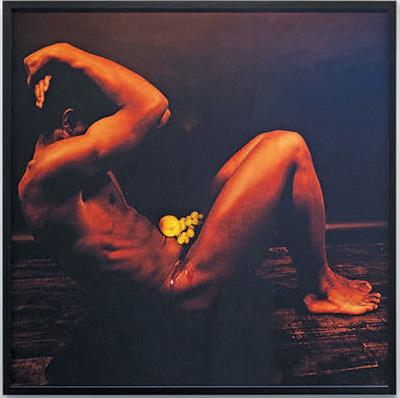
 Vir Shah
Vir Shah
4/05 – Beyond Measure
Rotimi Fani-Kayode, Nothing To Lose XII (Bodies of Experience), 1989
the process of increasing in physical size. "the upward growth of plants"
Homes made of wood are prized for their sustainability because the carbon dioxide “locked up” by the trees is fixed in the structure of the building rather than re-emitted when the trees die.
Trees are the quiet guardians of humanity. They spend their lives breathing for the planet, supporting the entire ecosystem and providing the key elements for food, shelter and medicine. Their bouncy branches lift up the sky and our spirits. Their roots are as old as time itself, and thus a world without trees would be without life.
In order to continue to survive, humans must coexist with trees, while providing them with a favorable environment. In Germany, an organization created Baubotanik, which means building with living plants. The organization, led by architect Dr. Ferdinand Ludwig, was founded by the ancient art of plant shapes.
“If you don’t respect the laws of growth in your design, these plant structures won’t grow as you expect them to, or they will even die.”
Only by collaborating with nature can we create a passion for our world and our environment, and can we truly move towards a sustainable, balanced future.
Yan Huo
GROWTH noun
Growth Natural Collaboration
“Such living structures can sustainably fight soil erosion while providing oxygen, nutrients, shelter and dwellings."
4/05– Beyond Measure
—Ansel Oommen

4/05– Beyond Measure
“Baubotanik: Plant-Inspired Design for Life,”
Yan Huo






 Ariana Bon, Measuring andTraveling, 2023.
Ariana Bon, Measuring andTraveling, 2023.










 Jeremy O. Harris, Slave Play, 2018; Denise Da Silva, Diagram 1 - Unpayable Debt, 2022
Jeremy O. Harris, Slave Play, 2018; Denise Da Silva, Diagram 1 - Unpayable Debt, 2022
 Bernd and Hilla Becher, WaterTowers, 1970 - 2010
Bernd and Hilla Becher, WaterTowers, 1970 - 2010























 - Domingos’ Inquisition case file. It reads: “Trial of Domingos Alvares, black slave of José Cardoso de Almeida born on the Mina Coast and resident in Rio de Janeiro.” Tribunal do Santo Ofício, Inquisição de Évora, Processo 7759, fl. 3. Courtesy Arquivo Nacional da Torre do Tombo, Lisbon, Portugal
- Procession of the Auto da Fé through Lisbon. Lithograph from Esteves Pereira and Guilherme Rodrigues, Portugal: diccionario historico, chorographico, biographico . . . (Lisbon: João Romano Torres, 1907),
- Domingos’ Inquisition case file. It reads: “Trial of Domingos Alvares, black slave of José Cardoso de Almeida born on the Mina Coast and resident in Rio de Janeiro.” Tribunal do Santo Ofício, Inquisição de Évora, Processo 7759, fl. 3. Courtesy Arquivo Nacional da Torre do Tombo, Lisbon, Portugal
- Procession of the Auto da Fé through Lisbon. Lithograph from Esteves Pereira and Guilherme Rodrigues, Portugal: diccionario historico, chorographico, biographico . . . (Lisbon: João Romano Torres, 1907),


 Lealla Solomon
Lealla Solomon
























 Brasil, 1984 - 2013 - 2023
Brasil, 1984 - 2013 - 2023
 Collage of Three Civic Data Design Lab Projects on Nairobi, with cutouts
Collage of Three Civic Data Design Lab Projects on Nairobi, with cutouts







 John Max
John Max

 NYT Article on Seneca Village and Central Park Proposal, 1856
NYT Article on Seneca Village and Central Park Proposal, 1856

















 Arthur Jafa, Apex, 2013
Arthur Jafa, Apex, 2013
 Palimpsest collage with photo by ©equinox27, 2023.
Palimpsest collage with photo by ©equinox27, 2023.












 Lealla Solomon
Lealla Solomon














 Kehinde Wiley, “Shantavia Beale II”, 2012
Kehinde Wiley, “Shantavia Beale II”, 2012








 Whisper Archive, Collage with photos by Aline Motta
Whisper Archive, Collage with photos by Aline Motta









 Figure 1.1 in Imani Perry’s Vexy Thing, Map illustrating Sir Francis Drake’s West Indian voyage, 1585-86. Illustrated by Baptista Boazio.
Figure 1.1 in Imani Perry’s Vexy Thing, Map illustrating Sir Francis Drake’s West Indian voyage, 1585-86. Illustrated by Baptista Boazio.
 Ramat Hasharon photo archive, and the National Library of Israel Archive
Ramat Hasharon photo archive, and the National Library of Israel Archive






































 Benjamin Netanyahu in various arrangements.
Benjamin Netanyahu in various arrangements.



























 Aravrit, Liron Lavi
Aravrit, Liron Lavi












 Vir Shah
Vir Shah
